What to Wear in Peru
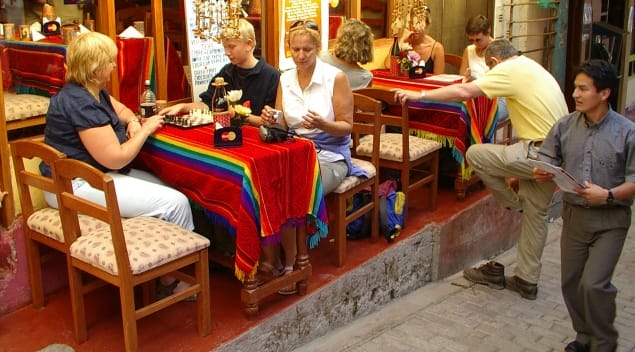

General Style Tips
- When you're traveling around in Peru, it's best to dress in layers that can be shed as the day really heats up.
- light wool is a good choice to wear against your skin as it naturally helps to regulate your body temperature . It keeps you warm in the cold, wicks away moisture when it's hot, and doesn't retain odours – even after prolonged wear.
- Ensure you bring a versatile travel jacket. We love the SCOTTeVEST travel jacket because it has over 23 pockets, removable sleeves and RFID protection.
- At the high altitudes of Cuzco, Machu Picchu and Lake Titicaca, the temperature can plummet at night so a fleece is key.
- Leave your valuables at home , you really won't need them.
- If you plan on visiting an upscale restaurant in Lima or any other large city, then pack a smarter outfit – it's not essential but you will fit in and feel more comfortable.
What Shoes To Pack
- Good quality, well worn-in rubber-soled walking shoes are essential.
Clothing Tips for Women
- A pashmina is a versatile piece that will dress up any outfit, and a few pieces of costume jewelry can add a bit of sparkle if you need it.
- If visiting any religious sites be sure to cover your shoulders and bare legs – your pashmina can come in handy for this too.
Clothing Tips for Men
- For versatile and stylish casual wear , try the Madda Fella range of shirts, shorts and polos.
- For great versatile travel jackets with multiple pockets including RFID security options, we love the SCOTTeVEST range.
Pack for the Weather
- On the coast in winter (June, July, August and September) it can be cool. At the same time in the mountains it can be warm and sunny during the day but very cold at night. Dressing in layers will help you cope with the temperature changes.
- In December, January, February, March and April you will experience heavy rain in the mountains and jungle so a waterproof raincoat is a must. The opposite is true on the coast.
- We love the Weather+ app – it gives an accurate 6 day forecast for day and night, which when you're planning from home is really helpful. You can keep all the places you've been to too – a nice way to remember your trip 🙂 Download for iPad/iPhone or Android
Regions of Peru
- Some areas like Nazca are very dry indeed, so you will need lots of moisturisers and lip balm.
- Machu Picchu is in cloud forest so the humidity is greater. A lightweight waterproof is a good idea, especially if you are going to get up early to see the sun rise.
- Cusco will undoubtedly mean lots of walking to take in the sights, and comfortable shoes are a must (we love Hotter shoes ). Because of its altitude it will be cooler at night, so you will need your fleece. Up this high you will be rewarded with views of the Milky Way that you feel you can reach out and touch.
Other Things To Pack
- Once you are outside of large cities like Lima, you really have to be sure you take everything you need including sunscreen (we love the Riemann P20 range for 10 hour protection), insect/mosquito repellent , adapter plugs and converters for electrical appliances.
- As laundry facilities may be few and far between on your travels, take a small supply of detergent for hand laundry .
- A microfiber travel towel is another great item to pack – these are designed specifically for trekking : they fold really small so you can accommodate a larger size and they dry really quickly too.
- Don’t drink or even brush your teeth in tap water . Consider taking a LifeStraw Filtration Water Bottle .
- A bag or soft-sided rucksack is a more practical option than hard cases when traveling around the country, and using packing cubes can help to keep your belongings tidy whilst compressing the volume too.
- Combine your bag with a fold away day sack that will carry your essentials on day trips .
- Look after your mobile phone with a phone bunjee – it protects against loss, theft and damage and is especially useful in busy cities or when trekking.
- To use electrical gadgets you may need a travel adapter plug , and also a step down voltage converter if your devices are not designed for the local voltage (220V) .
- Avoid paying unexpected baggage fees – use an accurate luggage scale to ensure you keep within the weight allowance. Don't forget to leave room for souvenirs on the way home! Good buys include alpaca clothes , wooden games and ceramics . Or look out for Pisco , a traditional Peruvian grape vodka (buy this in local shops, it's much cheaper than at the airport). Just remember any liquids will need to be packed in your checked-in luggage.
© Copyright 2019 | What To Wear On Vacation | All Rights Reserved

The Ultimate Peru Packing List
Peru is a country with so many different climates and reasons to visit, and I packed my bag to the brim with everything I would need. Fortunately with this last trip, we were mostly in the highlands and Andes, but I’ve had to keep other considerations in mind on my previous adventures there– the Amazon requires totally different gear! These are all things to know when traveling to Peru.
I thought I would break down what you would need down by where you are going and so you can look by area for your Peru packing list. If you’re curious about what to wear in Peru, this list should have you covered!
What is the weather in Peru like?
Visiting Peru means you have to pack a little bit beforehand in order to make sure you have the right items. Because Peru in July can be vastly different than Peru in January, you’ll want to look at the local weather report at least a few weeks in advance in order to see what it might be when you’re there. Be prepared for temperatures to fluctuate.
Before you ask, “Can I wear shorts in Peru?” (which, yes, you can), make sure you have some solid base layers as well as a light t-shirt for both types of weather. It can also vary depending on region. If it is rainy in the Amazon, it can be completely different in the Andes. This is why I recommend having a wardrobe that basically covers every type of weather. That way you aren’t wondering what to bring to Peru when you’re in the middle of a rainstorm!
What is the best month to travel to Peru?
Winter in Peru is usually the best time to go. Because Peru is in the Southern Hemisphere, Peru in June, Peru in July, and Peru in August are the most busy and touristy times. If you don’t mind the crowds, then this can be a great time to visit. However, I recommend checking it out Peru in April and May instead since it isn’t nearly so busy and you might get deals on certain activities. Likewise, Peru in October and Peru in November are fabulous times to visit, as well. Just be prepared for a bit more rain!
Peru in December and Peru in January can be very hot and while they still run tours to Machu Picchu, it might be a little too humid to really enjoy your experience. This is summer in Peru, and though it is usually not as busy, you might have a harder time finding the right tours within your budget.
What plug adapter do I need for Peru?
Your Peru electrical adapter will be the same as you use in the United States (yay for traveling in South America)! This makes it easy for U.S. travelers. You might occasionally run into the European, two-pronged variety, but for the most part your Peru power adapter will be a standard 220 voltage.
The best Peru packing list
What bag should i bring to peru.
On almost all of my travels, I take along an Osprey Ariel 65 . This is the perfect backpack for Peru, and the new models also offer a detachable daypack ideal for your hiking adventures. There are also some smaller options from Osprey that I would recommend such as the Farpoint 55 and others that are super high quality (this model is even small enough to work as a carry-on). Other companies also make great bags, just make sure that they have a lifetime guarantee since backpacks like this are an investment. Keep in mind that you will want a bigger bag backpacking Peru than you will if you are only there for a week or two. Much of this will depend on how big your Peru packing list is.
You’re also most likely going to want to have a daypack that can handle a few days on the trail. I recommend looking into something lightweight if you aren’t planning on carrying a lot of things. On the other hand, if you plan on bringing your camera, water, additional snacks, and more, you want something with a bit more support.
I recommend the Osprey Daylite Daypack for those not planning on carrying a lot. If you want more support, you should consider something with a hip belt like the Osprey Talon for men and the Osprey Tempest for women. Your packing list for Peru should take into account whether you are planning on having both your daypack and a backpack or if you will have another suitcase in tow.
What to pack for the Andes
If you’re headed out on the Inca Trail or you are planning on attempting another hike, then you’re going to need some specialized gear. I recommend packing for multiple times of weather, including rain (sometimes even snow!), hot weather, foggy weather, and on and on. Being prepared is the most important thing when hiking in Peru. Even if you choose to skip the trail (which, don’t!), having some layers will help you stay comfortable. Your Inca Trail packing list is going to be a little bit different than it would be for other parts of Peru.
You can also grab any of these items in Cusco before you head out on your adventures, so if you’re missing something, don’t panic! If you’re not sure what to buy in Peru and what to take with you, you can find almost everything you need in the cities. You can stop at one of the many stores available that offer these items. If you choose to pick something up in Peru, keep in mind that you can haggle at many places–just not the name brand stores that you would recognize in the United States!
Here’s what you should bring for your Machu Picchu packing list:
- Base layer top ( him / her )
- Base layer pants ( him / her )
- T-shirts ( him / her )
- Hiking pants ( him / her )
- Yoga pants ( her )
- Shorts ( him / her )
- Sweater or sweatshirt ( him / her )
- Tennis shoes ( him / her )
- Sandals ( him / her )
- Gloves ( him / her )
- Wool socks ( him / her )
- Hiking boots ( him / her )
- Hiking poles
- Reusable water bottle
- Lightweight, waterproof coat ( him / her )
- Raincoat shell ( him / her )
- Fleece jacket ( him / her )
- Sport socks
What to pack for the Amazon
The Amazon has a bit more predictable weather, but there is the chance of rain–a lot of rain. Amazon rain gear is definitely needed, Bring clothes that dry quickly and wick water well so you don’t constantly have to find yourself changing clothes. Some of the same items from the above list will also work well while you are there, which makes it a lot simpler to pack when you know you’re headed to both spots! For this Peru packing list, making sure that you have a variety of options is necessary for your time there.
- Bathing suit
What to pack for Lima and the desert
Welcome back to the city! Lima has an entirely different climate than either the Amazon or the Andes, and its relaxed beach vibe means you have the opportunity to wear your favorite sundress or go for a swim in the nearby ocean. In your Peru packing list, you’ll want to have items for both rainy days (since Lima is so close to the ocean) and hot days, as well.
- Fleece jacket if you decide to visit the desert ( him / her )
What to pack for Lake Titicaca and Arequipa
The highlands offer some amazing hiking, so you will want some of the same items you had in the Andes. However, the hikes there are usually day hikes, meaning you won’t need base layers, sweaters, and fleece jackets. In fact, it can get quite hot in this area, so consider bringing an extra pair of shorts and another t-shirt instead.
Do you have any other recommendations for items that should be included in this Peru packing list? Did this help you decide on what to pack for Peru?
Make sure to check out more of my guides for Peru travel tips!
Like this post? Save it for later!

Want more information on Peru? Check out these articles:
- The Ultimate Guide to Lake Titicaca
- The Ultimate 3-Day Itinerary for Cusco, Peru
Best Things to Do in Cusco, Peru
- The Best Books About Peru You Have to Read
Alex is the founder of Alex on the Map, a site devoted to national park guides, hiking, climbing, and enjoying your outdoor adventures. After growing up near Glacier National Park in Montana, Alex now spends summers in the American West hitting up the trail with her husband and dog.
Her work has been featured in Fodor's, the Huffington Post, Bustle, and many more. She has also been featured in publications such as The Washington Post, CNN, and USA Today.
Similar Posts

Best Places for Nightlife in Lima, Peru
Food isn’t the only aspect of South America that’s changing, the nightlife in Lima, Peru is too. As the city evolves into a hip spot for backpackers and millennial travel, drinks are also taking on a new life and you can find plenty of place to sit back and taste a hand-crafted pisco sour. Malabar…

Cusco isn’t just considered the town by most of the locals. When you say you are headed to Cusco, what you really mean is that you will be there a few days before you begin the arduous hike to Machu Picchu via the Inca Trail. However, these aren’t the only reasons to check out this…

Favorite Peruvian Dishes You Must Try
When you think of Peru, what comes to mind? You think of the ancient Inca ruins and high mountains vistas. Step away from the popular attractions and explore the culinary side of Peru. Renowned for being the culinary capital of Latin America, there’s a lot happening right now in Peru when it comes to cuisine….

Where to Stay in Aguas Calientes, Peru
What Aguas Calientes doesn’t have in nightlife it more than makes up for in hotels. You’ll find plenty of spots to rest your head after a strenuous day, and in a variety of prices, as well. Be warned that the cost of a room can vary greatly from one season to another. During the summer,…

The Ultimate Guide to Lake Titicaca, Peru
Daniel and I decided to check out Peru and Bolivia on our honeymoon, and we found that conquering Lake Titicaca without some sort of plan was overwhelming. However, once we had figured out the best things to see and do, we could simply enjoy our time there. It was a huge highlight of our trip,…

16 of the Best Places for Nightlife in Cusco, Peru
Updated May 2020. The first time I went to Peru, I went with a bunch of partiers bent on seeing the best of Cusco’s nightlife. This city is hopping when it comes to amazing clubs, bars, and delicious drinks, and I would highly recommend that you spend at least one night enjoying what the…
Leave a Reply Cancel reply
Your email address will not be published. Required fields are marked *
Save my name, email, and website in this browser for the next time I comment.

Inca Trail and Machu Picchu Tours Packing List
Hiking , Packing Lists , South America Packing Lists , Travel Packing Lists
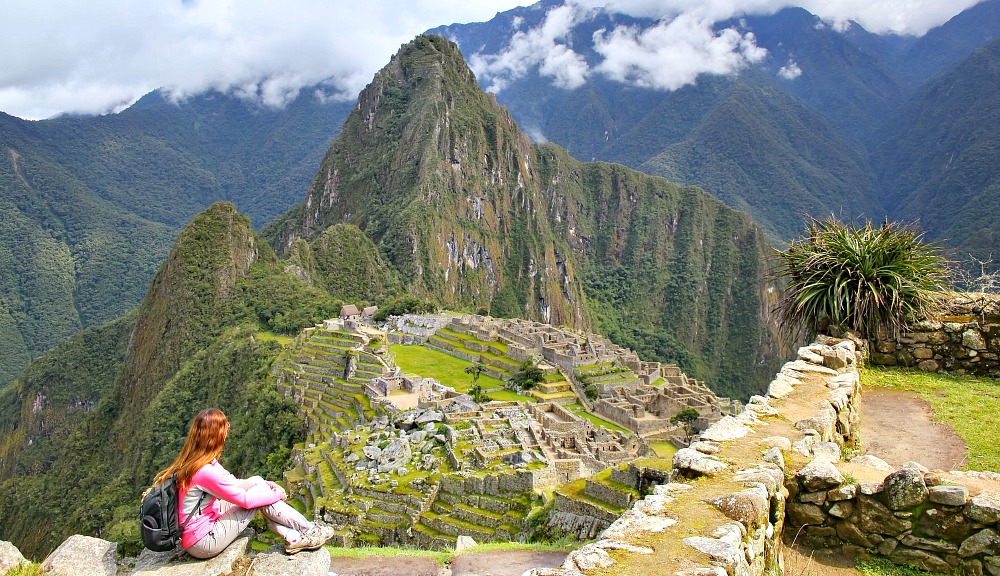
Support TFG by using the links in our articles to shop. We receive a small commission (at no extra cost to you) so we can continue to create helpful free content. We earn from qualifying purchases made to the featured retailers. Thank you, we appreciate your support!
Peru is one of my favorite countries and the Machu Picchu hike is one of the most incredible experiences! Machu Picchu is one of the most famous destinations in South America and a sought-out wonder for international travels around the world.
I get many questions about the Inca Trail trek, and in addition to creating a Machu Picchu packing list, I’m answering readers’ questions to give you a better idea of what to expect.
Machu Picchu Packing List and Travel Tips
Table of contents.
The Lares Trek was physically challenging because it was steep, and the Inca Jungle was mentally challenging because we got stuck in a mudslide and rockslide during the rainy season.
To hike the Inca Trail or Huayna Picchu, you need to book well in advance (even months) because only a certain number of permits are given per day. However, alternate hikes, like Lares, don’t require permits, so you could potentially book a tour when you arrive in Cusco.
START BY READING THESE POSTS:
- Where to Leave Your Luggage While Trekking Machu Picchu
- What to Pack for Machu Picchu when you’re not Trekking
- What to Wear in Peru

What to Expect on the Machu Picchu Hike
You probably hear this tons, but plan to layer. Layers should make up a bulk of your Machu Picchu packing list. It can be very hot during the day–even in the winter–since the sun is strong due to the high altitude. Sunscreen is super important year round! I have a natural tan and still burnt to a crisp in Lake Titicaca.
This is an adventure where you’re just going to have to get comfortable with the idea that you won’t be able to shower, so don’t feel bad about re-using the same pair of trousers for several days. You’re not alone, and nobody will be walking right next to you as everyone walks at their own pace, some much further ahead than others.
(Check your itinerary as some treks include hostel or guesthouse accommodation, not camping.) Pack baby wipes so you can freshen up at the end of the day and in the morning if you’re camping.

Please note: This list will vary slightly depending on which of the Machu Picchu tours you choose because accommodation varies, the way you arrive to Machu Picchu changes, and your activities also vary. For ease, this Machu Picchu packing list is based on the 4-Day Inca Trail.

Osprey Packs Osprey Tempest 20 Backpack
You’ll need a daypack to carry your daily essentials. Ideally, the size should be between 20-25L if you’re not carrying your own camping equipment. Choose one with comfortable padded straps and exterior compartments to hold water bottles. If not included, use a backpack cover to keep your belongings protected from rain and dirt.
Whether you’re carrying your clothing or using a porter, make everything fit into your daypack by using the Compass Rose Packing Cubes .

Merrell Siren Hiking Shoes
This varies by person. Some wear hiking boots and others wear trainers. I’ve worn my trusty New Balance Trainers both times and have been very happy, but if you’re unsure, try a pair of trainer/hiking boot hybrids like these Merrell shoes .
Find out how to choose the best hiking shoes !

Columbia Pardon My Trench Rain Jacket | Sizes XS-3X
1 Waterproof Jacket
Many travelers choose to wear a plastic poncho to protect their belongings and avoid wet clothing at night and the next day. You can buy a poncho before the trek.
It can be hot and uncomfortable to wear both a rain jacket and poncho in the rain. However, it is advised to add a light waterproof or windbreaker jacket to your Machu Picchu packing list.
Here’s the best waterproof jackets for stylish travel!

Athleta Trekkie North Jogger | Sizes 0-26
Your Machu Picchu packing list should include a pair of trekking Pants and one pair of leggings or fitness/yoga pants. Take a pair of travel pants for the trek and leggings or yoga pants for the final day when you want something clean.
Choose trekking pants or pants you would wear to work out. Rugged materials that dry quickly can be especially helpful in case of poor weather conditions. You can always pick up a cheap pair in Cusco and trash them when you’re done. In fact, you can buy everything you need for this trek in Cusco so don’t worry, you’ll be okay if you forget something.
Wear your trekking pants every day except the last so you can arrive at Machu Picchu wearing a nice clean outfit for 3 reasons: 1) you’ll be taking lots of pictures 2) you might be headed back to Cusco the same day and 3) you want to feel comfortable while exploring this magical destination.
Readers recommend the Athleta Trekkie North Pants for a versatile and stylish pair of pants you can wear on the trek and throughout the rest of your trip. One reader says, “I did the four day Inca trail trek last week and wore them, plus I plan to wear them this week in Buenos Aires . They are so comfy, versatile, go with everything, and are lightweight.” They truly are the best travel pants ever!
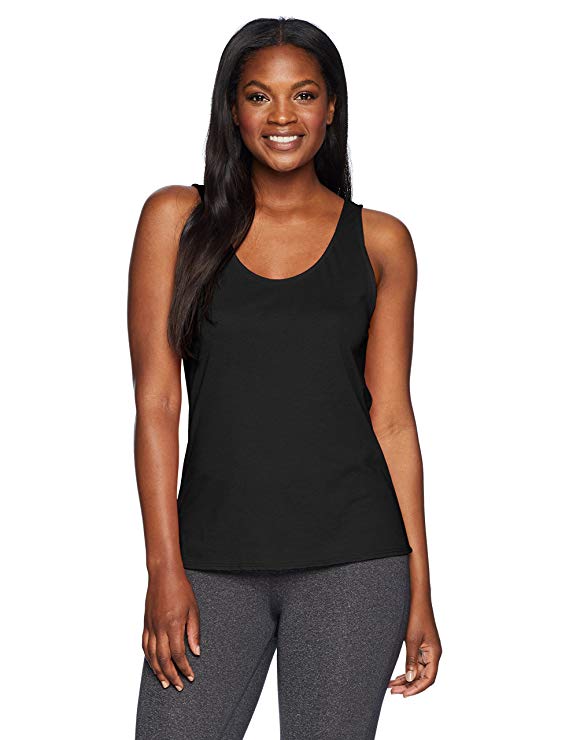
prAna Tilda Top | Sizes XS-XL
4 Tank Tops or Tees
While quick dry, fitness, or yoga tees are great for the trek, you’ll be fine wearing regular tops, too. Just add items to your Machu Picchu packing list that you feel comfortable exercising and sweating in.
Whatever you choose, remember that you should also like wearing it out to sightseeing during the day and to hang out at night in other Peruvian towns and cities. Pack a clean top for every day of the trek.
Need the best hiking gear list for women? Adventure junkie Tammy Lowe shares her ultimate packing list for trekking!

Woolx Remi Long Sleeve T-Shirt | Sizes XS-3X
1-2 Long Sleeve Tops
For your Machu Picchu packing list, include one long-sleeve top for summer or two for winter.
Choose a layering long sleeve to carry on the trek. It can add warmth if needed and easily be removed if you get too warm. A thin shell or other fitness type top is good.

Columbia Benton Springs II Long Hoodie | Sizes XS-3X
1 Fleece or Hoodie
A fleece is great to add to your Machu Picchu packing list because it won’t weigh you down as much as cotton, it’s lightweight and will keep you warm if it’s cold. It also dries quickly, which is very helpful.
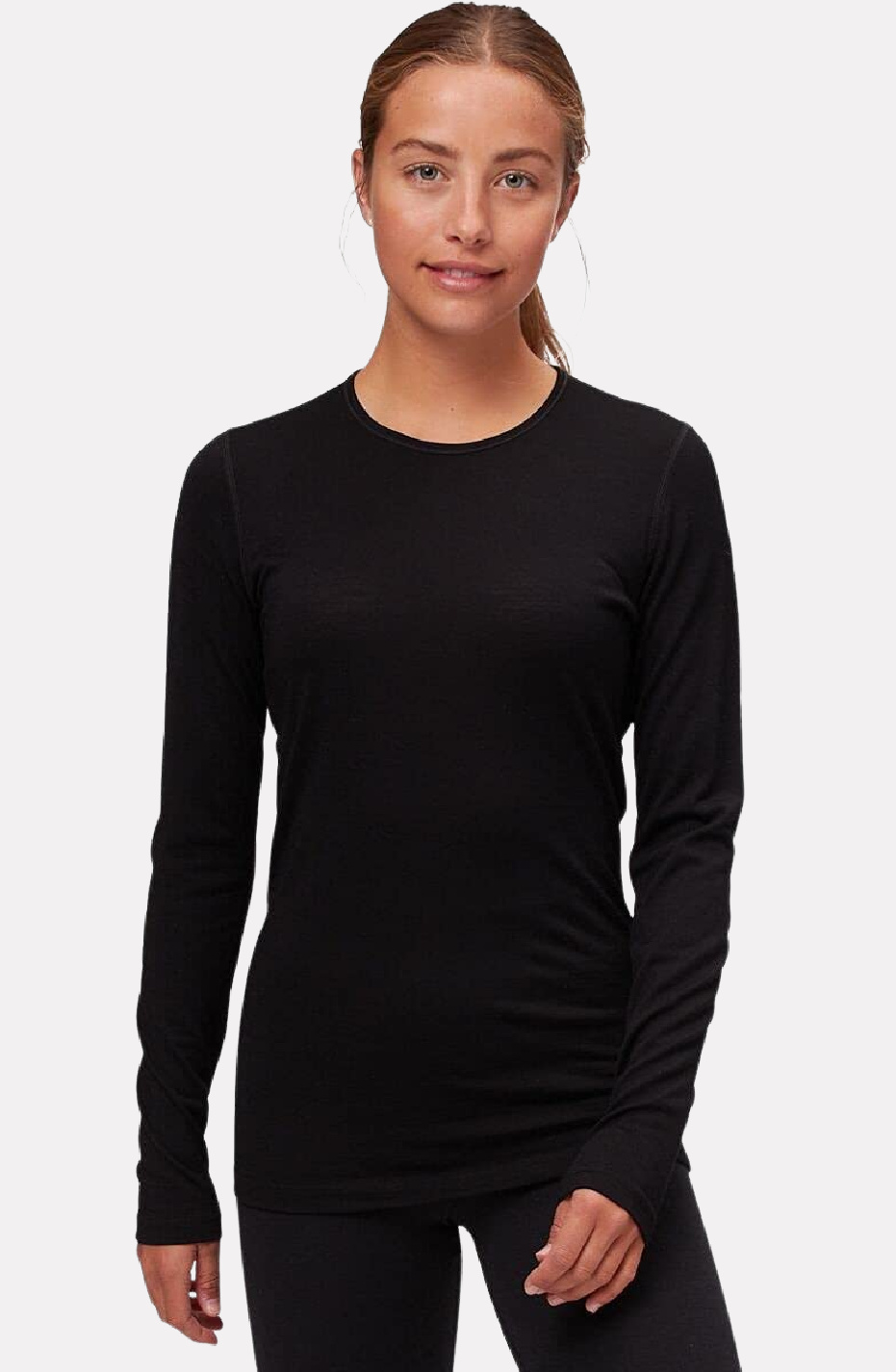
Icebreaker Long Sleeve Oasis | Sizes XS-XL
Choose thermals in the winter or a shirt and leggings in the summer. If you’re camping, then it will be cold at night. You’ll be so tired you won’t be interested in having a drink or a chat with your new trekking buddies for long, so don’t worry too much about bringing clothing other than your sleeping clothes for nighttime.
Minimalist Machu Picchu packing list tip: If you use everyday items to sleep, then they can double as your “clean outfit” on the last day. I used my sleeping shirt/leggings as my 4th day outfit to avoid carrying excessive clothing.
If spending the night in Machupicchu Pueblo (also known as Aguas Calientes) after completing your Machu Picchu tour, then also add 1 more clean outfit, like leggings and a top. You can also find laundry service here if you don’t bring an extra set of clothing.
For those heading straight back to Cusco or Ollantaytambo, make sure you save a clean set of clothes for the last day!
Find out the brands our readers most recommend the best thermal underwear for women !

Smartwool Hike Crew Socks
4 Pairs of Socks
One clean pair for each day.

Icebreaker Merino Siren Bikini
5 Pairs of Underwear
Because you don’t want to worry about washing them daily, pack enough for each day of the trek plus one or two extras.

Panache Sports Bra
1 Sports Bra
If you’re grimy all week, having the same bra one more day doesn’t hurt. You’ll definitely want to add this to your Machu Picchu packing list.

Freya High Neck Underwire Top | Freya Side Tie Bottom
1 Bathing Suit
Many people soothe their sore muscles in the hot springs in Aguas Calientes after visiting Machu Picchu. If you decide not to, at least you have an emergency set of underwear/bra.

Travelon Anti-theft Packable Backpack
Preparing For the Trek
A few notes on physical preparation for this trek: having already painfully done it once, I was better prepared the second time around. What I found was that it was more helpful to “train” by using the step machine at the gym or using something with a steep incline versus running or regular aerobics. You shouldn’t stop cardio altogether, but add incline workouts to your training.
Every day for two weeks before I left to Peru (it was a last-minute trip) I did a 45-60 minute hike up and down a steep hill by my house, and stopped my usual cardio. Not being in particularly good shape otherwise, I found this to be extremely helpful and it made the trek much easier the second time around.
Porters: While some tours do offer porters for your belongings, don’t use this as an excuse to overpack. Normally you’ll leave your main bag in Cusco, so only pack what you need on the trek. The porters can carry your clothing and while you’re walking you can carry wet wipes, lip balm, sunscreen, snacks, and water in your daypack (or other versatile bag). If you’re camping, the porters can carry your sleeping bag/mat.

Ruched Body-Con Tank Dress | Sizes XXS-XXL
What to Wear Everywhere Else in Peru
Read this post to find out what to wear in Peru so you can add these items to your Machu Picchu packing list if you plan on sightseeing after the trek. The general rule in many places around the world is that big cities and beach towns are more relaxed and small towns are more conservative.
Cusco and Lima have nice restaurants and a fun nightlife, so when you’re out at night you probably do want to wear a cute dress or a dressy outfit with jeans. I carried on traveling with a few girls from the Machu Picchu trek that only packed travel clothes and when we were done they started looking for a “sexy” dress in Arequipa to fit in with the rest of the backpacker scene at night.
A couple outfits you can dress up or down are suggested, especially if you want to go out at night or to the nice restaurants. Keep in mind that Lima is a modern city and women care for their appearance and dress well.

Zella Live In High Waist Leggings | Sizes XXS-XXL
In Puno and Lake Titicaca, on the other hand, you might want to wear dressy jeans at night versus a short dress. As for how short is too short, if you’re questioning a piece, then wear it with leggings or don’t pack it.
Shorts above the knee are fine in larger cities and beachside towns like Mancora. Just wear them tastefully as you would anywhere. During the day and night, jeans are as useful in Peru as trekking pants on your Machu Picchu tour.
Creating an interchangeable capsule wardrobe is the key to simplified packing.
Bringing Jewelry to Peru
A general rule about jewelry: Costume jewelry is totally fine, but real jewels should stay home. Cusco and Mancora have INCREDIBLE handicrafts and talented jewelry makers, so it’s a travelista’s dream! I’m always ready for two things in Peru: Handcrafted Jewelry and Artisan Leather Handbags.
Save your shopping for the end of your trip and buy a super cute carrier bag from the local handicraft vendors to carry all your new wearable souvenirs !
Travel Tips
Save time for 1-2 days in Cusco post-trek to recuperate after your journey. They have cheap massages to soothe your sore muscles, too.
And if you’re finished hiking Machu Picchu and you still want more, head to Colca Canyon in Arequipa and do another 2-day trek or make your way up north to Mancora for beachside fun in the sun!
If you’re not ready to travel alone, join a group travel tour–that’s how I got my feet wet! My first trip to Peru in 2008 was a 17-day Peru Panorama tour with G Adventures following a Brazil/Argentina combination tour . Check out my travel timeline . Once you get comfortable with travel, you’ll be ready to set off on your own solo adventures!
What items would you add to this Inca Trail and Machu Picchu packing list?
For tips more on what to pack for Peru, please read:
- Backpacking South America Packing List
- Plan Your Outdoor Capsule Wardrobe
- Best Hanging Toiletry Bag for Women
- Best Hiking Poles to Tackle Any Terrain Near or Far
Suggested Travel Resources:
- Lonely Planet Peru (Travel Guide)
LIKED THIS POST? PIN THIS PIC TO SAVE IT!

I hope you liked this Inca Trail and Machu Picchu packing list. Please don’t forget to share the love on Facebook, Twitter, and Pinterest. Thanks for reading!
60 comments.
This is a great post! I love Merrill Hiking Boots too, but have found a new favorite in Oboz — the sole feels like an athletic shoe to me, making it super comfortable. Also, for layering, picking up an Alpaca sweater in Peru is great option for chilly nights in the Andes.
Thank you for a wonderful blog. I’m off to Peru next month and stumbled across this blog and have read it over and over again. One question if I may though. I’m doing the one day trek to macchu picchu, and stuggling with what day pack to get 20L seems large. Would a 15L realistically be too small? Im looking at get either the osprey 20L tempest or the 15L Zealot. You’re thoughts one this would be brilliant. Cheers
Sharing this with my stepdaughter who will be hiking the trail with my husband, thanks!
So helpful! I’m bringing hiking boots definitely! I added an extra pair of pants so that I have a clean pair to summit with ( for pictures!)
Good plan Amanda!
I’m doing the 4 day hike at the end if April. I was wondering how steep are the stairs,I heard that there are three steep set of stairs on the 2 nd day,can you tell me how may stairs are we talking about –100-200 Love your notes,thanks
We are starting the 4 day Inca Trail on March 31st and I’m TOTALLY torn about hiking boots vs my favorite Merrell Chameleons!! We’ll be in Peru for 4 weeks and will be doing the Santa Cruz and a couple others as well. Trying to talk myself into the Merrells, but worried about ankle support. Did you have any trouble??
Hi Kim, it really depends on your personal needs. Some people did the trek in regular trainers and others used hiking boots. I just used cross trainers on both my trips and I felt comfortable with that. I would use them again.
Thank you for this it’s so helpful! I’m doing the inca trail in November this year 🙂 Do you have any advice on whether it’s better to take a water bottle or hydration bladder? and whether I should take some water purification tablets or a filtering bottle? Thank you again!
If most of your activities will center around hiking than the hydration bladder may be a good choice, if not, then a waterbottle will do! If you get bottled water you won’t need any of those and it’s readily available in the area! It’s fairly cheap and saves you the worry of purifying your drinking water. Happy travels!
Hi everybody. I remeber when I traveled to Cusco the last year, the experience was spectacular, Cusco has the best place to know about history. Also I remember the experience with my travel agency, was perfect, if you want know more the MachuPicchu and Peru, can search the web page and travel for all Peru. Hugs. http://www.ericadventures.com/
Thanks for sharing this 🙂 Sounds really exciting!
I am heading to Peru at the end of the year and this post is wonderfully informative and has given me lots of tips on what to pack for the trek and my journey there. I can’t wait to head off now with the minimum packed as possible. Thanks again TFG.
Yay 🙂 I’m glad you found it helpful. Have an awesome time!
My hubby and I are leaving this Saturday for a 4 day Trek to Machu Picchu and 3 days in the Amazon rainforest. Thanks for the packing tips. It really helped in knowing what to bring.
Wow this trip sounds amazing 🙂 Have a great time!
This list is everything, thanks Alex! Heading to Peru this November and I’ll be stalking your site until then.
Yay! So glad you like it Stephanie! Have a great time in Peru!
I’m going to Peru for 14 days in 2 weeks! I’m going on a 5-day salkantay trek to Machu Picchu and am bringing my own trekking poles and sleeping bag. I have a 65L Osprey Ariel ( http://www.ospreypacks.com/us/en/product/ariel-65-ARIEL65_639.html ) I was planning on taking this up to Machu Picchu, but now that I’ve read your blog, I’m thinking that’s not the best idea. I’d rather not carry everything up there.
Is there a good daypack that I can bring that I can both stuff in my Ariel 65L backpack AND attach my (rather large – https://www.rei.com/product/897244/marmot-ouray-sleeping-bag-womens ) sleeping bag to? I know it’s not going to be subfreezing temperatures, but I really love this bag and don’t want to rent one.
Thanks so much,
Hi Amanda, it’s not subfreezing but you are going into the winter so a sleeping bag is definitely a good idea. Here is an article providing you answers to all your questions and detailing exactly how to separate and pack your belongings when doing the trek: https://travelfashiongirl.com/machu-picchu-luggage-tips/
To be honest, you can attach a sleeping bag to pretty much any daypack. All you do is use the outside hooks/loops/attachments on the outside of the backpack to attach your sleeping bag. Read the article provided for ideas and daypack suggestions.
I went to Machu Picchu and did the Inca Trail in January, and this guide was really useful to see what to pack. I always have trouble with overpacking – though I’m sure I’m not the only one! I love your blog 🙂 xoxo
YAY!!! Happy to help 🙂
Do you have a recommendation for a good pack to take on the trip? We are taking a two week trip and Machu Picchu is just one stop. Do we take all of our belongings with us on the trail or is there someplace to leave those before your hike so we only take what we need? Thanks!
Hi Sara. Whether you leave your stuff at your hotel in Cusco or take it with you depends on your trip. Most people leave it at their accommodation in Cusco because they start and end the Machu Picchu segment of their trip here. However, I did see some backpackers who carried all their stuff the entire way because they were doing it on their own and carrying their own camping gear.
– Are you on a tour through Peru? If so, ask them if there is a place to leave your stuff behind. – Alternatively, if you are you planning the trip on your own? You can easily leave the main bulk of your stuff at your accommodation in either Cusco or possibly Ollantaytambo.
I’ve done this twice and left my gear behind both times. For the trail I transfer over just the items I need into my 20L daypack using slim packing cubes to organize. The items I’ve used are shown in the above section on what to wear on the trek. A good daypack for this is one the is a minimum of 15L, max of 25L (if you’re not carrying your own camping gear) and has a space for you to insert your water bottles on the outside. An external pocket is always a bonus, too so you can easily access certain things.
Here are some suggested day pack examples:
http://amzn.to/1NpdSzj http://amzn.to/1NpfkS8 http://amzn.to/1NpgahZ http://amzn.to/1SgVaYN
I love the Osprey brand because they’re products are durable, they offer a life-time warranty and the packs are rugged but have nice designs. All my long-term travel luggage the past 8 years has been from Osprey: https://travelfashiongirl.com/best-osprey-backpacks/
Even though this Osprey backpack has water-repellant fabric, a cover is always recommended when using a backpack: http://amzn.to/1Nped52 Not only does it help keep water from saturating your belongings but it also protects your gear from dirt, tears, and other things.
Hope this helps!
Thanks so much for the info!! 🙂
In regards to bags, what type of bag did you have for your items the porters carried?
Great article! Really helpful, thanks!
Hi Alicia! I never had a porter carry my bags because I only took my daypack on both trips. You can usually leave anything you won’t be using on the trek in your hotel in Cusco. Most people leave it at their accommodation in Cusco because they start and end the Machu Picchu segment of their trip here.
• Are you on a tour through Peru? If so, ask them if there is a place to leave your stuff behind.
• Alternatively, if you are you planning the trip on your own? You can easily leave the main bulk of your stuff at your accommodation in either Cusco or possibly Ollantaytambo.
Even though this Osprey backpack has water-repellant fabric, a cover is always recommended when using a backpack: http://amzn.to/1Nped52 . Not only does it help keep water from saturating your belongings but it also protects your gear from dirt, tears, and other things.
Great blog post! I am about 3 weeks out from the Inca Trek with my husband, and your post was very reassuring! Did the elevation/altitude bother you at all? We are spending a day and a half in Cusco before the trek and I am getting nervous that it is not enough time to fully acclimate.
Hi SaraBeth! The altitude has never bothered me but I do know it is suggested to spend at least a day or two in Cusco in advance. It’s a lovely town, worth getting there even before 🙂 Just make sure to take altitude tablets as needed and drink the local coca leaf tea
Just a comment about passports…if you are doing the classic Inca Trail where permits are needed you need your passport to be able to enter the trail and it must be the same passport you booked the permit with. If you got a new passport between booking and trekking you need to bring only the passport you booked the permit with. I recommend bringing a dry bag or putting the passport in a ziploc to keep it dry during the trek. I am leaving in a week for Peru to do my trek and have been reminded three times now about the need to bring my passport to enter the trail.
Thanks Jocelyn, very important! I’ll make sure to add to the post too. Thanks again!
hi alex. Your website is soooo great – really helpful! was just wondering when you did the inca trail and in the amazon, did you carry your passport with you? or leave it behind? I have read your tips on keeping passport safe (the’re great) but was wondering about day trips like this where you might not have a hotel to leave them at?
Thank you 🙂
Hi Ursla, thanks! I never carry my passport with me. It’s always locked away in my backpack/suitcase inside my accommodation. I did the Lares Trek in July of 2008 and the Inca Jungle in Feb 2011. Have a great trip!
OK, I finally had to comment on your blog. I’m planning an open-ended RTW trip right now and, today alone, I’ve googled things about three times and each time, you’ve had the best articles about the topic. Bookmarked and now stalking you on FB and Insta. Thanks for the great articles!
Thank you 🙂 that’s great to hear! What are you searching for?
This is such a great article with helpful tips! I do have a couple of questions. I am going to Peru with mu boyfriend in November. We are acclimating in Cusco for 2 days, then doing the 4 day Inca Trail to Macchu Pichu, going to Sacred Valley for 2 days then doing 7 days in the Amazon. Do you think the 55L bag would work for this trip? Also would the 15L day bag suffice for the Inca Trail? And would you wear similar (or even the same clothes) for the Amazon? Thanks in advance!!! Kylie
Hi Kylie, thanks for your comment! Sounds like you have quite an amazing trip planned. To answer your questions: Yes a 55L bag can work for any trip so long as you use packing organizers. I travel 365 days a year and use a 40L. Check out these packing options: https://travelfashiongirl.com/packing-organizers-the-luggage-accessories-that-help-you-travel-light/
I have used a 15L daypack for the trek. I used 1-2 slim packing cubes to make sure everything fit into this small space. You an find more info here: https://travelfashiongirl.com/packing-cubes-video-tutorial-learn-how-to-pack-light/
I would use the same clothing for the Amazon as the trek because in principle, the trekking clothes would be lightweight, moisture wicking, and quick dry which is also essential for the humidity of the jungle.
Now I have a question for you: Are you bringing along your own camping gear (sleeping bags, mats, tent) for the Inca Trail or are these being provided for you? Who is carrying them? This would impact your daypack size.
Thanks! alex
This sounds like an amazing trip. I just started researching it more and I think we’re going to add this to the list of things we want to do within the next year. Have to start saving! 🙂
It’s great! One of my favorite experiences. Safe travels!
This is a great post! I’m glad to see people doing this trek without hiking boots. I loathe hiking boots! I’ve been doing ballet most of my life and rely on my ankles for balance. Most hiking boots limit range of motion in the ankles and then put stress on the knees (the most delicate joint in the body). No thanks. I’m going to show this post to my fellow trekkers so they’ll stop bugging me about “proper” hiking boots.
Also, the clothes you picked out are great! And thanks for the info about clothes for the city. I totally would have brought hiking stuff and looked like a turista.
Thank you – Glad you like the post! People do the trek in a variety of clothing. Some have even done it flip flops and denim shorts – which I don’t recommend but the point is that so long as you have fitness wear that wicks moisture (and layers) you should be good to go. Quick dry is key and good layers because it gets COLD at night and warm during the day. Have a great trip to Machu Picchu!
hi, I’m really struggling with finding the right “light jacket” the one you suggested is no longer available. we’re travelling to MP in June. do you have any other suggestion for a soft shell jacket? thanks and hope to hear from you!
Hi Leanne, you can find numerous waterproof jacket options at retailers such as REI.com and Moosejaw.com from the brands featured in this post https://travelfashiongirl.com/14-waterproof-jackets-for-stylish-winter-travel/
I will also post your question on Facebook to see if the readers have waterproof jackets that they recommend.
This post might also be useful if you’re looking for a thermal layer for underneath your waterproof shell: https://travelfashiongirl.com/readers-choice-top-13-fleece-travel-jackets/
Thanks for reading!
We are hiking the Inca Trail for New Year’s and this list was super helpful!
Any chance you want to elaborate on the mudslide/rockslide in the “rainy” season. That’s obviously when we’re going to I’d love your thoughts on what else you wish you had with you. Did you feel you were in danger or just made it more challenging?
None of the sites have mentioned an extra pair of shoes, but I would assume the hiking boots get wet and stay wet for the whole trip. So, did you bring extra shoes post hike?
Last question – did you pack everything in your backpack for the plane ride or did you also check a duffel that you left at the hotel? I’m not clear how much the extra porters can carry. 25 pounds? 30?
Thanks for putting together such a great list!
Hi Karen How exciting for you, sounds like a great trip you have planned.
The mudslide I encountered was actually downright dangerous and we had rocks flying at our heads. We had to evacuate the location and were picked up by cars and taken back to the previous town so we could continue our journey the next day. My hike was the Inca Jungle trek in February when the Inca Trail was closed. Although I have also done the Lares trek in July and there was nothing muddy about that – just cold!
As for shoes, my New Balance trainers always dried overnight and others just walked in their wet or moist shoes or hiking boots. We just wore flip flops around aguas calientes after we got cleaned and showered. I think we send the shoes to be washed in the laundry, too, but I don’t remember.
I carried my own belongings both times. I only took a 25L daypack with just the stuff I would need (or could carry myself) for the hike and left my regular backpack back at the hotel in Cusco. with anything I wouldn’t need for the journey. Unless you’re packing your own tent and camping supplies the porters shouldn’t have to carry much for you unless you’re not returning to Cusco?
Hi Alex! Just a follow up note since I was perusing your site again for travel pants for my upcoming fall trip….:-)
Our Machu Picchu Inca Trail hike/camp was fantastic! We were blessed with excellent weather. Cold but nice. When we went over the peak, it was so warm on the way up that we were in t-shirts. On the way down, we were back in full on cold weather gear. It rained for about 20 hours the last night/day. But it was a lot of fun to hike in, actually, and we were fully set with rain gear/pants. We arrived at the Machu Picchu Sun Gate at sunset on the last day and sat there with our feet dangling in the clouds until at last it cleared and we got the best view of an empty park. Then we got to go down and walk through it to the buses down the mountain. (toured the next morning)
Also – the slim packing cubes made all the difference in the world. It was so much easier to pack my backpack and I was very organized. I ended up wearing Merrell waterproof hiking boots (LOVE LOVE LOVE) and took a 45lb pack (which was kinda overkill).
When I got home, I ordered the larger packing cubes for suitcases. My kids each have their own color (small, med, large) and I have them pack for trips. Large always has pants/shorts, medium is for shirts/sweaters and small is for underwear/socks. Then we throw them all into a suitcase and now they know exactly where their clothes are. Most excellent tip from you.
Happy travels and thanks again!
Hi Karen, thanks for sharing the feedback from your trip! I’m glad I was able to help with your packing. Will also check out the shoes you suggested. It’s so hard to be prepared for these types of trips. Thanks again!
I’m so glad I found your blog. We are leaving for Peru next week and I was so confused trying to figure out my outfits. Don’t want to over pack or run out of outfits. Extremely helpful, specially since its advice from woman to woman
I’m glad to help Regina! Hope you have a wonderful trip 🙂
Thank you, thank you!! My husband and I are embarking on a rtw trip for a year starting in October and Machu Picchu / Inca Trail are most definitely on the list – Peru could be the first country we visit. I have been wracking my brain for a few weeks now trying to figure out what I’ll need for the trek. This helps immensely.
Hi Jamie, glad you’ve found this helpful. Have a wonderful trip!
Love your blog, just a thought not sure how much it rains there but maybe a rain sleeve for the backpack would also be a good idea to keep things dry during the hike.
awesome call Sam! Totally forgot that 😉 Thanks for reading!
A durable plastic bag as a liner for your daypack and duffle works best. Sometimes covers leak
Just happened to drop by to check out the blog Alex, and here is this great post about Peru and the Inca Trail. Thanks again for all your help with my trip to Peru and Mexico in October last year. You were so right about packing a fleece. It and my leggings were vital at night.
That’s great! I’m really happy it worked out 🙂
This is great! I am leaving for Peru (Machu Picchu included) and Costa Rica in two months! However, it looks like the “shop here” link for the suggested clothing list does not work?
ooops! thanks for letting me know. here’s the correct link: https://travelfashiongirl.com/shop-for-inca-trail-and-machu-picchu-tours-travel-gear/
happy travels!
This is such an amazing post! I’ve been thinking about a trip to Peru, and now not only do I have suggestions on what to wear but also suggestions and tips on the hike itself as well as what else to do/where else to go. Thanks!
Thank you, I’m glad you like it! I love Peru it is a beautiful country with so many treasures – I hope you do decide to go 🙂
Submit a Comment Cancel reply
Your email address will not be published. Required fields are marked *
Save my name, email, and website in this browser for the next time I comment.
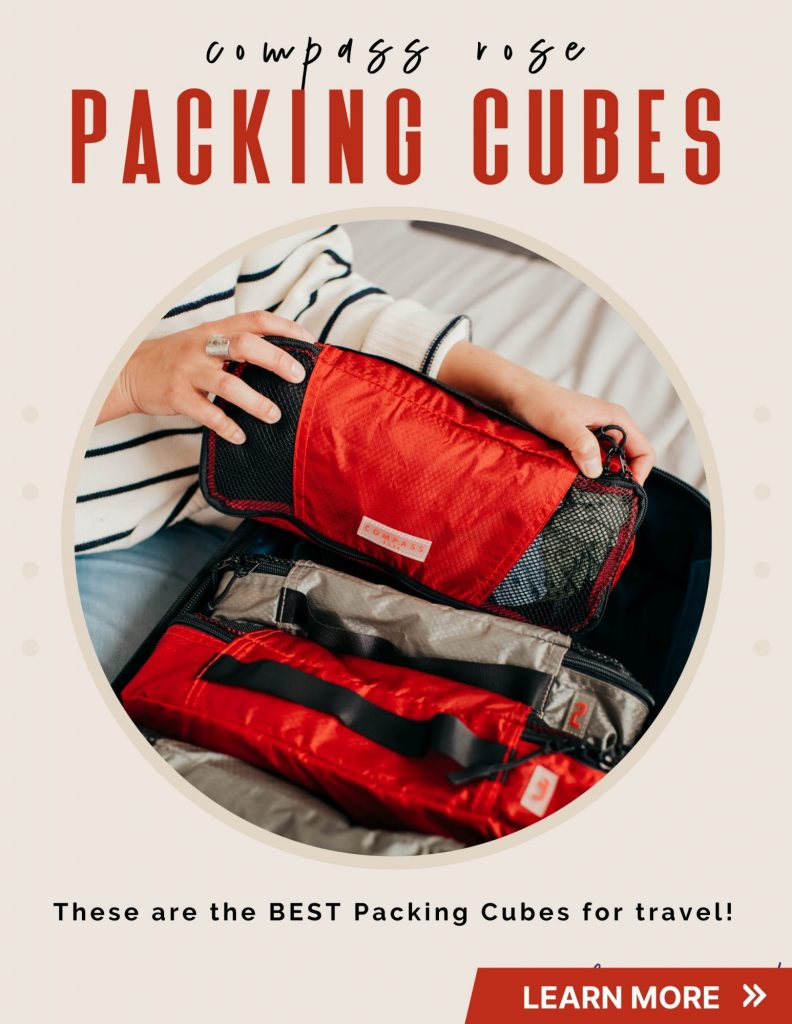
- Work With Me

- Sierra Leone
- South Africa
- United States
- New Zealand
- Falkland Islands
- Netherlands
- Accommodation
- Electrical Gear
- Essential Gear
- Working Abroad
- Blogging Resources
Americas , PERU , South America , Travel Gear & Packing
Ultimate peru packing list: tried & tested.
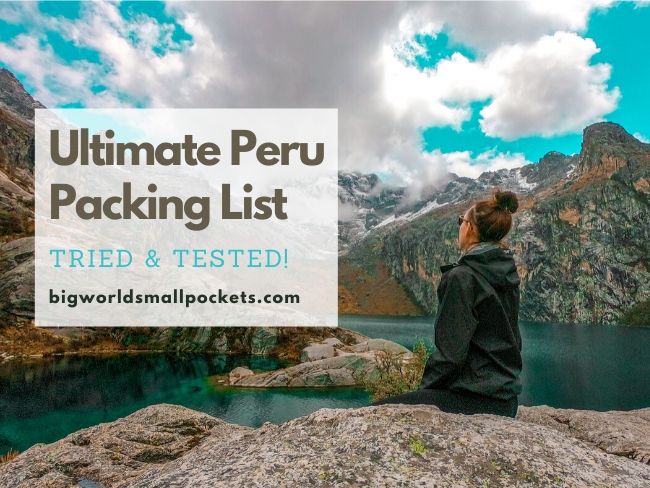
Oh Peru, the land of magic, mysticism, mountains and Machu Picchu!
And that’s not forgetting Peru as the land of the Amazon jungle, the Pacific coast, the Arequipa Desert, Lake Titicaca, the Inca heartland, some amazing colonial cities and a ton of epic foodie fun – all of which just didn’t quite fit into the alliteration in my first sentence!
But despite them not beginning with the letter M, these things are all still very important, because they show you just how diverse Peru is and therefore, just how packing for this country really does need some thinking about it.
Having spent 2 months in Peru and covered the length and breadth of this country (and loved it – find out why here ), I’m delighted to say I’ve got a good grip on what you do and don’t need to pack for your travels in this country.
And so here it is, my ultimate Peru packing list – tried and tested!
Perfect for those looking to keep things simple, this packing list for Peru not only covers what you’ll need to enjoy your time across this country, but is also designed to be lightweight – ideal for those who want to fit everything into a backpack too!
Related Posts
- The Ultimate Peru Itinerary
- How Much Does it Cost to Travel Peru?
- Complete Female South America Packing List
This page contains affiliate links meaning Big World Small Pockets may receive a small commission on any purchases at no extra cost to you.
Intro to this Peru Packing List
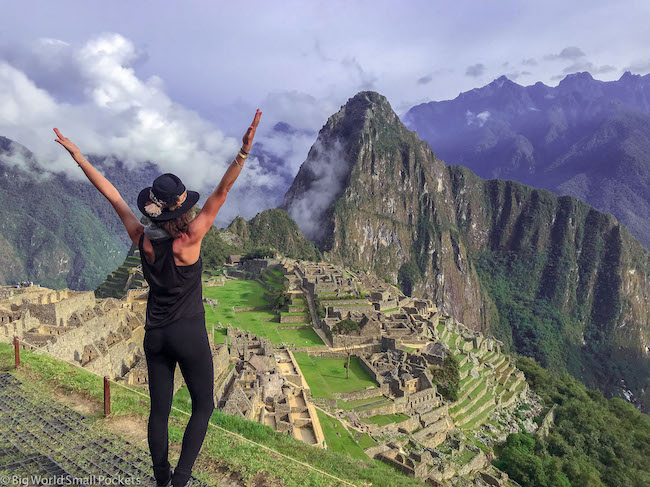
Before I get onto the actual checklist of what you should pack for your trip to Peru, I wanted to write a few quick tips that cover some specific questions you might have.
These include what women, especially, might need to think about when they are packing for a trip to this South America country, particularly around the area of leggings!
I also talk about packing for the particular season you’ll travel in Peru, as conditions vary greatly in this country depending whether you visit in the dry or rainy seasons.
I’ll then answer questions about packing items if you plan to hike in Peru (which you def should FYI). This includes items for those wanting to walk the Inca Trail, or any other multi-day treks to Machu Picchu, as well as those who simply want to day hike.
And after this, I share some of my top packing tips, including how I travelled South America for 4 months, with just a 50l backpack, as well as what I recommend wearing when long-haul flying to this continent and what to wear when enduring long bus rides in Peru too.
And finally, I’ll give you my full Peru packing list – yes an item by item list of what I recommend you pack for this amazing country, based on my own experience so you can be assured it’s tried and tested!
Let’s hook in…
Just enter your details below and I'll email it you - simple!
Information will be sent to the email provided above
Women’s Packing List for Peru
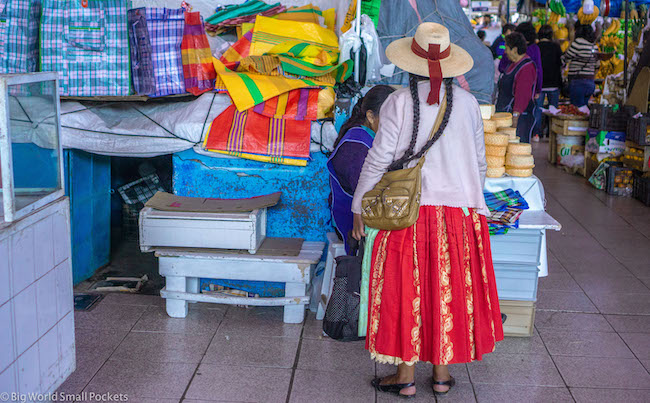
When it comes to the question around what women should wear in Peru, the answer isn’t that difficult.
It’s leggings!
Ha ha, it’s not, well it kind of is, but more on that later.
No seriously, as Peru is not that conservative as a country, women don’t need to worry about covering up legs, chest or arms for religious or cultural reasons.
What’s more likely is that you’ll do this for climate and weather regions – yup up in those Andes it can get a bit chilly!
So if you do get cold easily, like me, having a good insulated jacket, hat, scarves, gloves and some thick socks are a must for Peru packing, especially if you’re travelling in the dry season in the mountains.
Of course, I also recommend you travel with an eco-friendly menstrual cup too ladies – wouldn’t go anywhere without mine and Peru is no exception.
Apart from that, that’s not too much other stuff women need to think about and my checklist for Peru packing has been constructed with female adventurers in mind, so read on to learn more.
Is It Ok to Wear Leggings in Peru?
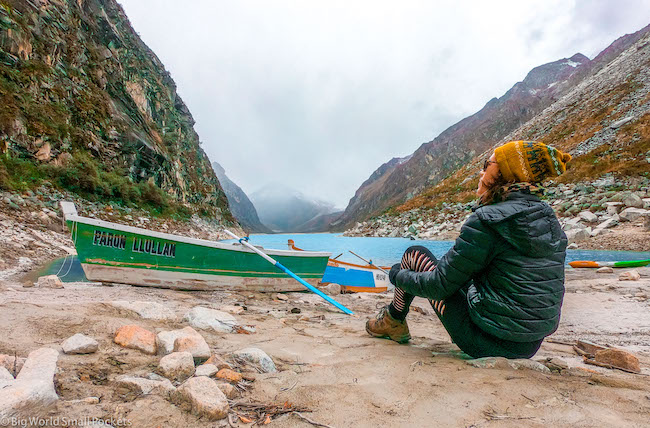
The answer to this question, which I know is a common one for women when it comes to what they should wear in Peru, is… HECK YEAH!
In fact, leggings are the number 1 thing I wore in Peru!
I mean, I love a legging at the best of times, but with cool mountain air and lots of active days, leggings really were the answer to my Peru packing list prayers.
As such, in the checklist below, you’ll see I recommend 2 pairs.
Don’t skimp on leggings is my advice!
Oh and get a natural fibre set if you can.
I love my black bamboo-fibre leggings from Boody which I basically lived in during my time in Peru thanks to their comfort, flexibility and durability.
Packing for Dry Season
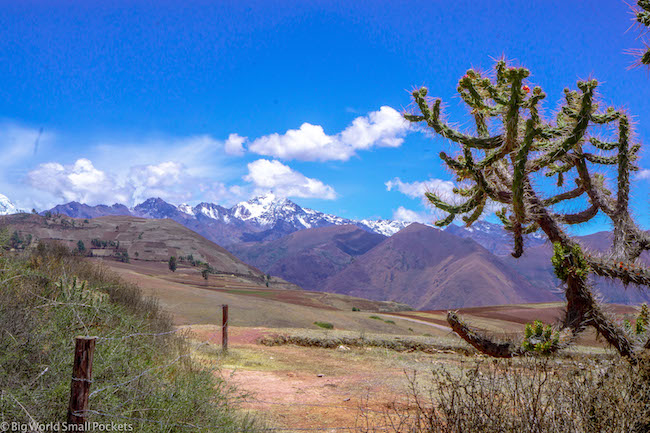
Now we come to the question of seasons in Peru, which can definitely be a little tricky.
Learn more about Peru’s complex seasons and the best time to visit Peru in this article I wrote all about that.
But briefly, if you’re heading to Peru, to spend most of your time in the Andes or the Amazon, then the dry season is the best time to visit and this generally runs from April to October.
However, this is also winter in Peru when temperatures are at their lowest, so things can get pretty chilly in the Andes at this time (the Amazon is always hot).
In general therefore, packing for dry season will involve less waterproof items, but more warm layers, especially if you’re hanging out in Cusco, Machu Picchu or the Sacred Valley.
At this time, think thick hiking socks , merino wool base layers , insulated jackets, thermal hats , gloves and a good alpaca scarf !
Packing for Rainy Season
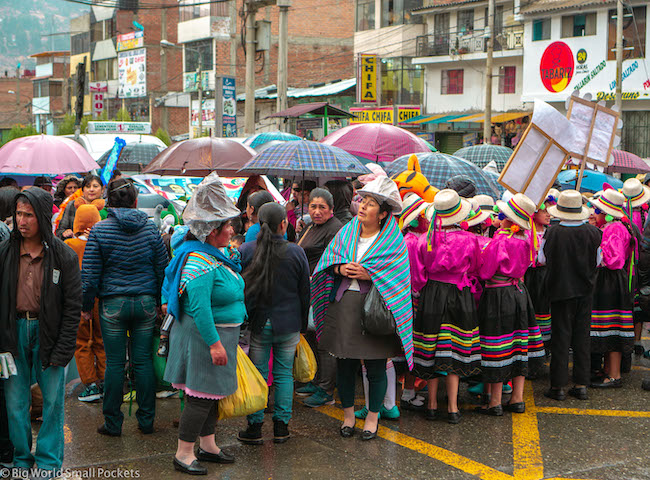
Conversely, the rainy season in Peru runs from November to April.
This is when it rains most in the Andes and the Amazon, but is dry on the coast in places like Lima.
It’s also warmer across the whole country.
This means bring clothes that can wick-away sweat for any time you may spend in the steamy coast or the Amazon – these quick-dry tops are a good option – as well as a cap to keep the sun off your face.
The Andes will still be cool at night during the rainy season, but not freezing, so less insulated layers will need to be replaced by lots of waterproof clothing, as it can seriously bucket down up here.
A dry bag might also be a good idea therefore!
Also, less hiking clothes will be required on your Peru packing list in rainy season because many trails, like the Inca Trail, are simple inaccessible at this time.
Packing for Trekking – Day Hikes & the Inca Trail
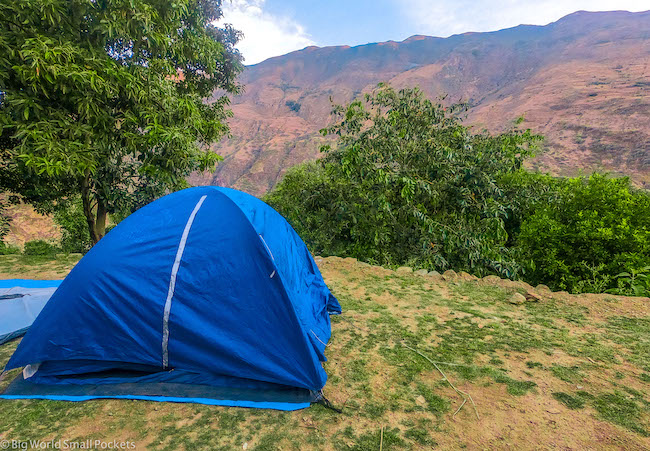
So while we’re on the subject of hiking, it’s worth pointing out that the main checklist below does detail everything you need if you plan to hike a lot in Peru, as I did.
The main overall advice however is to bring layers, that you can easily strip on and off as you walk – because that’s just what you’ll do.
A thin, light waterproof / windproof jacket will be very handy when packing for hiking in Peru and, as always, I recommend garments with lots of pockets so you have easy access to things like tissues, camera, sanitiser, snacks etc.
A sleeping bag will also be useful, especially if you enjoying multi-day treks like the Inca Trail, and no matter whether you’re tackling a big one like this or just day hikes, an action camera like the Go Pro Hero 8 will be ideal with its waterproof, compact and durable attributes.
Other Top Peru Packing Tips
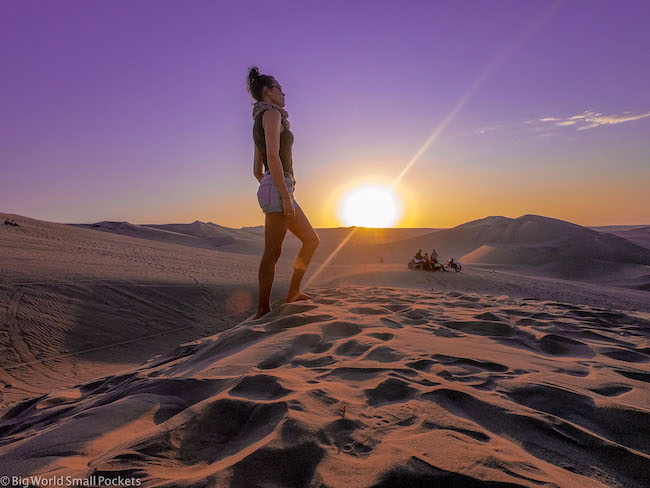
Packing For Your Flight to Peru
It’s also worth taking some time to think about what to wear on a flight over to Peru.
Making sure these items tie in as much as possible with the checklist below, will help you keep your packing light as you won’t be doubling up or carrying unnecessary things you won’t wear again until the flight home.
Quite simply, layers are key.
You never know how hot or cold a plane might be and if you want to get some sleep, comfy clothing is king.
This is especially true given flights to Peru from North America, Europe or Australia / New Zealand are long haul, so I’d certainly advise wearing things you feel at ease in.
Ladies, I always wear leggings on long-haul flights and love these natural bamboo fibre ones from Boody , which I now never travel without!
I pair them with either a thin cotton top or dress (depending how much coverage you want) and then also take a sweater and a scarf on the plane for extra cosy layers.
The travel wraps from Sholdit , which have a hidden security pocket, are perfect for travel adventures and I love mine!
Another must in my book are Compression flight socks for long haul flying, as they help you avoid the possibility of DVT.
I pair these with a lovely eye mask and ear plugs to ensure I get some good zzz.
A travel pillow will also help you here and I love this one from MLVOC , which I just bought and I’m already in love with thanks to its memory foam, high-sided design.
FYI, a travel pillow will also come in handy if you’re taking any long bus or train rides in Peru too… which you definitely will!
Gents, if leggings aren’t your thing, then loose-fitting jeans or comfy cargo pants might be a good option, with a t-shirt and thin sweater on top.
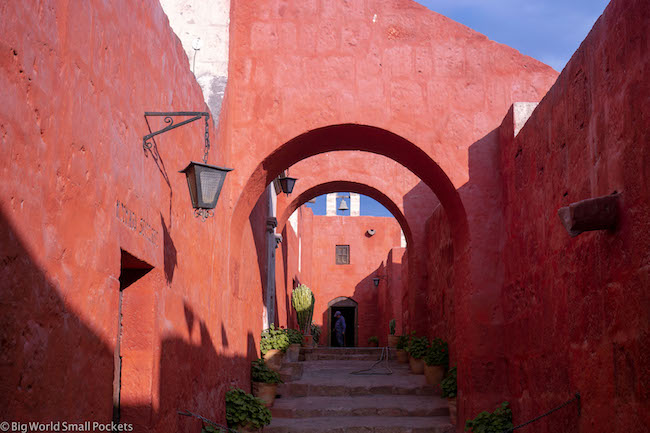
Small Essentials Kit for Journeys
I always travel with a small bag of essentials when I take long haul flights.
Normally this is a small, plastic ziplock bag (so it passes airport security liquid checks) including toothbrush and toothpaste, floss, small facewash, small moisturiser, lip balm, tissues, wet wipes, spare underwear and compression flight socks .
Learn more about why I travel with compression socks in this article about DVT .
But it’s not just on flights I used this in Peru.
Given the long distance bus rides which are a fundamental part of South America travel, and which often take place at night, I found it very handy to keep this small essential kit packed and ready to go with me throughout the trip.
Instead of packing it away, as I normally do when I arrive in a destination, keeping this small pack of essentials constantly topped up and included as part of my hand luggage in Peru was so handy for when I had to catch long distance / night buses.
Knowing I could always brush my teeth, or have toilet paper handy, was a game-changer and I strongly recommend you having a similar, essentials kit with you throughout your time in Peru too.
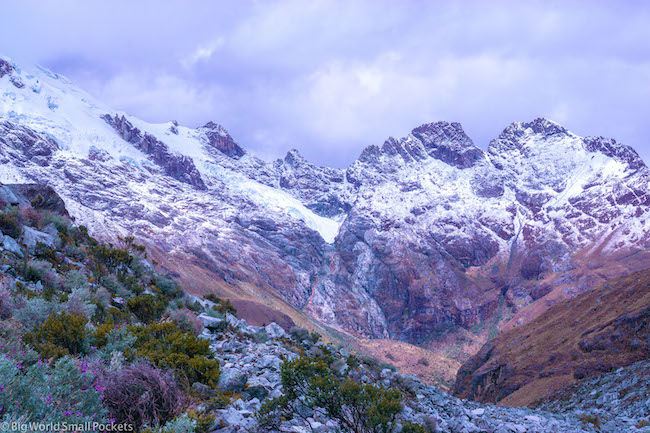
Packing Cubes and Backpack
And now seems like as a good a time as any to tackle the notion of packing cubes and rucksacks, 2 key components in this Peru packing list!
If you want to compress your gear to take up less space, as well as have it nicely organised, then packing cubes are the answer my friends!
Yes a godsend to disorganised packers everywhere, I absolutely love these packing cubes from Osprey and personally would never consider heading off to South America, or indeed anywhere, without them.
And if you manage to condense your stuff down well, then my whole Peru packing list below should fit into a 40-50l backpack.
I never take anything bigger, even when I’m travelling for 6 months at a time!
This 50l Atmos backpack from Osprey makes a great option.
Ultimate Peru Packing Checklist
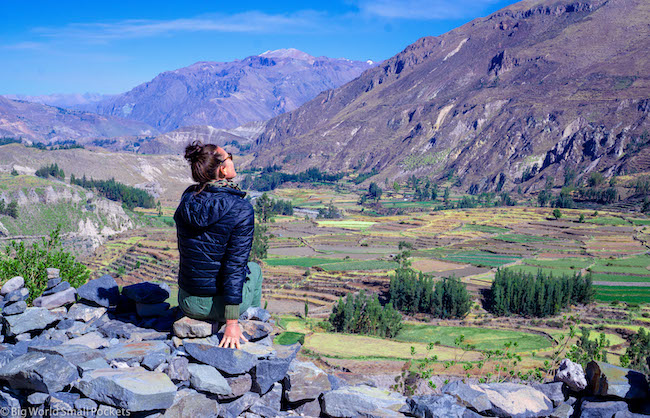
And so finally here it is – my item by item checklist for exactly what to pack and wear in Peru.
Geared towards those who want to travel light and be active, this list is especially ideal for thrifty backpackers who like to hike and is, of course, tried and tested following my 2 months in the country
So here goes…
1x Insulated Puffer Jacket – Crucial for staying warm up in the Andes. When considering what to wear in Peru, this is a must. Choose a packable, travel version like this one .
1x Thin Waterproof / Windproof Jacket – Two jackets might seem excessive, but if you want to do any hiking, a thinner jacket you can layer on or off when being active makes a lot of sense. I love the North Face Venture 2 , which gets even better when you learn it is made from recycled, post-consumer plastic.
3x Thick Hoodie / Sweater / Fleece – Again key to keeping warmer in the high altitude areas, some thick, cosy sweaters to add layers is a must. A good insulated one, like this Columbia thermal fleece is well suited to the job as it designed for active travellers.
3x Thin Long-Sleeved Top – Good for cooler days or when hiking / travelling, thin long sleeved tops are also good when you need to layer as they can be worn under thicker jumpers. Choosing an insulating natural fibre like merino wool is a good choice for budget vs warmth and comfort. This fabric also makes for an excellent hiking base layer .
7x Singlets / T-Shirts – Choose tops that match the trousers / leggings / shorts you’ve packed and consider quick-dry options. T-shirts are good for covering shoulders and offering sun protection.
2x Pairs Long Pants / Trousers – Great for going out in the evening or wandering around cities when it’s a bit cooler / wet, a couple of pairs of versatile trousers are a must when it comes to what to wear in Peru.
2x Pairs Leggings / Hiking Pants – One of my travel essentials, leggings are so helpful for putting under trousers if cold, for hiking or exercising, for being comfortable, for extra nightwear or for under a casual dress in the evening. If you have room, take 2 pairs and make them bamboo fibre ones if poss! If you don’t like leggings, hiking trousers or loose-fitting pants will do instead as they are also good for travel days and if you plan to undertake any volunteer work.
2x Pairs Shorts – You’re going to need something to wear during those beach / desert days in Peru!
1x Light Dress / Tunic – Again a good item for beach days. Or, if you want to dress up a bit during the evening, you can wear this over a pair of leggings! You see, so versatile!
1x Sarong – You can’t take enough sarongs travelling in my opinion as they are so light, compact and versatile, I can’t recommend them enough. Perfect for using as a beach towel, a scarf, a beach dresses, a sheet, a laundry bag… the list goes on. Check out my post about the 20 reasons why you should always pack a sarong to learn more.
2x Wraps / Scarves / Buffs – As well as a sarong, I recommend a couple of wraps / scarves / buffs which are great when hiking or trying to keep your neck warm or sweat out of your eyes! This merino wool buff is a great packing item for Peru.
1x Beanie / Warm Hat – Great for when you’re at altitude, camping or hiking as it will keep you amazingly warm.
1x Pair Gloves – Ditto the above. Check out this lightweight, thermal pair .
1x Cap / Sun Hat – Something to shield your face, neck and ears from the strong UV rays.
7x Pairs Underwear – Small and compact, 7-8 pairs will save you a lot of handwashing!
2x Bras – Try to go 1 if you think you can and make extra use of your bikini or sports bra!
1x Sports Bra – Small and great for hiking, I really love this black, padded one from Nike .
1x Bikini / Swimwear – You’ll need something to enjoy the ocean / surf with!
5x Pairs Socks – Make sure you take ones of various lengths / thickness, include ankle socks for city days and good, non-blister socks for hiking activities.
1x Pair Sunglasses – Make sure they offer UV protection.
Nightwear – You can always double up on your daywear here to save room!

1x Pair Hiking Boots – Depending on your plans (i.e. are you making the stair-heavy Inca Trail or just enjoying day hikes in the Sacred Valley?) either hiking boots, hiking shoes or trail runners might do. Check out this post I wrote to learn more about which to choose.
1x Pair Flip Flops / Sandals – Essential. Personally I’d never travel anywhere without my Arizona Birkenstocks .
1x Pair Trainers / Runner / Day Shoes – Either converse, pumps or sneakers for exploring cities and towns on foot. These New Balance black trainers are great all-rounders.
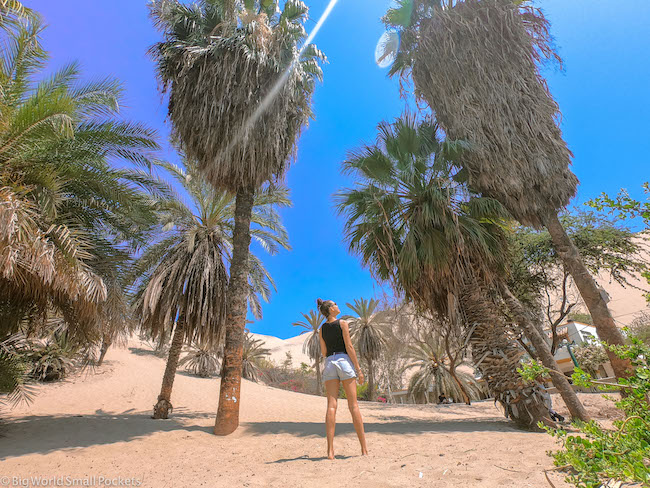
Thin Toiletries Bag with Hook – A light wash bag is also essential for keeping the weight in your backpack down. This one is a great, affordable option.
Shampoo & Conditioner Bars – I always go for shampoo and conditioner bars when I travel to save the plastic and keep the space down! Although they are a bit pricey, they last for ages. Say goodbye to mid-travel spillages and bulky bottles people, this is the eco-friendly future!
Anti-Bacterial Soap – Keep in a ziplock bag to prevent from getting soap slime on everything you own! I suggest an anti-bacterial bar as they are great for keeping you clean in tropical climates where you’re likely to be sweating a bit!
Deodorant – I always pack a natural crystal deodorant as they last forever (great if you’re travelling for a few months) and are free from many nasty chemicals.
Face Cleanser, Toner & Moisturiser – Great for bringing your skin back to life after days in the strong sun or the desert!
Natural Sunscreen – Choose a 30 SPF or higher for those helluva-strong rays in Peru and go natural if you can – keeps the chemicals out of your skin.
Natural Bug Repellent – See my post about how to make your own DEET-Free insect spray . Otherwise there are plenty of ready-made, great products on the market, like this one .
Aloe Vera – This doubles as a great moisturiser, soother and aftersun. Buy some here .
SPF Lip Salve – Very important for those strong UV conditions and keeping your lips healthy and happy. Burt Bees are always my go-to as they never dry out my lips.
Tea-Tree Essential Oil – A powerful anti-septic, anti-mould, anti-fungal treatment, it’s great to throw in a few drops with your washing and ideal for freshening up smelly bags / laundry etc. Get an organic tea-tree oil if you can.
Tiger Balm – An ideal remedy for headaches, sore muscles and insect bites, tiger balm is super versatile and a must on my Peru packing list, especially if the mosquitoes love you as much as me!
Paracetamol, Anti-Septic Cream & Band-Aids – The only medicine you need to take. Honestly, there’s so many pharmacies in this country you’ll be able to get almost anything you need over there!
Menstrual Cup – The best way to deal with your time of the month when travelling ladies. Check out the best prices for them here .
Toothbrush, Toothpaste, Floss
Razor & Spare Blades
Nail Scissors & Nail File
Tweezers & Safety Pins
Cotton Buds / Pads
Hair Bands & Hair Brush
Glasses / Contact Lenses if you wear them
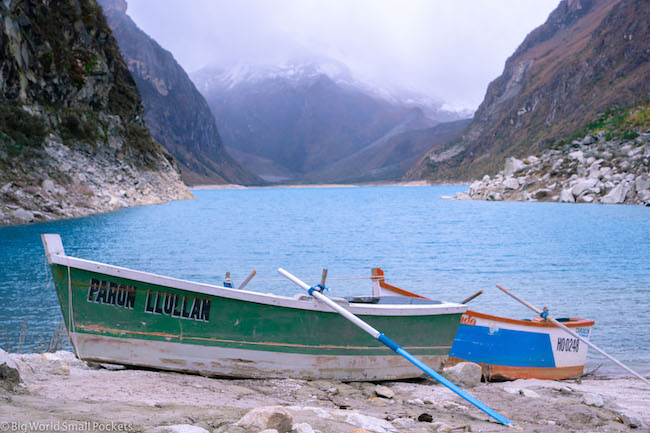
Other Things!
Eye Mask & Earplugs – Key for sleeping in hostels and on those long South American bus rides, this eye mask from Alaska Bear is super comfy… go on treat yourself!
Travel Towel – I recommend Latrek when it comes to the best travel towel, because they are cheap, compact, soft and don’t smell. Love, love, love mine. Read my full review here .
Day Pack – Definitely needed for hiking, sightseeing and active adventure days, this one from Osprey is perfect for the job.
Combination Padlock – Very useful for locking up bags and valuables when staying in hostels or on bus rides, these don’t have to be expensive, just reliable! Best to get a TSA-approved one in case of any hassle at the airport.
Filter Water Bottle – Seeing the amount of plastic bottles in Peru is disheartening at best. Try not to add to the problem and consider travelling with a filter water bottle like this one from LifeStraw . Not only does this mean you can safely and easily drink the tap water, but it will also save you the money and hassle of having to buy bottled water. Much cheaper and more environmentally friendly, the LifeStraw Go Water Filter Bottles have an amazing technology that filters out 99.9% of harmful bacteria and the filter lasts for 4000 litres, which means you’ll likely only have to replace it once a year!
Travel Handwash – Great for doing emergency washing, such as underwear in a sink, travel handwash is always a must when I backpack anywhere.
Dry Bag – So useful in Peru for the rainy season, these small and compact guys are great for keeping your electricals equipment dry in case of tropical downpours or Amazon humidity / boat rides! Check out this top-rated one for ideas.
Silk Liner & Sleeping Bag – If you’re doing any hiking, these will come in very handy. I always recommend a silk sleeping bag liner to keep you sweat-free and a Season 2 Snugpak sleeping bag , which packs up really small and is perfect for backpackers.
Latin America Phrasebook – Having a little bit of Spanish under your belt will go a long way in Peru and you can’t beat the Lonely Planet phrasebook in my opinion.
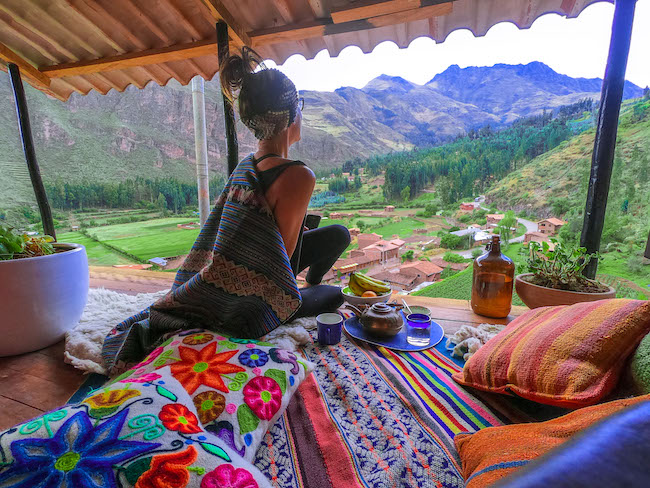
Electricals
Smartphone & Headphones – Taking your smartphone to stay in touch with those at home, checking maps, booking accommodation and uploading some pics while you’re in Peru is a great idea. Also download some audiobooks and music onto your phone before you leave home – a great idea for journey days. I recommend Amazon Audible and Spotify Premium for these purposes and wouldn’t travel without either these days.
Portable Charger – Portable chargers are great when travelling, especially if you’re out sightseeing all day and worried about your phone or camera battery lasting. I recommend the Anker Powercore , it’s light and can charge my iPhone around 5 times!
Camera – I love my Sony A600 mirrorless camera , which I used throughout my travels in Peru and beyond. Light, compact and sturdy, it’s perfect for travelling. A GoPro Hero 8 is also a great idea to help capture the more active adventures you might have in this country. It’s also great for video!
Lens, Spare Battery, Memory Card & Charger – All essential for the camera.
Adapter – Peru uses European-style outlets, so get a Skross World Adapter that won’t fail you!
Headlamp & Spare Batteries – I never travel anywhere without a headlamp and recommend you choose a product that uses commonly found batteries and has a red night light function to avoid the bugs. I love my Black Diamond Storm , which served me very well across South America, especially during those occasional powercuts!
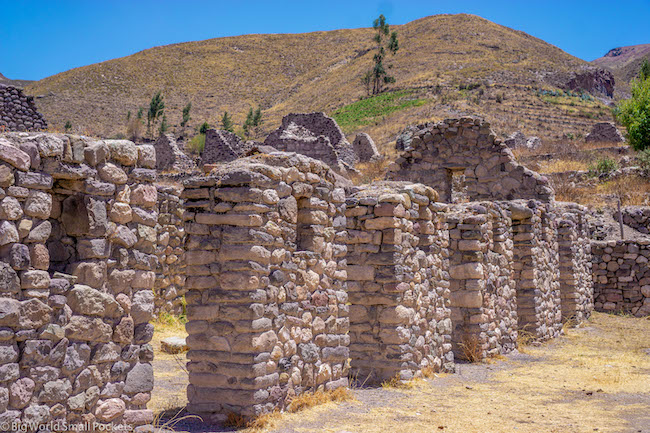
Important Bits!
Passport & Photocopies – Definitely take a colour copy of your passport with you to Peru and keep it with you at all times. Taking a photo of your passport and storing it safely in your email account / cloud storage is also a good idea.
Visa Documentation – Depending where you’re from of course.
Immunisation Documentation – Always good to have with you wherever you travel.
Credit Cards and Debit Cards – When it comes to paying for things in Peru, you want to ensure you’re not being charged overseas transaction fees or getting poor exchange rates when using your card abroad, which is why I always take my Wise card away with me wherever I travel. The easy way to spend abroad with real exchange rates, no markups and no sneaky transaction fees, you can use your Wise card just like a debit card here and it links easily with Google and Apple pay. Grab yours here .
Hidden Cash in Small Thin Purse – Take some USD cash with you that can be exchanged into Peruvian Sol in case of an emergency.
Flight Information
PIN IT TO PINTEREST!
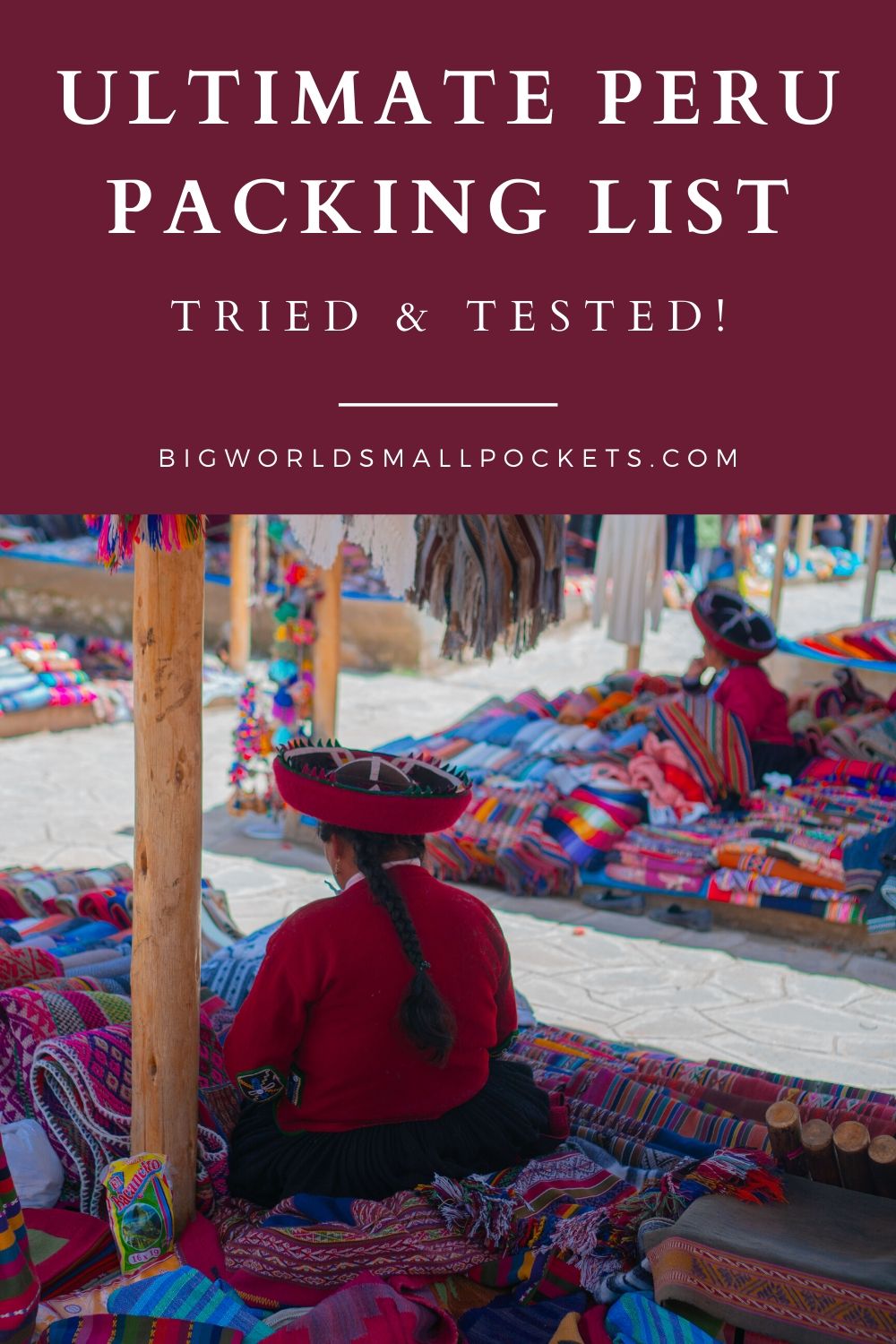
So that’s it, my ultimate Peru packing list!
Designed to be practical, while keeping things light, I hope I’ve got all you travellers, hikers, backpackers and adventure lovers covered with this item by item checklist
Have any questions about what to wear in Peru?
Did I miss anything out on this packing list?
Then please drop them into the comments box below…
Creator of Big World Small Pockets, Stephanie Parker is a travel addict! Originally from Jersey in the Channel Islands, Stephanie adventures the world collecting tips, advice and stories, to share with a smile
10 thoughts on “ Ultimate Peru Packing List: Tried & Tested! ”
Fantastic help thank you just about to travel to Peru for 4 wks you answered all my questions 🙂
Ah so great to hear this Helen! Thanks for taking the time to leave a comment and hope you have a wonderful time in Peru! Best wishes, Steph 🙂
Hi, we are travelling to Peru in June and really looking forward to it. This list is really helpful- thank you. My question is what vaccines do you think are really important to have before travelling and which are less important? Thanks in advance!
Hi Alice, when it comes to vaccines, it’s really best to ask a medical professional. Unfortunately, I’m not qualified to give out health advice and it would be wrong for me to do so. Best wishes and happy travels 🙂
Great article. Our family of 2 adults and 8 children are going in July for the month and bringing personal item size backpacks only. We will follow your suggestions and just take less of each item.
Sounds like a great idea Andrea! I’m sure you and your family will love your time in Peru. Do check out the many other articles I’ve written about this country too – just use the search bar in the top right or the destination dropdown menu on the homepage to find them. Happy adventures, Steph 🙂
Amazing article !! Thank you so much!! i’m travelling to Peru in 3 weeks and I had no clue on what to bring in my luggage!!
Ah great to hear Marine, glad the article helped! Happy travels, Steph 🙂
Hey this article helped a lot! Do you have any recommendation’s for someone whos travelling the gringo loop in March! I leave in a 11 days haha:)
Hi Courtney, so happy to hear this packing list was useful. I’ve got over 20 articles about Peru on my blog, so my recommendation would be to read those for tons of info about the “gringo loop” and more in this country. If you have any specific questions afterwards, then don’t hesitate to shoot me an email and I’ll help where I can. Best wishes and happy travels, Steph 🙂
Leave a Reply Cancel reply
Your email address will not be published. Required fields are marked *
This site uses Akismet to reduce spam. Learn how your comment data is processed .
Jordan Gassner Travel Blog
What To Wear In Peru: The Ultimate Cusco, Machu Picchu and Andes Packing List
October 11, 2023 by jordangassner
What To Wear in Peru:
The ultimate cusco, machu picchu and andes packing list.
As an Amazon Associate I earn from qualifying purchases.
Exploring the Peruvian Andes feels like stepping into a vibrant tapestry of nature, where each mountain peak and river valley are woven together by the rich threads of Incan tradition and the dynamic textures of fresh earth. When I traversed this beautiful region of Peru back in 2021, I discovered that the right wardrobe choices enhanced not only the journey’s comfort, but also its deeper connection to nature. Whether mingling in the bustling markets of Cusco or wandering the serene trails of the Sacred Valley, I am excited to share all my discoveries and recommendations for What to Wear in The Andes: The Ultimate Packing List .
what to wear in the andes
What I Wore

Pictured: Turquoise Button Down ( Similar ), Brown Pants ( Similar ), Wide Brim Hat ( Similar ), Madewell Handkerchief , Brown Belt ( Similar ), Miz Mooz Boots ( Similar )

Pictured: Mint Blazer ( Similar ), White Button Down ( Similar ), Madewell Jeans ( Similar ), Treasure & Bond Mules**

Pictured: Black Turtleneck ( Similar ), Black Floral Skirt ( Similar ), Skinny Brown Belt ( Similar ), Nisolo Brown Oxfords (Similar: One , Two )

Pictured: Cream Blazer ( Similar ), Reformation Dress ( Similar ), Skinny Brown Belt ( Similar ), Nisolo Brown Oxfords (Similar: One , Two )

Pictured: Jen’s Pirate Booty Alpaca Sweater , Lululemon Align Leggings , Fleece Lined Beanie ( Similar ), Sunglasses ( Similar ), Locally-Made Cream Scarf , Miz Mooz Boots ( Similar )

Pictured: White Button Down ( Similar ), Beige Pants ( Similar ), Wide Brim Hat ( Similar ), Blue Scarf , Brown Belt ( Similar ), Miz Mooz Boots ( Similar )

Pictured: Black Blazer ( Similar ), Black Turtleneck ( Similar ), Madewell Jeans ( Similar ), White Mules**
**I packed broken-in mules for Peru and, while I love them for my LA adventures, they were quite difficult to walk in around the slippery Inca stairs in the Andes. See what alt recommendations I have for traveling Peru in the Next Section !
Packing List

Button Down Shirts
Bring 2-3 options in different colors to mix-and-match while exploring.

Warm Sweaters and Tops
These can be separate from or mix-and-matched with clothes you’ll be wearing to other areas in Peru.

Long Sleeve Thermal Tops
Bring 1-2 Sweat wicking layer to wear alone or under a sweater and waterproof jacket.

1 Midi or Long Skirt ( Alt )
Weather in Cusco can change by the hour. Pair a skirt with a light tank and warm sweater on days where the temperature can vary.

Pair of Jeans
1-2 Pairs of Comfortable Jeans are great to have on hand for exploring Cusco or taking a day trip to Pisac.

Thick Leggings or Hiking Pants
Water-repellent, fleece fabric is perfect for the unique conditions around Rainbow Mountain and other high-altitude hikes.

For layering underneath Button Down Shirts or Warm Sweaters on an all-weather type of day.

Waterproof Jacket ( Alt )
The weather changes frequently in the Andes. Even if the weather may be hot, plan to bring at least one waterproof jacket.

Fleece or Hoodie
Bundle up on cold nights or wear as another layer on a trip up to Rainbow Mountain.

Boots with a Strong Grip
For hiking muddy paths or steep and slippery Incan stairs across the Andes.

Strong-Grip Flat Shoes
Wear with non-slip socks and comfortably explore Cusco while giving your feet a break from your hiking boots.

Merino Wool Socks
Keep your feet happy on treks with merino wool’s natural anti-bacterial and moisture-wicking properties.

Sun Hat ( Alt )
Lessen your chances of getting burned by the high-altitude sun.

UV Sunglasses
Speaking of the sun, don’t forget to protect your eyes from the bright Peruvian sun!

A fun and practical accessory to wear during outdoor excursions.

Bring a warm scarf for layering or bundling up on chilly nights.

A retro-inspired waterproof rucksack to hold your bottled water, sunscreen and bug spray for hikes throughout the Andes.

Regular and Sweat-Wicking Undergarments
Pack various options that will keep you comfortable both in town and outdoors.
These are the core wardrobe pieces I recommend based on my own travels to Peru. This guide is simply meant to be a starting point to help you determine what to pack. Please remember that what’s best for you will ultimately depend on your travel style and trip duration.
Related Posts

Uncover Travel Secrets
- TYPES OF TRIPS
- DESTINATIONS
- WORK TOGETHER

Search the Site

- Accommodation
Packing for Peru: A journey in outfits
“We seemed to breathe freely, a lighter air, an air of adventure”
Che Guevara’s ode to South America in The Motorcycle Diaries is probably the most apt description of the continent. Its landscapes are littered with magic and a sense of adventure – we spent just one month in Peru but in that short period of time we witnessed barren deserts lit by the orange glow of the setting sun, rainforests abuzz with hundreds of butterflies, pristine salt farms nestled between glorious valleys, and Incan ruins outlined on the horizon.
I thought about this as I chanced on an intriguing quiz on cheapflights.co.uk on which airline suits your personality (let’s blame it on late night bouts of surfing the net and subscribing to one too many travel websites – we all have those don’t we?). One of the questions prompted me to pick my ideal destination for a holiday – that destination would probably be Peru because its colours and culture left me spellbound.
I packed a host of bright fuchsia and red clothes for Peru – the perfect accompaniment to sun-bleached landscapes. There were also lacy tasseled kimonos, silk shorts, and lush tropical prints, for flowing in and out of the glorious Amazon Rainforest and sweltering under nonchalant summer rays. Pops of dark burgundy and charcoal were reserved for our break at an indulgent lodge on the shores of Lake Titilaka . A whole slew accessories inspired by sunshine and easy living ideals – feather armlets, flower crowns , dreamcatchers, and hamsa necklaces – lent the finishing touches to my wardrobe for Peru.
Three things that made Peru stand out were the panoramas, the people we met along the way, and the journey. In keeping with this, our lookbook from Peru isn’t so much about the outfits (after all, I was living out of a li’l backpack for 2 months in South America!) but the dreamy landscapes and people we met along the way – everyone from the shamans dressed in resplendent reds to local weavers and kids. Hope you enjoy it.
This one is for Peru – definitely one for your gypsy atlas 😀

PS For those of you who don’t follow Bruised Passports on Instagram , I’ll have you know I bought the shaman’s bright hat for myself:
For those who saw yesterday’s post, the hat’s called a Chullo and much to Vid’s amusement, I now have one ?? A photo posted by Savi and Vid (@bruisedpassports) on Aug 6, 2015 at 7:28pm PDT
I’d love to know – What are your travel fashion staples?
Planning a trip to Peru? Read our Ultimate Itinerary for Peru
See all our recent lookbooks from Maldives, Malaysia, India, and Finland
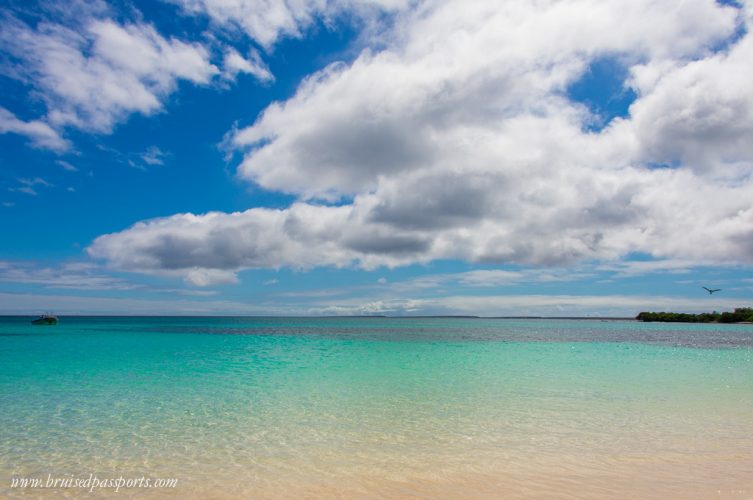
Previous Post
Glass half full kinda traveller?

A Balinese ‘winter’?!
12 thoughts on “ packing for peru: a journey in outfits ”.
You have great style. I love all the color.
Thanks a ton – good to hear from you. Peru is full of color, you’ll love it so 🙂
love all your outfits.
Thanks a ton Isha 😀
Savi luvd the lookbook.beautiful pics…my fav. outfit is the pink and green combo it’s so versatile ..luvd the video,that gorgeous smile makes everything look even better :).
Thanks a million Ramya 😀 So great hearing from you
wow those pictures were a feast for the eyes and your styling is on point. I loved this post. k x
Thanks a ton Kara – it’s hard to argue with colour eh 😉
I am loving the amazing pictures. So beautiful.
Thanks Stella – so glad you enjoyed them 😀
Loved your style and outfits!!! Every single look!!!
Could I please get details about where to find the clothes and accessories?
Thanks heaps!
Hey there – I frequently tag my outfits on Instagram. Do follow us there – we are @bruisedpassports
Leave a Reply Cancel reply
Your email address will not be published. Required fields are marked *
Yes, add me to your mailing list.

Simple Luxe Living
Welcome to Simple Luxe Living. Here you can find topics related to travel and luxury lifestyle. Enjoy!
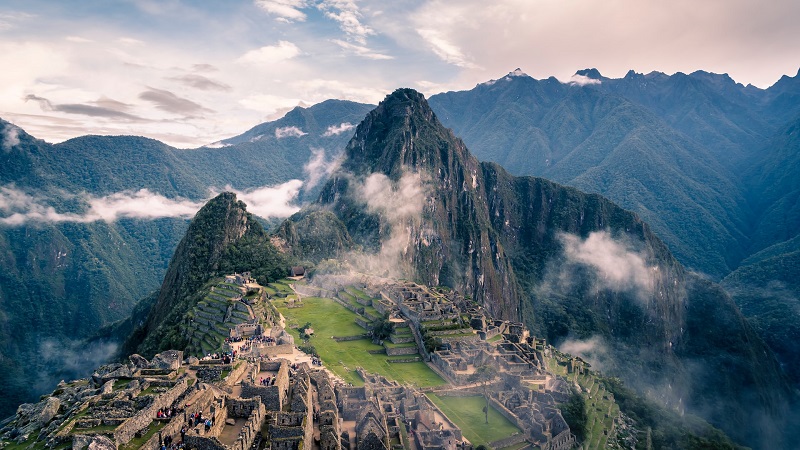
What to Pack and Wear In Peru For 2023?
Are you planning a trip to Peru and wondering what to pack and wear?
You’ve come to the right place!
Peru is an amazing, diverse country with plenty of experiences waiting for you – from exploring Machu Picchu and visiting the picturesque Sacred Valley in Cusco to lounging on the beautiful beaches in Lima.
With its varying climates ranging from jungle terrain on the Amazon rainforest side, down through the coastal desert region up toward snowy mountain tops – having a carefully planned outfit that caters to all weather conditions can help ensure everything runs smoothly during your stay.
In this blog post, we’ll go over tips about what outfits best suit your Peruvian adventure!
Table of Contents
What to pack for your trip to Peru
When traveling to Peru, it’s important to pack the necessary items for your journey.
Bring a sturdy and spacious backpack to hold all of your belongings.
Make sure you have weather-appropriate clothing for the cooler Andean regions and temperatures that soar in the Amazon jungle.
Sunscreen, insect repellent, quality walking shoes, and a hat are essential if spending time outdoors.
As some altitude cities can be quite cool at night, bring along a jacket or sweater as well.
Waterproof luggage covers should also be included to protect your bags from heavy rain during the monsoon season.
Memorize a few key phrases in Spanish or even carry a translator app.
Both will come in handy when communicating with locals or fellow travelers. With the right items packed, you’ll have an enjoyable and safe trip to Peru!
What to wear in Peru
Exploring Peru is an incredible opportunity that shouldn’t be taken lightly.
Taking into account the climate and local customs will help ensure a safer and more enjoyable trip.
In Peru, the weather can vary greatly depending on day or night and location, so dressing in layers is essential.
During the day, light long-sleeve tops and light trousers or capris are recommended to protect yourself from the sun and any unexpected showers.
For nighttime exploration, sweaters or warm jackets should be worn due to lower temperatures.
Additionally, bearing in mind local customs when it comes to clothing helps visitors stay respectful and avoids unwanted attention.
Since dress codes vary throughout different areas of Peru, using discretion when deciding what to wear is important for visitors who wish to explore the country in comfort.
Dress codes in Peru
Dress codes vary significantly depending on where you go in Peru.
In the capital city of Lima, fashionable modern clothing is usually expected, although several conventions and formal occasions require more traditional dress.
Mestizo culture dominates in the Central Sierra region of Peru.
Accordingly, the local dress features bright color combinations reminiscent of traditional Incan designs.
When visiting rural areas, particularly those inhabited by indigenous Quechua or Aymara people, you should respect their customs and wear modest clothing that covers your legs, shoulders, and chest.
Whichever part of Peru you plan to visit, be sure to research the dress requirements for that area so that you can show respect for local culture.
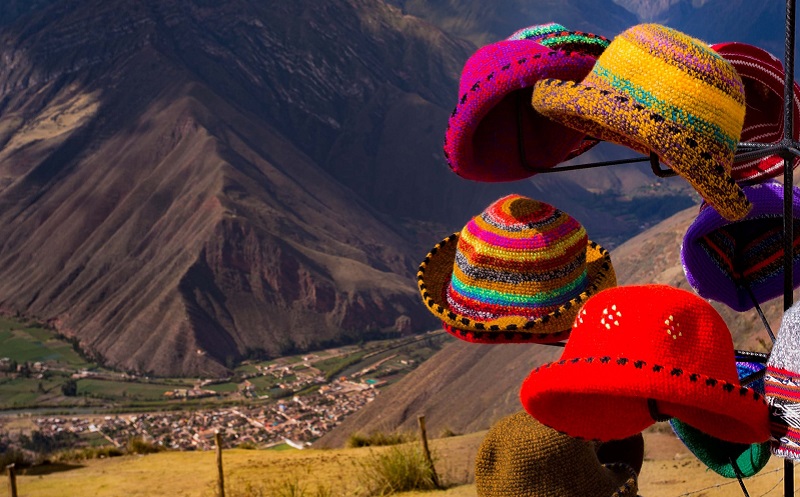
Dress code for men in Peru
In Peru, there is no widespread dress code for men except for certain religious or high-society situations.
Generally, bright and vibrant colors are the norm due to people’s pride in those hues.
Men commonly wear button-up shirts or t-shirts with jeans or trousers depending on the occasion.
Although the traditional “Andean dress” – which consists of a poncho and bowler hat – is still worn in rural areas, it is not seen as frequently in urban environments.
In some rare circumstances, it might be required for men to wear long pants and closed shoes as part of their dress, but this is more the exception than the rule when considering the culture at large.
Dress code for women in Peru
Women in Peru are expected to dress modestly, with wider skirts rather than narrow ones and a higher neckline.
In general, shorts, tank tops, and low-cut blouses aren’t acceptable in most of the country.
Notable exceptions include areas such as beach resorts, where certain items may be permissible depending on location.
For both men and women, light colors are considered polite attire, while heavy dark colors can appear aggressive when traveling in some parts of Peru.
Ultimately, wearing clothes that display respect for local customs is expected when traveling around the country.
Weather in Peru
The weather in Peru is quite varied due to its geographical diversity.
The climate condition of the country is largely determined by its elevation and geography.
With temperatures ranging widely from humid tropical in the jungle lowlands on the Amazon basin to more moderate and dry conditions in the inland region of highland plateaus, the Andes Mountains, and portions of the Pacific coastline.
Also due to Peru’s close proximity that lies in the equatorial belt, seasons throughout most of the country are fairly minimal with little difference between winter and summer temperatures as well as rainfall.
Overall, no matter what activity or exploration one desires to undertake, Peru’s weather patterns ultimately make it a great destination for visitors all year long!
How to dress appropriately for Peru
When visiting Peru, it is important to remember that clothing choices can have a significant impact on your experience.
The locals can be very fashion-conscious and while bright colors, patterns, and even hats are appropriate in some situations, more conservative styling should be adopted when attending more formal events or religious services.
Always choose clothing that is respectful of the local customs.
For instance, avoid wearing anything too revealing or offensive when you head into the city or trekking on a hike.
Dressing appropriately during your stay in Peru’s beautiful cities and stunning landscapes will ensure you make the best impression on the local people and also that you feel comfortable in all your adventures.
What accessories to wear in Peru
When planning a trip to Peru, be sure to include some accessories in your luggage!
Experiencing the beauty of Machu Picchu while wearing an alpaca wool hat is a surefire way to enjoy it even more.
Having a woven beach bag from Cusco handy for hikes near Lake Titicaca is always useful.
Be sure to pick up some unique jewelry from Lima’s artisan markets, as well as one of their plant-dyed and alpaca-wool textiles for a truly memorable souvenir.
Not only will all of these accessories take your experience in Peru to the next level, but you’ll also be supporting the local economy too.
What to wear in Peru at night
Dressing for a night out in Peru is an exciting experience, with vibrant and lively fashion choices that reflect the culture of the country.
The dress code for evening events expands beyond simple neutral-hued ensembles, so it’s important to consider which items are suitable for special occasions.
Light-flowing dresses paired with comfortable sandals or ballet-style flats are ideal for women.
For men, lightweight khakis, dress shirts, and casual shoes should be worn.
Adding accessories like bright-colored scarves and statement jewelry can really make your look stand out, while traditional shawls or woven caps add a distinctively cultural touch to any evening outfit.
Don’t forget that dressing casually is fine for some occasions.
Colorful shirts and trousers paired with stylish sneakers also work well in Peru’s nightlife culture.
Top Style Tips for Peru
If you’re planning a trip to Peru, it’s important to stay up-to-date on the current fashion trends!
However, with so many exciting styles and options available there, it can be challenging to know what and how to dress!
To help give you some guidance, here are the top style tips for Peru.
For starters, bright colors in your wardrobe are always welcome. Think bold blues, pinks, and oranges.
Layering can also be key in matching multiple pieces together in one look.
Investing in statement jewelry made from local materials like silver or alpaca wool can go long way toward creating a beautiful ensemble.
In addition, chunky sweaters, wide-legged trousers, and ankle boots all make excellent choices for cool evenings out.
Above all else, remember that traditional Peruvian clothing is incredibly colorful and varied – use this as inspiration when building your unique wardrobe!
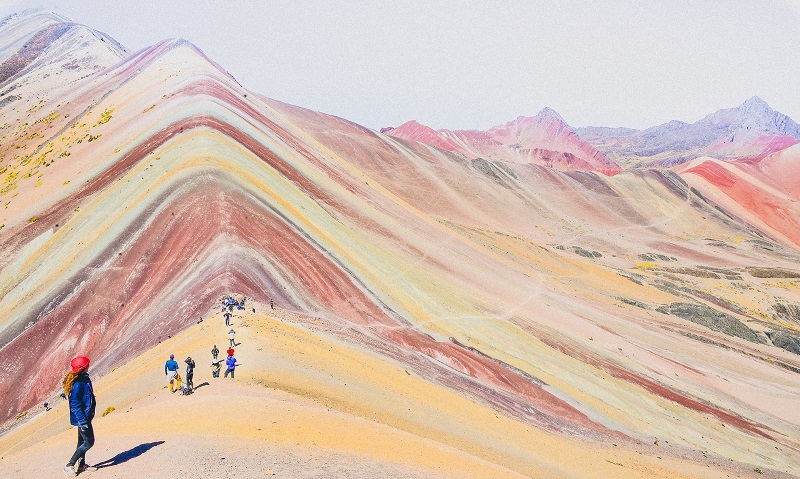
Other things to pack when visiting Peru
When planning a trip to Peru, visitors should remember to pack other essentials aside from the usual clothing and toiletries.
It is important to bring any required documents, such as visas and passports that are essential for entry and identification purposes.
A medical kit can come in handy too, as it includes items like pain relief tablets, bandages, and insect repellents.
Additionally, make sure you’ve got what you need for staying connected – like a SIM card from Peru or your own unlocked phone with an international roaming bottle.
It’s also advised that travelers take along some Spanish language books or have a translation app handy to help with communication during their stay.
Along with this, a good idea is to bring along local currency, which can usually be obtained before arriving at the destination – or else use ATM machines available upon arrival.
What to wear in Peru in January?
Peru has a varied climate due to its many different geographical features, however generally January temperatures range from the mid-50s to the mid-70s Fahrenheit (12-21 degrees Celsius) during the day.
Therefore, it is important for travelers to come prepared with clothing that can keep them comfortable in a variety of situations.
It is best to bring a selection of clothing that can be easily layered. Long-sleeved shirts and tops, light sweaters, jeans, or cargo pants are good choices.
As well as clothing made from light materials like cotton and linen, which are better suited to summer weather.
Additionally, something waterproof, like a breathable raincoat, could be essential depending on the region visitors plan to explore.
Furthermore, though Peru is not a tropical country, hats are always useful when spending time outdoors.
An all-purpose hat like a legionnaire-style cap or wide-brimmed sunhat will serve you well no matter what activity you undertake!
What to wear in Peru in February?
Visiting Peru in February can be a great experience, however, you need to make sure you wear the right clothing.
Due to Peru’s diverse landscape, with a desert in the west and rainforest and mountain ranges in the east, what is needed for your wardrobe will depend on where you plan to go.
Lightweight clothes that dry quickly are usually best, but make sure to pack some warm and waterproof pieces too, as the weather can change rapidly.
Hiking through the mountains will require appropriate outdoor attire such as breathable and water-resistant clothing and sturdy shoes.
If traveling around coastal regions or cities like Lima then sandals with shorts or jeans are more suitable.
As singlets or tank tops can be chilly, cap-sleeve shirts and sun-protective clothing are better options when outdoors.
Keep an eye on local customs as well.
While cropped pants may be comfortable on hot days they might not fit with cultural standards outside of tourist areas.
With advance planning and awareness of culturally appropriate garments, you’ll be sure to wear something suitable wherever your journey may take you!
What to wear in Peru in March?
March in Peru can bring unpredictable or changeable weather.
During the day, it may be humid and hot while at night it can cool down significantly.
To keep comfortable in every type of situation, lightweight fabrics are your best bet.
Pack casual items such as shorts, t-shirts, and sundresses to wear during the day, and long sleeve shirts and jeans for nights out.
Shoes that you can slip on and off easily are a good plan for sightseeing.
Opt for something breathable but sturdy enough to take you from the city streets all the way up the Andes Mountains.
Bringing along a jacket or a coat might also come in handy if the weather takes an unexpected turn.
Lastly, don’t forget your hat and sunscreen for protection from UV rays!
What to wear in Peru in April?
Travelers to Peru in April should be prepared for some cold weather.
Many parts of the country, especially the highlands, experience a cooler climate at this time of year.
The best way to stay warm and comfortable is to layer clothing and wear lightweight but insulated fabrics such as wool or fleece. Items like scarves, hats, and gloves are also useful when the temperatures drop.
It’s also important to wear items that protect against sunburn even if it’s cold. So bring along a wide-brimmed hat and sunglasses.
A pair of sturdy walking shoes are essential since you’ll probably spend a lot of time exploring outdoors.
Lightweight rain gear might also be handy since you never know when unexpected showers will pop up!
Planning accordingly can make all the difference in Peru in April and ensure your trip is both fun and comfortable.
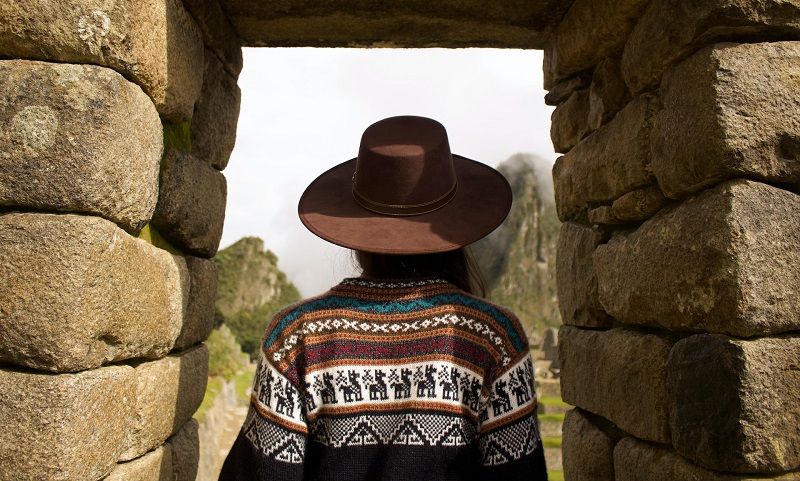
What to wear in Peru in May?
When visiting Peru in May, it is important to bring clothing that is comfortable, practical, and stylish.
Temperatures can range from warm to cold depending on elevation and location so a mixture of lightweight and warmer pieces is ideal.
A good starting point is long shorts or trousers paired with a t-shirt, sweater, or light jacket.
To offer additional warmth, a shawl or scarf can be useful for cooler evenings and mornings.
As you explore the vibrant cities of Peru, you will also want some stylish elements such as a colorful hat, vest, or sandals to make your outfit stand out.
With the right clothes, you can stay comfortable during your travels while still embracing Peruvian fashion trends.
What to wear in Peru in June?
Traveling to Peru in June is an interesting experience.
The weather fluctuates between cool and warm temperatures, so it’s important to properly plan ahead and know what to wear.
During the day, lightweight shirts and light-colored pants or shorts are ideal as they will keep you cool.
At night, more layers like a light sweater or jacket are necessary.
Don’t forget comfortable walking shoes that can weather any terrain – be it sand, stones, or grass – and sunglasses for protection against the sun’s glare!
With careful preparation and the right attire, you will surely have an enjoyable time in Peru during June!
What to wear in Peru in July?
When packing for a July vacation to Peru, there are a few things to consider when determining what to wear.
First, you should layer clothing, since mornings and evenings can be cool while the days may be quite warm.
Secondly, light colors are advised because they don’t attract as much heat and they better reflect the sun’s rays.
It is also important to pack comfortable sandals or walking shoes as you will likely be doing a lot of walking while sightseeing in Peru.
Most importantly, do not forget to bring along a hat or visor to protect you from too much sun!
By bringing the right items there is no doubt that your experience in Peru during July will be enjoyable.
What to wear in Peru in August?
Summertime weather in Peru is unpredictable, with some areas receiving more rain than others.
If planning a trip to this beautiful part of the world, August travelers should plan to bring layers that can be easily added or removed.
Each day should be started off with a light jacket and comfortable shoes, as mornings are often chillier than expected.
During the day, sun protection including a wide-brimmed hat and sunglasses should be donned since there is limited shade in the Peruvian landscape.
Lightweight clothing made of natural materials such as cotton or linen is ideal for those hot summer days thanks to its breathability.
When traveling at night a sweater and pants are advisable for evening activities where temperatures might drop suddenly.
Overall, preparing ahead with an array of versatile clothing options will ensure any traveler looks stylish and stays comfortable throughout their Peruvian adventure no matter the surprises in store!
What to wear in Peru in September?
September in Peru can bring a wide range of temperatures, from cold nights to sunny afternoons.
When packing and deciding what to bring for your trip, layering clothes is essential.
To prepare for changes in weather, plan on bringing clothing items like long-sleeved shirts, sweaters, lightweight jackets, or windbreakers, as well as waterproof outerwear such as rain ponchos.
Make sure you also bring light cotton shirts and shorts or skirts for the hotter days during your trip.
Comfortable shoes are also important – hats and gloves may be needed depending on the location you plan to visit in Peru.
What to wear in Peru in October?
October in Peru brings warm days along with cooler nights, so it’s important to pack versatile clothing.
Think lightweight items that can be worn in a variety of ways, from adding a layer of warmth to dressing up for a night out on the town.
Consider lightweight long and short-sleeved tops as well as a cardigan or light thermal if the evenings turn chilly.
Don’t forget layered bottoms such as trousers and midi skirts that are both comfortable and appropriate for sightseeing during the day, or you may wish to bring your favorite pair of jeans for a more casual evening look.
Add comfortable shoes and you have a great travel wardrobe!
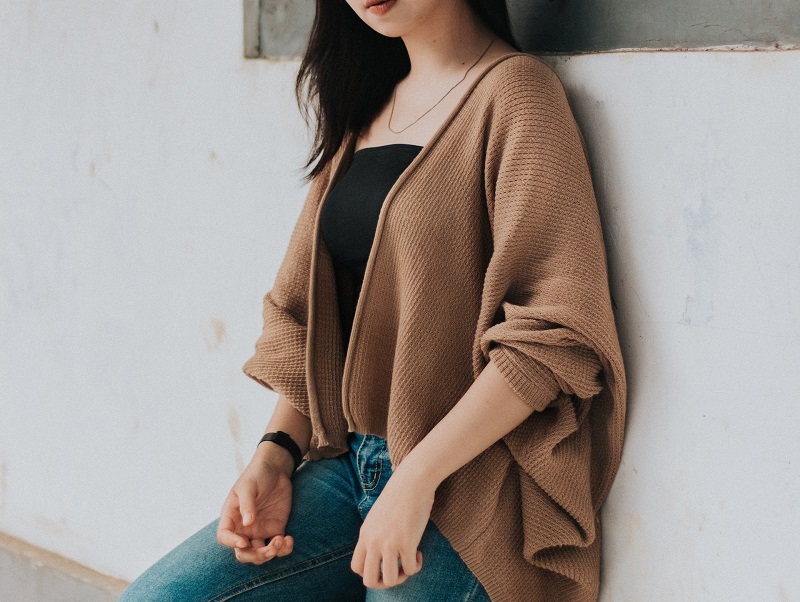
What to wear in Peru in November?
Pack plenty of layers when visiting Peru in November.
Long pants, long-sleeved shirts, and other clothing items that cover exposed skin are essential to help protect against occasional bites from insects like mosquitoes.
Bring along a lightweight jacket or cardigan for cooler nights and mornings.
Although you may think sandals might be comfortable during your visit, closed-toed shoes like sneakers are recommended since many walks will involve rocky trails, cobblestone streets, or uneven ground.
Be sure to pick up some accessories for the sunny days too.
Wide-brimmed hats provide ample protection from strong tropical sun rays.
What to wear in Peru in December?
Taking a trip to Peru in December requires careful consideration of the wardrobe you bring.
As temperatures fluctuate throughout the season and throughout the day from cool mornings and nights to hot afternoons, it is important to dress accordingly.
A lightweight jacket and long-sleeved tops are handy for cooler days, along with light trousers or leggings, while shorts or a skirt offer a sophisticated look when heading out after indulging in some sunny activities.
Hats, sunglasses, sunscreen, and insect repellent will also help protect you from UV rays and mosquito bites.
For your feet opt for trainers as sandals may be too slippery for some terrains.
And don’t forget to pack a swimsuit – you might come across an inviting beach or pool.
Peru is an incredible place to explore and make amazing memories.
By keeping your packing list light, wearing the correct clothing for each destination, and selecting items that can handle all sorts of weather conditions, you can ensure a comfortable and enjoyable journey in the Land of the Incas.
So take a deep breath, take the plunge, and have the time of your life!
Make sure to explore everything from local restaurants to secret lagoons – don’t forget to take lots of pictures along the way.
Your trip will end with so many happy memories that will last well after you say goodbye.
More destinations to discover:
- What to Wear in Colombia?
- What to Wear In Brazil?
Recent Posts
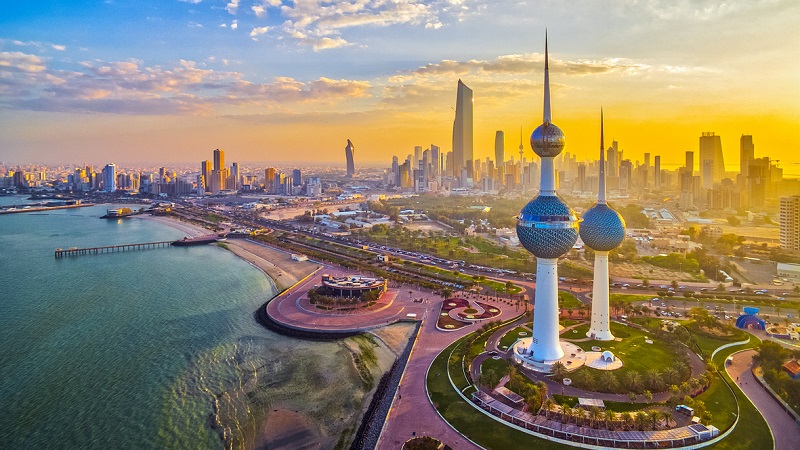
What to Pack and Wear In Kuwait?
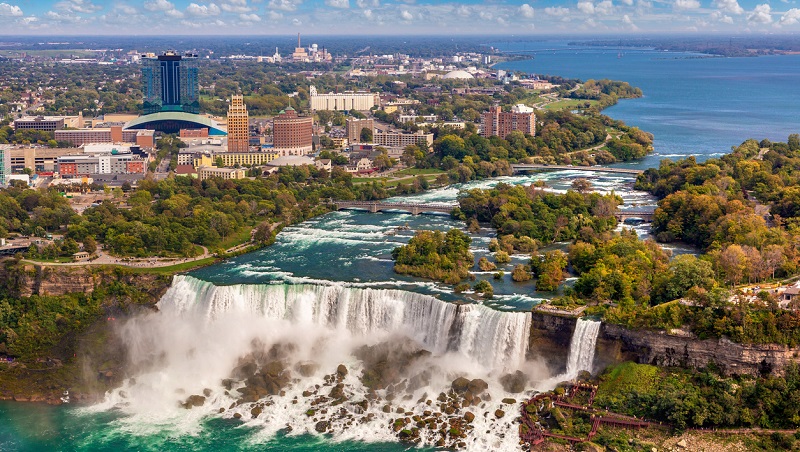
What to Pack and Wear In Niagara Falls For 2023?

- Sacred Valley
- Aguas Calientes
- Peruvian Amazon
- Short Inca Trail 2D
- Classic Inca Trail 4D/3N
- Inca Trail 5D/4N
- Luxury Inca Trail Tour 5D
- Lares and Inca Trail 4D
- Salkantay Inca Trail Trek 6D
- Ancascocha Trail 3D
- Ancascocha Trek 5D
- Huchuy Qosqo Trek 3D
- Lares Valley Cultural Trek 3D
- Lares Trek to Machu Picchu 4D
- Salkantay Trail 4D
- Salkantay Trek 5D
- Choquequirao Trek to Machu Picchu 7D
- Choquequirao Adventure to Machu Picchu 8D
- Choquequirao trek to Machu Picchu (with Vilcabamba) 9D
- Machu Picchu Tours
- Search Treks by Number of Days
- Ausangate Trek 5D
- Ausangate Rainbow Mountain Tour 5D
- Ausangate to Laguna Sibinacocha 6D
- Palccoyo Mountain Tour 1D
- Rainbow Mountain Day Trip 1D
- Rainbow Mountain Trek 2D
- Choquequirao Trek 4D
- Choquequirao In-Depth 5D
- Choquequirao to Vitcos Trek 8D
- Classic Inca Trail 4 Days / 3 Nights
- Inca Trail 5 Days / 4 Nights
- Classic Lares Trek 4D
- Lares Trail 5D
- Laguna Humantay Tour 1D
- Salkantay Trek 5 days
- Vilcabamba Trek to Espiritu Pampa 8D
- Waqrapukara Trek 1D
- Huchuy Qosqo 2D
- Inca Trail and Choquequirao Tour 12D
- Trek Choquequirao to Espiritu Pampa 15D
- Christmas Chocolatada Trek 5D
- Inti Raymi Tour 1D
- Q’eswachaka Bridge Tour 1D
- Qoyllur Rit’i Festival Trek 2D
- Qoyllur Rit’i Pilgrimage Trek 4D
- Virgen del Carmen Festival Tour 2D
- Cusco City Tours
- Cultural Immersion Tours
- History & Nature Tours
- Family Friendly Tours
- Why Choose Apus Peru?
- Our COVID Relief Efforts
- Pre Trek Acclimatization Tour
- Trekkers Wanted Group Treks
- Clean Up Treks
- How to Prepare for Your Trek
- How to Book
- Booking Conditions
- Extras, Upgrades & Add-Ons
- Equipment Rental & Upgrades
- Trekking in Peru
- How to Prepare
- Things to Do
- Family Travel
- Culture & Festivals
- Travel Sustainably
- Apus Peru: On the Trail
Packing for Peru: The Best Packing List for your Peru Adventure
Packing for Peru can be quite unlike preparing to visit any other destination, as the climate and terrain is so varied. Because Peru’s position near the equator, it doesn’t have the sort of seasons that people from continents like North America and Europe are used to.
So what to bring to Peru is affected by whether you’ll be spending time in the jungle, the desert, on the coast, among the mountains or in the cities. Your clothing for Peru will also vary according to whether it’s the rainy or dry season – as well as what you plan to do while you’re there.
This article is the ultimate Peru packing list, taking you through all you need to know about how to dress in Peru depending on where you are. Also covered are descriptions of each season, and area-by-area guides to what to wear in Peru depending on the regions you’ll visit. We also discuss footwear, luggage and what to include on a women’s packing list for Peru.
If you’re stuck on what to pack for Peru, you can use this post as a basis for creating a packing list for your Peru trip. From what to wear in Cusco to the ultimate Amazon packing list, this guide includes all the best things to pack for Peru – including our recommended items.
This is the ultimate guide for those wondering what to bring to Peru – no matter what you’ll be doing or where you’re headed. Let’s get started by taking a look at what this beautiful country has to offer.
This post may contain affiliate links, from which we would earn a small commission, at no extra cost to you.
Table of Contents
Factors Affecting Your Peru Packing List
Where are you going in peru.
The beauty of Peru is widely renowned – and Machu Picchu is one of the most famous wonders of the world. Peruvians are proud that their country consists of three distinct areas, the coast and desert, the Andes mountains, and the Amazon jungle.
It therefore makes sense that if you are packing for a holiday taking in various parts of Peru , you should prepared for a range of eventualities. Where you are going and what you want to do in Peru will thus determine what to pack for Peru.
If you’re concerned about fitting all those things to bring to Peru into your luggage, don’t stress out. It’s so easy to get your laundry done in all the most popular tourist areas like Cusco, where they’re well used to transforming travellers’ clothing into a neatly folded pile of fresh laundry by the end of the day.
So when wondering ‘what should I pack for Peru’, do bear this in mind. A week’s worth of clothing will be plenty. This should help if you need to pack extra items like a sleeping bag if you are going to be doing any hiking.
What Are You Going to do in Peru?
Of course, what you want to do in Peru will also affect your Peru packing list.
Peru is one of the foodie capitals of the world. If you plan to spend time enjoying fine dining experiences, then packing a good capsule wardrobe is essential. The folks at restaurants in the capital, for example, tend to be extremely well dressed. This is worth bearing mind when thinking about what to wear in Lima, Peru if you plan to go there and don’t want to feel out of place.
Most people who visit Peru want to do a good deal of walking, even if they are not doing an actual hike. For example, if you visit the Rainbow Mountain or Machu Picchu, then you will need some good quality adventure wear.
If you want to do a multi day hike… then a different set of kit will be needed. If you are not sure where you could trek to, why not be inspired by this wonderful guide to the best hikes in Peru ?
Whatever you’re doing, ideally your list of what to pack when going to Peru should include lots of quick-drying layers. This means you can alter your clothing, even during the day as the weather changes. Plus if it gets wet it will be dry much faster.
Your list of what to pack for Cusco and Machu Picchu should include, for example, clothes for the city and get suitable for hiking and high altitudes.
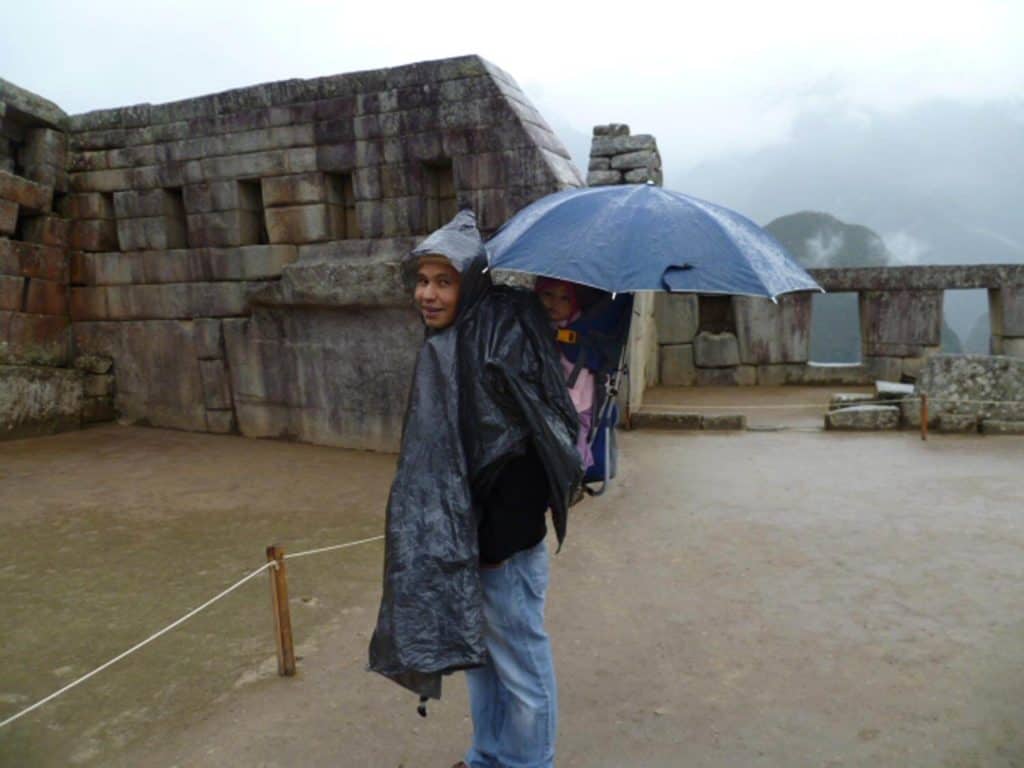
How will the Weather Affect Your Peru Packing List?
Let’s begin by explaining the two distinct seasons in Peru – the wet or rainy season and the dry season – as these will affect what to wear in Peru and thus what to bring to Peru.
Rainy Season in Peru
Peru’s rainy season lasts from November to March, with the early months of the year tending to be the wettest and warmest of all. If you’re visiting then, your selection of clothes to wear in Peru will need to include some waterproof gear.
What to pack for a trip to Peru is a little more complicated than that, however, as the weather varies depending on whether you’re in the mountains or rainforest, near the desert or by the coast. In Lima and at northern beaches, it’s warm and dry during these months – a great time for swimming or surfing.
Find out more about Peru’s wet season in this guide .
Dry Season in Peru
So during your visit it will be dry season in Peru. What to pack? Again this varies according to where you’ll be and what you plan to do. The dry season is between May and October, and then you can expect a lot of sunshine with cooler temperatures by the coast and at night. This means adding at least one sweater to the list of what to pack for your Peru trip.
Read all about the climate in Peru area-by-area in this article .
You can also find some more specific month by month packing advice near the end of this post.
A General Peru Travel Packing List
Let’s get started with a general, at-a-glance list of things to pack for Peru. Which you’ll take will vary by area and season, so there are more specific guides to various regions beneath this list. The following are just ideas to get you started, before moving on to how to pack for Peru by area and according to your planned activities.
You can then pick out the items you’ll need from the following list. We’ve given our recommendations for those products you may need to buy, based on many years of Peru travel experience!
Footwear for Peru
Sandals – For the beaches or Lima in summer (January to March).
- We recommend the Teva Hurricane XLT2 for women , or the men’s version .
Smart Shoes or Boots – For Lima & Cusco.
Walking boots or sturdy, sporty shoes – For any trekking (eg Inca trail, Machu Picchu etc).
- The Merrell Moab 2 waterproof hiking boots for women or men . This also comes as a hiking shoe for women or men .
- A pair of Havaianas is perfect at the beach or for walking to the showers
- Classic clogs from Crocs are ideal for indoor wear or when you’re camping
Hiking Socks – Cushioned ones are best as they add extra comfort.
- We love the Merrell range of hiking socks for men and women.
Regular Socks
Pants for Peru
Jeans – To wear anywhere but while hiking.
Waterproof Outer Pants
- Rain pants to be worn on the outer are ideal for wet weather
Athletic Bottoms or Trekking Pants – Wear long pants for the Amazon rainforest.
- Columbia’s waterproof, stretch and convertible cargo pants are ideal.
Leggings – Including thermal ones for cold areas or high altitudes.
Shorts – For the beaches only.
Tops for Peru
T-Shirts – Lightweight, fast drying ones are best.
Moisture-Wicking Tops
- A moisture-wicking shirt is ideal for hot weather or strenuous activity
Sports Bras
- A specially designed sports bra offers added support, and is also fast-drying
Long-sleeved, Loose Fitting Shirts – For the Amazon rainforest.
- Columbia shirts and t-shirts are ideal when packing for Peru.
Dresses or Tailored Trousers & a Shirt – 1 or 2 for restaurants in the city.
Long-Sleeved Base Layer
- There are many brands to choose from .
Sweater/s – Especially for high altitude areas.
- A lightweight hiking sweater is perfect.
Outerwear for Peru
Down Jacket – For colder or higher-up areas.
- Columbia’s down jacket range offers plenty of choice.
Rain Jacket – Even during the dry season there can be showers.
- A packable rain jacket or poncho is ideal if you may need to carry it.
Scarf – You could wear this on the plane.
- A security scarf has a hidden pocket for all your valuables and documents.
Beanie Hat – For colder areas.
- A Meriwool Beani e is ideal and is a unisex design available in 5 colours.
Sun Hat – for the beach or the Amazon.
- A sun hat with a strap is the best option.
Other Things to Take to Peru
Swimsuit – For cities, coast & desert areas.
Power Adapter – Many hotels don’t supply these so bring your own.
- We like this one as it covers the globe and has 4 USB ports.
Flashlight – For budget travel or hiking (there can be dimly-lit alleyways in Peru).
- Any lightweight LED flashlight is a good bet.
Insect Repellent
- An eco-friendly formula is kinder to Peru – and the rest of the planet.
Sunscreen – You’ll also need these at high altitudes, even if it’s cold, to prevent burning.
Water Bottle
- You can also buy eco-conscious water bottles .
First Aid Kit – Include painkillers, altitude sickness or anti-malaria meds & plasters (for blisters).
- This ultra compact travel first aid kit is ideal.
Daypack – Especially for hikers.
- The Osprey Daylite is a reliable, lightweight choice available in 13 colours.
Backpack – With wheels for your luggage.
- We recommend the Osprey Fairview 65 for women or the Osprey Farpoint 65 for men .
Packing Cubes – These can help you stay organised while making the most of the space.
- Osprey’s range of packing cubes in all shapes and sizes are also highly recommended.
- A filter water bottle is a must.
- Black Diamond LED headlamp
Sleeping Bag
- A down sleeping bag is the warmest and most lightweight choice.
Sleeping Bag Liner
- A sleeping bag liner adds warmth and keeps your sleeping bag cleaner.
- Thermal base layer sets are ideal for high altitudes, where it can be cold overnight.
Travel Towel
- A fast-drying travel towel has so many uses when camping or at the beach.
- A travel-sized umbrella for showers in the city or at the beach.
Reusable Shopping Bag
- Portable shopping bags are ideal for separating stuff too.
- You’ll need a dry bag for wet towels, swimsuits or clothing.
Trekking Poles
- A pair of hiking poles is ideal for more challenging treks.
- An on-the-go water purifier pen
Altitude Sickness Medication
- Ask your doctor or pharmacist for Diamox or Acetazolamide.
Portable Power Bank
- A portable charger can power up your phone (and camera) on the go.
- A lip balm with sunscreen is ideal for both hot and cold climates.
Hygiene Products
- Travel hand sanitizer , travel wipes and pocket tissues .
Travel Toilet Paper
- You’ll need toilet paper for remote locations without facilities.
For the Flight
Travel Pillow – A neck pillow may also be useful for journeys in Peru.
- These are all pretty comfortable if you look for one with good reviews !
Eye Mask – This may help you sleep on board as it blocks out light.
- Pure silk is the softest, most comfortable option & this one comes in around 30 colours.
Compression Socks – To help ward off DVT.
- Pick whatever colour & style you like!
Travel Wrap
- Travel wraps can provide extra warmth, and/or privacy for sleeping
Specific Packing Lists by Peru Areas
Now that you have an overview of what you may need to take when you travel in Peru, let’s move on to more specific locations.
Rainbow Mountain & Cusco Packing List (+ other High Altitude Locations)
Cusco has a totally different climate to Lima, thanks to its higher altitude. So when it comes to what to take to Peru, you will definitely need to pack warmer clothing for Cusco. Rainbow Mountain is generally done as a day trip, and you need to pack warm clothes for this area too.
Your packing list for Cusco, Peru or list of what to what to wear at Rainbow Mountain should therefore include outerwear like a down jacket, more than one sweater or hoodie, a long-sleeved base layer and some sort of thermal pants as well as a scarf, gloves and a hat.
If you plan to visit any restaurants in Cusco, you may also need a more dressy outfit such as a dress or tailored pants and a smart shirt.
Essentials to Include:
- Long-sleeved base layers
- Thermal pants
- Down jacket
- Hat, scarf & gloves
- A smart outfit for Cusco restaurants
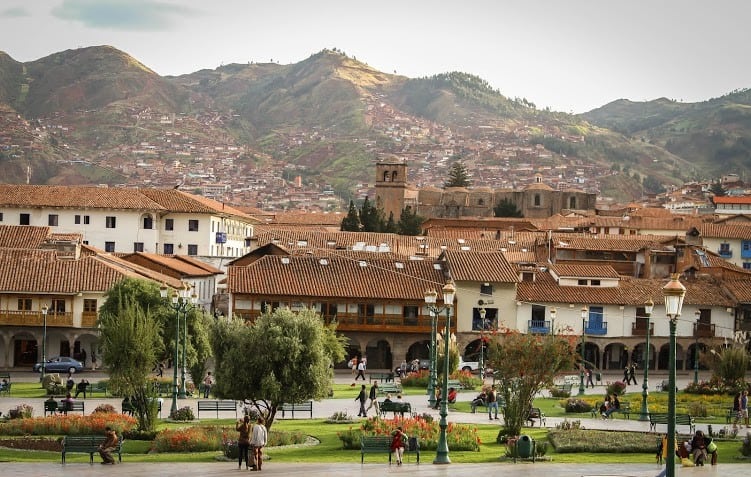
Machu Picchu & Sacred Valley Packing List
When you’re heading to the Sacred Valley area – including Machu Picchu – you’ll be hiking at high altitudes, where it’s colder. However all that activity is also likely to make you get hot and sweaty, which is why fast-drying layers are key.
Things to add to your Machu Picchu packing list include clothing and worn-in footwear suitable for hiking, a sweater or two and a rain jacket.
Key Essentials to Include:
- Moisture-wicking tops
- Rain jacket
- Hiking footwear (worn-in)
Find out all about what to pack for the Sacred Valley and Machu Picchu in this complete guide
Packing for Trekking – Day Hikes & the Inca Trail
If you’re taking to the Inca Trail, then your packing list really needs to focus on clothing, footwear and other items that are necessary for hiking. You will definitely need a small daypack.
For day hikes, items you’ll require include at least one pair of sturdy, solid shoes – these do not necessarily need to be hiking boots, unless your ankles require that extra support. But the footwear you bring should always be worn in prior to your trip unless you want to be stopped in your tracks by blisters or your pair of ill-fitting hiking boots.
Read our dedicated post on packing for the Inca Trail here .
Amazon Rainforest Packing List
An Amazon jungle packing list is a different matter altogether. What to wear in the Amazon rainforest is determined by the climate, which is hot and humid to wet. Despite the temperatures, long pants are the best choice as the area has a huge population of hungry mosquitoes. If you don’t expose too much flesh, it’s more difficult for them to prey on you!
Your Amazon rainforest clothing should therefore ideally include long-sleeved, loose shirts and full length pants rather than shorts. Other items to add to any packing list for an Amazon rainforest trip include a good water bottle, sunglasses, a sun hat (with a strap if possible) and hiking socks. You may also need rain boots if these are not supplied.
When making your Amazon rainforest packing list, remember that the clue is in the name. It’s going to be wet. What to wear in the Amazon jungle should thus be light and quick-drying to stop you being weighed down by heavy, sodden clothing. The perfect clothes to wear in the Amazon rainforest are light and cool, with long legs or sleeves to repel biting insects.
- Long sleeved, loose shirts
- Hiking socks
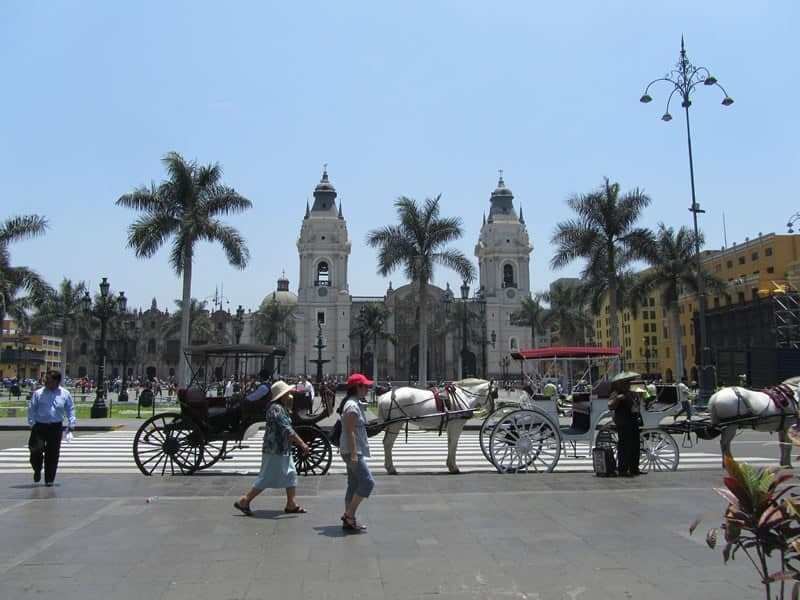
Lima or Peru Coast and Deserts Packing List
If you’re wondering what to wear in Lima, Peru – as well as at the beach or in the desert – this section is for you. One thing you will definitely need is a good swimsuit, especially between January and March when the weather is hottest.
Even when it’s the wet season elsewhere in Peru, along the coast the weather tends to be dry and warm. In general you’ll be wearing summer clothing and swimsuits, though it is worth bringing a sweater and a lightweight, packable rain jacket.
You’ll need sunglasses, and a sun hat is also a good thing to bring. If you want to wear shorts in Peru this is the place to do so, and sandals are also ideal for this climate. A decent pair of hiking sandals will take you to most places.
If you are heading out in Lima at night, then do pack some suitable clothing, like a pair of tailored pants and a top, or a stylish dress. The restaurants here are packed with well-dressed people, and you don’t want to feel uncomfortable because you’re underdressed by comparison!
- A dressy outfit for Lima restaurants
A Women’s Packing List for Peru
A female packing list for Peru isn’t really too much different from one for men. There are some things to know, however, which is why we’ve included this section.
Let’s talk about leggings. Do they belong on a list of what not to wear in Peru? Peru is in general quite conservative, so you may wonder whether women’s clothing like yoga pants or leggings are the norm. There’s no cause for concern, however – yoga pants and leggings are perfectly acceptable clothes in Peru.
Normally leggings or yoga pants are lightweight, comfortable and quick-drying. Thinner ones may also be worn beneath other layers. You could also wear them when flying or at night, and could pack a thermal pair for colder areas. The only drawback, really, is their lack of pockets, but this may not matter if you’re happy to carry everything in your daypack.
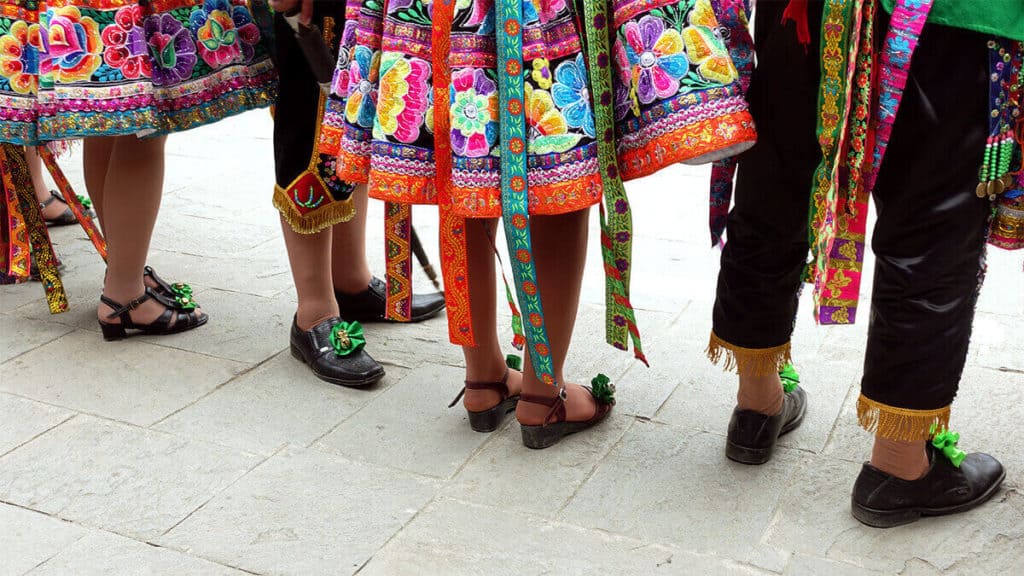
Shoes for Peru
We’ve already touched on shoes for Peru in out overall packing list plus in various area sections, but let’s look at footwear in a little more depth here. If you’re trekking, you need a good, solid pair of hiking boots – or at least some sturdy, comfortable footwear.
Not everyone likes high-top boots, but if you’ve ever had any issues with your ankles then they are the best choice. A sound pair of sporty, sturdy shoes makes a decent alternative – but whatever you pick, make sure they are worn in before you leave home.
Another option is to take two pairs – one being trekking boots and the other a pair of lightweight, sporting sneakers. You’ll also need about 3 or 4 pairs of hiking socks, plus some regular ones to wear when you’re not trekking. You may also want to add some insoles to your hiking boots or shoes.
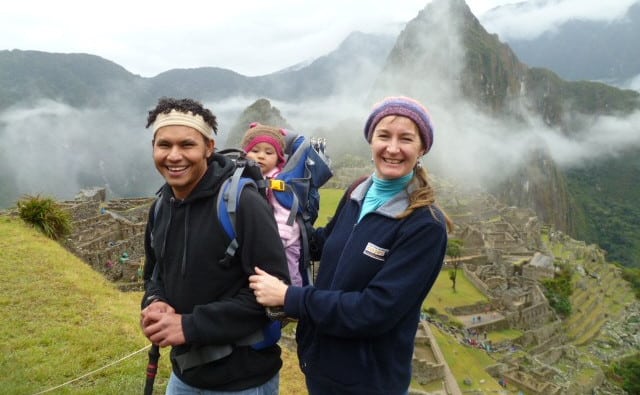
Backpack or Luggage? Which is the Best Choice for Peru?
There are quite a lot of cobblestone streets in Cusco. Also, footpaths there are not normally very wide, and can also be quite cracked at times. For these reasons, you will need a backpack rather than a suitcase.
We love the new convertible backpacks which also have wheels so you can pull them along at airports and inside hotels. The Osprey Farpoint 65 for men and Fairview 65 for women are a good check-in size, and both have zip-away backpack straps.
Backpack Packing Cubes
A set of packing cubes can really help you stay organized during your Peru trip. You can sort clothes by days, type or separate clean and dirty laundry. There are also cubes designed for specific items like shoes, toiletries and electronics. The Osprey range of packing cubes is again well worth checking out.
Again Osprey come up trumps with their Daylite 13 litre daypack , which comes in 13 colours and has a key clip, front pocket, mesh side pockets and an interior section for a hydration reservoir or your tablet. They also have lots of larger packs to choose from if you want something bigger.
Packing for a Flight to Peru
Packing for the aeroplane itself is something else to think about. Again, layers are key. You can also wear items like your scarf on board to save weight – and to wrap around you if it gets chilly!
Comfort is also paramount, so pick loose, lightweight clothing that you can relax and maybe even sleep in.
For the flight, items like a travel pillow can make the journey more pleasant, and may also come in handy in Peru if you take long trips. You may also like to add an eye mask so you can sleep, and some compression socks to reduce your risk of DVT.
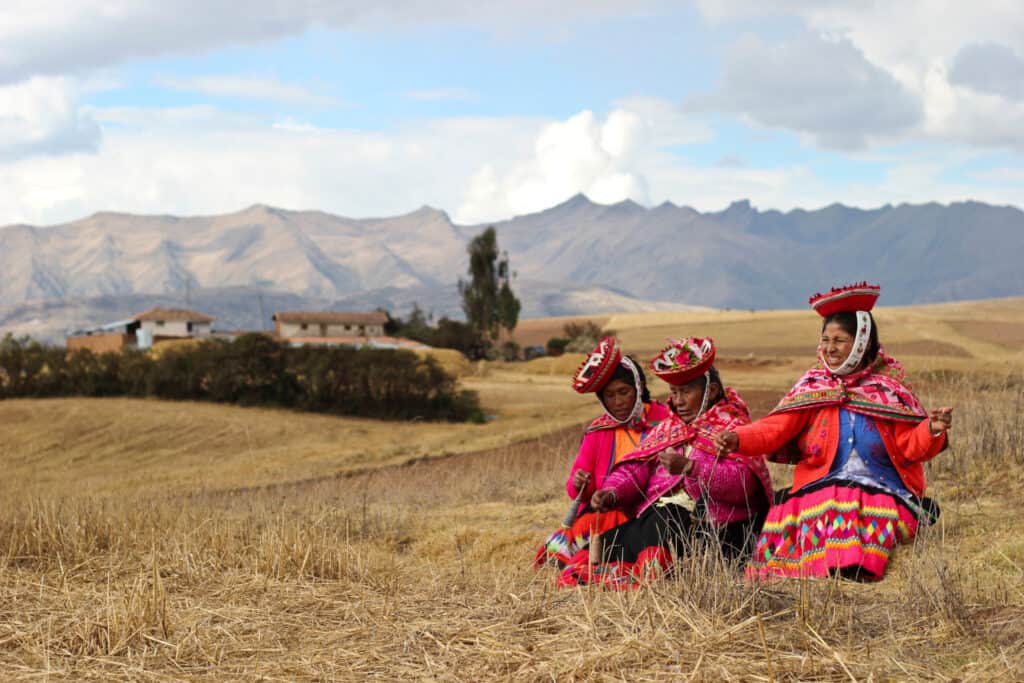
Packing for Peru Month-by-Month
So how does what to wear in Peru in October differ from a packing list for Peru in March, for instance? Well there is no short or easy answer. It depends on where you’re going, what you’re doing and which season it is – though that will also vary according to where you are.
For advice on this, refer to the sections above on the wet and dry seasons and the areas and you’ll see that what to wear in Peru in August will be determined by the fact that it’s the dry season – in most places. What to pack for Peru in December may be different because it’s the rainy season. And so on.
In a nutshell, what to pack for Peru in September, February or any other month varies widely. Hence the detail in this post!
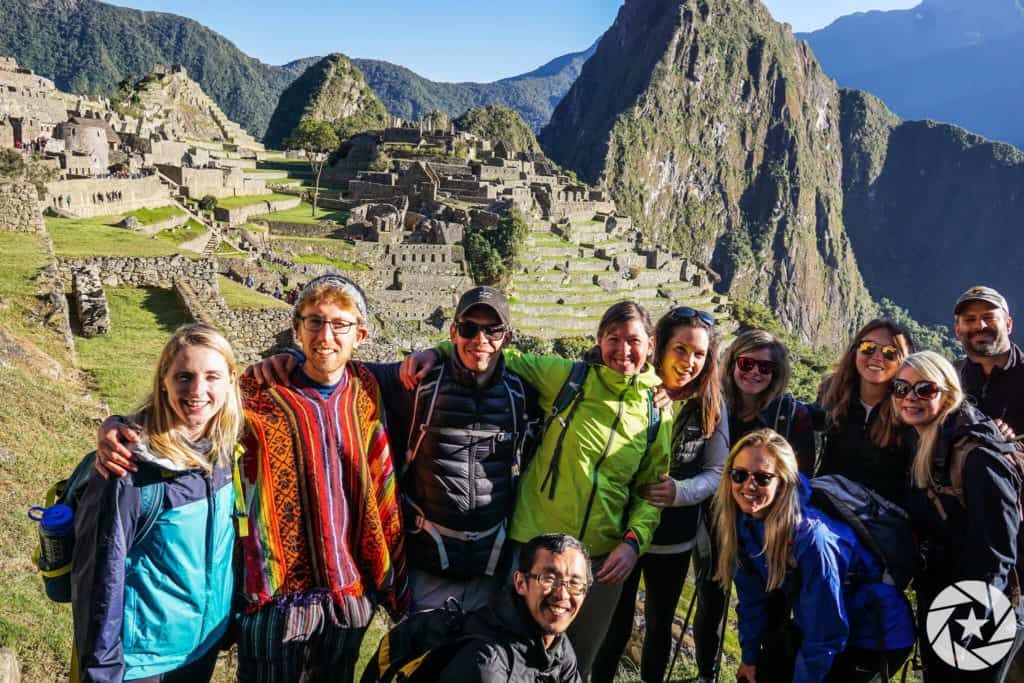
What Will you Add to Your Peru Packing List?
From the ideal rainforest outfit to avoid mosquito bites to how to dress in Cusco, Peru by night, hopefully this complete travel and backpacking Peru packing list has given you enough information so you can create your list without feeling overwhelmed. Simply focus on where you’re going, the season and what you’ll do there, and you’re sure to arrive well prepared – all ready to have the most amazing time!
Like It? Pin It!
Hiking in peru.
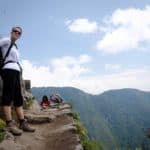
Peru Trip Planning
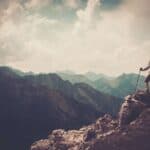
What our clients are saying about us
Apus on facebook.
https://www.facebook.com/ApusPeruAdventure/
Proceed Booking
Already a member, don't have an account create one., or continue as guest.
- Write For Us
- Chachapoyas
- Photo Stories
- Food & Drink
- Culture & Society
- Travel Tips & Info
Select Page
Packing for Peru: A List of What to Bring and What to Leave at Home
Posted by Tony Dunnell | Last updated May 1, 2020 | Travel Tips & Info | 8 |
To help you decide, here’s a packing list for Peru broken up into various sections. It’s aimed at people traveling fairly light on a low to average budget. Quantities, where suggested, are just a rough guide and naturally depend on how much time you have in Peru .
If you don’t already know how you’re going to carry all your clothes, gadgets and gear, then read more about backpacks for Peru first, as well as the benefits of carrying a daypack.
Packing for Peru: The Basics
When you’re thinking about what clothes to pack for Peru, keep in mind the distinct geographic regions of Peru and the huge differences in altitude. One day you can be in the heat of one of Peru’s Amazon destinations , and the next in the chilly heights of the Andes, so you need to be adaptable. Think in layers and be flexible, but don’t pack too much.
- 1 pair of shoes/trainers/sneakers for day-to-day use
- 1 pair of flip-flops/sandals
- 1 lightweight waterproof jacket (or poncho)
- 1 warm jacket or lightweight fleece for cold weather
- 1 pair of trousers/pants/jeans for day-to-day use
- (1 pair of convertible trousers/pants that turn into shorts; not essential, but handy and good for trekking)
- 1 pair of shorts
- 1 swimsuit/swimming shorts (men could use their swimming shorts day-to-day as well, maybe replacing standard shorts to save space)
- 2 or 3 t-shirts
- 3 or 4 pieces of underwear (boxers, briefs, Y-fronts, frilly knickers… whatever makes you feel good)
- 3 or 4 pairs of lightweight socks (depending on how much hand-washing you want to do)
- 1 or 2 lightweight shirts or dressy outfits to wear on a night out, formal occasion, trying to get laid etc.
- 1 hat or cap
- 1 pair of sunglasses (even if you don’t normally wear them, sunglasses are recommended to protect your eyes from sun especially at high altitudes, when trekking on snow, or when on a boat/kayak/canoe when light reflects up off the water)
Toiletries and medicine:
- 1 wash bag with all the basics like toothbrush, toothpaste, small bar of soap, shampoo, razor etc.
- 1 insect repellent spray (DEET is nasty stuff, but you’ll learn to love it when the mosquitoes attack)
- 1 bottle of sunscreen, high factor for high altitudes locations in Peru
- Any prescription medicines you might need
- (Anti-malarial medicine, if your doctor recommends it)
- Throw in some painkillers and plasters just in case
- Birth control
- Small travel towel (most hostels and hotels supply a towel, even if you have to ask, so this isn’t essential)
Electronics and gadgets:
- Plug adapter ( read more about electricity in Peru before you travel)
- Camera and accessories
- Smartphone, not essential, but handy
- Laptop (or tablet), if you really need to bring a laptop to Peru
- E-reader (I use a Kindle Paperwhite)
- Small flashlight
- Chargers for all your gadgets
- A lock to secure your locker if you’ll be staying in hostels (some hostels provide these, others have them to buy, but it’s handy – but not essential — to have your own)
Documents and paperwork:
- Passport (valid for at least six months after return date of travel)
- Flight tickets
- Wallet with bank cards, some cash (dollars or soles) and driving license (if you think you might drive in Peru)
What to Pack for Peru for Specific Tours and Activities
Here are a few more things to consider packing for Peru if you’ll be focusing on certain activities…
Trekking and outdoor activities:
- Trekking shoes
- Thermal underwear for high-altitude or cold-climate trekking
- Trekking socks, which will help prevent blisters
- Walking sticks, if you use them (you can buy these in trekking hotspots in Peru, and many tour agencies can provide them)
- Pocket knife
- Waterproof bags for cameras and other electronics
- Duct tape (always useful)
- Camping gear, but only if you know you’ll need it (this is normally provided by trekking agencies)
Jungle trips:
- Long-sleeve shirt and long trousers to protect against mosquitoes and other biting insects
- Strong insect repellent (increase the DEET)
- Waterproof bags for electronics
- Mosquito net (most jungle treks and jungle lodges provide mosquito nets, so only take one if you know you’ll need it)
- (A hipflask to fill with whisky, rum or vodka for long boat trips. Obviously non-essential, but highly recommended. By me, at least)
What You (Probably) Don’t Need to Pack for Peru
- Tent – Only if you know for sure that you’ll be camping independently in Peru. Campsites are rare and most backpackers never use a tent in Peru unless they’re on a guided trek, in which case the tent is provided.
- Sleeping bag – Unless you’ll be camping independently, it’s highly unlikely you’ll ever use a sleeping bag in Peru.
- Mosquito net – As mentioned above, jungle lodges and jungle tour operators almost always provide mosquito nets. You’ll probably only need your own mosquito net if you’ll be staying independently in rural areas in jungle regions. Otherwise, you’re unlikely to ever use it.
- Voltage converter – Many modern electrical devices (laptops, smartphones etc.) are designed to take both 110 and 220 volts. So before you go buying a heavy voltage converter for Peru, find out if any of your devices actually need it. They probably don’t.
- Printed guidebooks – The days of carrying a copy of Lonely Planet Peru have pretty much gone thanks to the internet. It’s nice to have a copy, sure, but if you want to reduce weight then ditch the guidebook.
- Unnecessary valuables – You don’t need to bring expensive jewelry to Peru. Leave it all at home and buy some cool local stuff made from beads or whatever.
Any Questions About Packing for Peru?
Related posts, about the author.
Tony Dunnell
Tony Dunnell is a freelance travel writer living in Peru since 2009. He is the owner of New Peruvian and a contributor to publications such as Atlas Obscura, VICE and Paste Magazine. You can see his writer portfolio at tonydunnell.com
What are your specific suggestions for the Cusco-MP-SV region for August. I’m having a difficult time deciding on clothing, because I’m the type of person that is cold when standing still but sweats buckets (it’s kind of disgusting) once I start moving around. I have zip-off pants-to-shorts, but it’s going to look a tad silly if my base layer is thermal underwear.
Hi Jason. With easily removable layers and pants-to-shorts you should be fine. I doubt you’ll need the thermal underwear during the day, especially when you’re trekking (and even standing still) but maybe at night. So yeah, you should be fine. Thanks, Tony.
Hi Tony, Son just arrived in Lima, heading to Tarapoto for a year with Peace Corps, I will be down in November for about 4 weeks. Son is Andruw Clark on FB. Cheers
Hi can I bring a metal detector in peru?
Hi Jacques. I don’t think you’ll have any problems with a metal detector. At least, I can’t think of any reason why they’d have a problem. Thanks, Tony.
Driving Licence – valid ONLY WITH the International Driving Licence. Available in your country – see internet for details. Only valid for one year, should this be an issue.
The new eucalyptus lemon oil repellent formulations have been proven to be superior to DEET. And I have field tested the Cutters brand in Peru, and I will never go back to DEET.
Interesting. Would have to try it myself though. I’ve tried a few alternatives to DEET and they’ve all been way less effective.
Trackbacks/Pingbacks
- The Dress Code in Peru in 2023: From Day-to-Day Clothing to Formal Events | New Peruvian - […] You’ve packed your bags for Peru. You’ve got all the clothes you need for walking the streets of Lima…
Leave a reply Cancel reply
Your email address will not be published. Required fields are marked *
Notify me of follow-up comments by email.
Notify me of new posts by email.
This site uses Akismet to reduce spam. Learn how your comment data is processed .
- Facebook 2.7k Followers
- Twitter 418 Followers
- Pinterest 1.6k Followers
- Instagram 173 Followers
Recent Posts

Book Hostels and Hotels
Subscribe to our newsletter.
Join the New Peruvian mailing list to receive the latest news and updates from Peru.
You have Successfully Subscribed!
Pin it on pinterest.
Thanks for commenting! If your comment requires an answer, I'll try to reply as soon as possible. In the meantime, please share this post with your friends.

- X (Twitter)

What to Pack for Peru – Your Complete Peru Packing List
Packing for Peru is complex. With three major climate zones and more microclimates than you could ever count, the country requires you to take clothing for many different scenarios.
You need to be prepared for the cold of the Andes, the humidity of the jungle and the desert coast in Lima. At the same time, you don’t want to take multiple suitcases that you will have to drag around the country.
We believe that packing light is possible, no matter where you go. Yes, that means that you can pack light even for a country like Peru. To help you, we have put together this Peru packing list. It will help you pack everything you need without taking too much.
Therefore, keep reading to find out exactly what to pack for Peru!
Table of Contents

Your Complete Peru Packing List
General advice, climate zones.

As we already mentioned above, you need to prepare for multiple climate zones.
At the coast, you have the deserts. This is where you will find beaches, sand dunes, Peru’s capital Lima and the remains of many ancient civilisations (great places to visit are, for example, Caral and Paracas ). Here, you will encounter warm weather with little rainfall.
But don’t let the lack of rainfall deceive you. Some places, like Lima, are known for their humidity that creeps up at night. Plus, as in many deserts around the world, the temperature drops when the sun disappears, so be prepared for hot days and cold nights.
The next climate zone is the mountains. The Andes reach altitudes so high that, depending on where you go, you need to worry about altitude sickness. At this height, you will have a much colder climate compared to the coast. Depending on the season, the temperature often drops below freezing at night. Besides, this region is home to many fantastic hikes, for which you will need hiking equipment.

Last, you have the Amazon rainforest. This climate zone is known for its humid heat as well as its dense forest. With its high humidity, the jungle will often leave you feeling like you’re about to melt. At the same time, you need to cover your skin to protect yourself from mosquitos and other insects.
Peru’s seasons
Peru experiences two major seasons, the dry season and the rainy season. The rainy season lasts approximately from December to March. During this time, you can expect higher temperatures and lots of rainfall.
The dry season, on the other hand, lasts approximately from May to September. This season comes with clear skies, lots of sunshine, little rain and also lower temperatures.
April, October and November are shoulder months where you can expect any kind of weather. It could be hot and rainy, cold and dry, or even both on the same day.

The lack of rain during the dry season and the fact that it coincides with the summer holiday season in the Northern hemisphere, make this season the high season. Everyone wants to visit Peru during these months, which means that prices go up and the Inca Trail will be booked out up to half a year in advance.
The rainy season, on the other hand, means fewer tourists and lower prices.
Keep in mind that the seasons give a general overview, but cannot guarantee how the weather will be during your trip. You could have rain during the dry season and sunny days during the rainy season. Plus, the many different climate zones and microclimates determine the weather, making any weather predictions unreliable.
Having travelled to Peru during both seasons, I can advise you not to worry about it too much.
Packing tips
So how do you prepare for all those different climates and also for the various seasons?
The answer is simple – take layers. You don’t need to take a warm winter jacket to the Andes. Instead, you can layer your clothes to keep warm in the mountains. The long-sleeve shirt that protects you from mosquitos in the jungle will also keep you warm in the Andes, and serve as an extra layer when the night falls along the coast.

In addition, you can rent equipment in Cusco. Are you afraid that you’re going to be cold? Then rent a down jacket in Cusco. Don’t take any hiking poles with you, but rent them instead. You can even buy some equipment there. Cusco is famous for its markets and colourful fabrics, so it is the perfect place to pick up hats and gloves.
What to pack for Peru
Let’s start with the clothes. We recommend bringing 2-3 long-sleeve shirts and as many short-sleeve shirts. You can wear the short-sleeves at the beach or in Lima, the long-sleeves in the Amazon where they will protect you from mosquitos, and you can layer them in the Andes, for extra warmth.
Try to take quick-drying fabrics so you can wash your t-shirts from time to time. If you like, you can buy clothing in a shop that specialises in outdoor gear, but to be honest, we don’t have any of those. We usually choose from what we have in our wardrobe and take clothes that we know to dry quicker than others.

In many places, you can also pay for a laundry service. That way, you will always have fresh clothes without having to carry too many of them.
#2 Trousers
You will need long trousers, and we recommend taking two pairs so that you can wash them.
When choosing which trousers to pack, don’t go for jeans. They are great for daily life but awful for travelling. First, they weigh far more than many other trousers and second, they take a long time to dry. Plus, it’ll be far too hot in the rainforest to wear them.
Instead, take light long trousers that you can wear on hot days. Layer them with underwear (we’ll get to that later) in the Andes, so you don’t get cold.

As a bonus, if you have them, you can take zip-off trousers from which you can remove the legs. These double as short and long pants, which is excellent for a trip when you travel to many climate zones. Daniel has some, and he has taken them all around the world.
On the downside, these often don’t look very stylish in cities like Lima, so you might want to take a different pair for your visit there.
Also, if you’re going to the beach, consider packing a pair of shorts. At the coast, when it gets hot during the day, you will be glad to have your legs uncovered.
#3 Thermal underwear
I said that you don’t need to buy lots of special clothes for your trip to Peru and you can make use of what you already have at home.
One exception is thermal underwear.
I highly recommend you bring along some thermal underwear, both for the bottoms and the top. You can wear them underneath your clothes in the Andes. If you go to high altitudes, they will keep you warm, especially at night. I slept in mine while we hiked the Inca Trail and was very glad about the extra layer.

As a child and teenager, I would usually wear Odlo thermal underwear for skiing, which helped me keep warm in even the coldest snowstorms. Then, as I grew up, their baselayer bottoms eventually became too short for my legs, so I have been buying a few random pieces of equipment from outdoor stores. Make sure to shop around to get something that fits you well.
Also, before you commit to buying, think about how the top will look with your shirts. Is it going to be hidden under your top layer? Or will it be visible at the neck and you will feel awkward wearing it?
#4 Regular underwear
Take enough regular underwear for at least a week and then wash it whenever you need to. Try to take underwear that is comfortable, especially for hiking, and that you know dries quickly.
Also, make sure to pack some spare underwear into your hand luggage on your flight ! On my first flight to Lima, my luggage didn’t arrive until 24 hours later and what I regret most was not having packed fresh underwear into my hand luggage.
When packing socks, think about all the different climate zones you’re going to visit. For Lima and the beach, take light and short socks. For the Andes, take warm socks that are comfortable for hiking.

And finally, for the Amazon, make sure to pack long socks that cover your ankles. That way, you can tuck your trousers into your socks and protect yourself from leeches.
Yes, we know it looks a bit weird, but it works, and you don’t want any of those leeches on you.
Always keep in mind that you can wash your socks along the way, so you only need to take a few pairs.
#6 Fleece jacket
I have a Jack Wolfskin fleece jacket that I love and take on all of my trips. It serves as an extra layer on top of my long-sleeve shirts if I get cold, and it’s thin enough that I can wear a rain jacket on top to get even warmer.
No matter which climate zone you’re visiting, it pays off to have something on hand for cold nights. You might need it along the coast when the temperature drops after sunset. And you’ll love it in the Andes, where, depending on the altitude, you will need a warm layer all day long.

If you’re not a girl, then just ignore this point. But if you are, and you are spending time in Lima, consider taking a light dress. Lima is a city, and a dress (or any non-trekking clothes) will help you blend in.
Plus, a dress is also perfect if you’re going to the beach.
#8 Rain jacket
Even if you’re visiting Peru during the dry season, you will need a rain jacket. It can rain at any time of the year, and it’s not unusual to experience a few rain showers during the day. A rain jacket will keep you dry, and it will also keep it warm if you wear it on top of your fleece jacket in the Andes.
Plus, a rain jacket offers protection from mosquitos when visiting the Amazon! Yes, it gets hot in the jungle, but I would rather be sweaty than eaten by bugs. Not to mention that mosquitos can transmit diseases like dengue fever, malaria and yellow fever.

I am currently using a Tierra Backup rain jacket. It’s super lightweight, and I absolutely love it. Unfortunately, it isn’t widely available outside a few countries in Europe. If you come across it, though, I highly recommend you get it.
Daniel used to have the Foray Jacket from Outdoor Research , which he also loved until it got stolen. It was lightweight, comfortable and water-repellent, so perfect for travelling.
As an alternative, you can either buy a rain poncho or pick one up in Cusco. The advantage of a poncho is that it can also cover your backpack or handbag, so you don’t need to worry too much about it. On the downside, most rain ponchos you can buy are still made for one-time use and produce a lot of plastic. Consider getting a reusable one at home instead of a cheap plastic one in Cusco.
#9 Warm jacket
Carrying a warm jacket with you is not mandatory for a trip to Peru. I never had one and combined instead my fleece jacket, my rain jacket and multiple layers underneath. That was enough to keep me warm.
If you are afraid of getting cold, especially if you’re hiking up to high altitudes like Rainbow Mountain, we recommend that you rent a down jacket in Cusco. You can find multiple shops that rent outdoor equipment, and that way, you won’t have to carry it with you for your whole trip.

In addition, you can also buy cheap clothes at the local market in Cusco. I got a woollen jacket with a llama pattern which I wore for most of my time in the Andes. Then, when I moved on to a warmer climate zone, I gave it away to a girl I met in a hostel. She was happy about her new jacket, and I was pleased that I didn’t have to carry it anymore.
#10 Hat and gloves
Up in the Andes, you will be happy to have a woollen hat that keeps your head warm. You should also consider taking gloves, especially if you go to high altitudes.
Once again, this is something you can easily pick up in Cusco. You will find lots of colourful hats and gloves at the local markets.
#11 Swimsuit
If you’re only going to the Andes, you can leave the swimsuit at home. But if you’re visiting any of the other climate zones, you should pack a swimsuit.

Even if you’re not planning on going to the beach, your hotel might have a pool. Or maybe you find a waterfall in the jungle where you can swim. As a swimsuit is lightweight and easy to carry, it doesn’t hurt to put one into your bag.
You need to take a pair of shoes to Peru. Most websites will probably recommend hiking boots, especially if you go trekking in the Andes.
I have to admit that I’ve only taken hiking boots on a trip once before, and I don’t like carrying them. That’s why I usually travel with trainers only. I completed the Inca Trail while wearing a pair of Nike trainers and I currently own a pair of Skechers sneakers that I use for all of my hikes.
I love my shoes because I can blend in while wearing them in the city and they are still great for hiking. It saves me from having to carry a separate pair of hiking boots, which are usually very bulky.

Daniel, on the other hand, loves his hiking boots. He also wears them almost daily on long trips, so he’s not too bothered about carrying them.
Go with what is comfortable with you, but know that it is possible to complete the Inca trail with sneakers. Just make sure they’re proper trainers with a good profile underneath so you don’t slip on wet trails.
#13 Sandals / flip flops
Take a pair of either sandals or flip flops with you. If you go to the beach, you will be happy about having open shoes. You can also wear them in Lima and the Amazon. Even though you should wear closed shoes during the day in the rainforest, you will be happy to change your footwear in the evening, when you relax in your lodge.
You don’t need anything fancy. Take whatever flip flops you have at home. As an alternative, you can also get nice sandals or waterproof Teva sandals. I had those as a child for kayaking and always loved them.
#14 Toiletries
You will need to take all the toiletries you need. This includes a toothbrush, toothpaste, body wash, shampoo, deodorant and a hairbrush. Also, make sure to pack any moisturisers or skin-care products that you rely on regularly.

Just be careful not to take too much. Use small bottles if you want to take a variety of products. And for every item you pack, ask yourself if you really need it or if you could go without it for a while.
#15 Laundry detergent
Pack a small bottle of hand-washing laundry detergent so you can wash your clothes along the way. I usually carry a bottle of Sea to Summit Wilderness Wash . This soap is biodegradable, and even though the bottle is small, it will go a long way. I can travel for weeks or sometimes months before I’ve used all of it.
Plus, it’s an all-purpose soap so it’s useful in many situations.
#16 Insect repellent
Did you know that the rain forest is home to diseases like dengue, malaria and yellow fever? To protect yourself, you will have to take insect repellent.
Plus, you don’t want to be covered by hundreds of itchy mosquito bites.
I took a repellent with 50% DEET into the Amazon, which was barely enough. Therefore, we recommend that you bring insect spray with at least 40% DEET , which will help protect you from mosquitos and other insects that bite.

As an alternative, you can also buy insect repellent with picaridin . These sprays do not contain any DEET and are very popular here in Germany. I am unfortunately allergic, so I can’t use them. Before I developed my allergy, I always took those with me on trips worldwide and found them highly efficient while not as aggressive as DEET.
#17 Sunscreen and sunglasses
No matter where in Peru you go, you need sunscreen. At the coast, you will have sunshine all day long.
While it may seem dark at first in the Amazon, you will go to a river sooner or later. The reflection of sunlight on the water is going to burn your skin.
And in the Andes, even though the weather is cold, you are at an altitude where you will experience lots of UV radiation. The atmosphere usually weakens the sunlight. But up in the Andes, the rays will travel through less atmosphere before reaching you, so you burn more easily.

We highly recommend buying waterproof sunscreen , with SPF50 or above. You will get sweaty in the Amazon, and you might get wet in the Andes, so waterproof sunscreen offers more protection. Also, consider getting a higher level of protection if you have very sensitive skin.
And don’t forget your sunglasses, to protect your eyes!
#18 First aid kit and medicines
Make sure to take a small first aid kit on your trip. It doesn’t need to be big, as long as it contains a few bandages and any over-the-counter medicines you need. We recommend packing a pain killer, something against diarrhoea and something against nausea. If you are unsure of what to take, go and see a doctor before your trip and ask for their recommendations. They will know which substances are best for you.
Besides any emergency medication, you also need to remember to pack medicines that you take regularly.
Before visiting Peru, we highly recommend that you see a doctor who specialises in travel medicine. You might need vaccines for your trip. Schedule an appointment at least two months before you leave. The earlier, the better, so you have time to get all of the necessary shots. They can also let you know if it’s recommended to take a stand-by medication against malaria or if you need anything else.
#19 Travel insurance
No matter what you do, do not travel to Peru without travel insurance! In fact, Peru was the first country where I ever made use of my insurance. I got horrible abdominal cramps while we were at Lake Titicaca, so severe that I could not move at all.

The hotel called a doctor, and fortunately, it wasn’t anything terrible. I received a few injections that instantly helped and felt good again two days later. While the doctor’s visit and the injections were surprisingly cheap, I still contacted the insurance, and they reimbursed the full cost.
Nevertheless, this was a dire warning that I could have caught something worse at any time. When Daniel got appendicitis in Japan, the hospital informed us that the treatment would be around 20,000€. The travel insurance paid all of it and until today, buying insurance is the best investment Daniel has ever made.
Depending on where you live, you have different insurances available to you. I have found that in Germany, we have access to cheaper insurances with higher coverage than in many other countries around the world.
Many international travellers buy insurance from WorldNomads, SafetyWings or Allianz Travel.
When shopping for insurances, make sure that all of the activities you plan on doing are covered. Some plans do not include hiking at high altitudes, so double-check on that.

Before you leave, write down your insurance’s emergency number and keep it somewhere safe (e.g. in your wallet). That way, you can call them at any time you need them. Don’t think that you can quickly look up the number on their website because you might not even have internet in case of an emergency.
#20 Travel documents
You will need to pack all of your travel documents. This includes your passport and any tickets, reservations, insurance documents and vouchers you need. Even if most of those documents are available digitally, we like to keep a paper copy of the most important ones. That way, if our phones break, we can still see them.

Make sure to take at least one copy of your passport, and keep it separate from your passport at all times. It’ll help to get a new document from the embassy, in case you lose your passport. We also like to send a digital copy to ourselves, which we can access from anywhere in the world.
#21 Money belt
I don’t think anyone enjoys wearing a money belt. And even though Peru is mostly safe for travellers, some crime exists. Stashing some emergency cash in your money belt will help you if your backpack or purse gets stolen. I also like to carry my passport in there when I can’t leave it at the hotel.
I have an Eagle Creek money belt . They come in multiple colours. I prefer the tan one (also called rose) because it’s less visible underneath clothing.
I also own a bra stash , which makes me feel a lot safer on my travels. I like to put a reserve credit card in there. It’s not visible at all, and if all of my money and credit cards ever get stolen, I will still be able to withdraw cash.

Talking about which. Make sure to always take a cash reserve of American Dollars. Those should be in a mint condition (or as close to a mint condition as you can get) and with an issue date as recent as possible. Also, inform your bank about your trip, so they don’t accidentally block your credit card.
#22 Quick dry towel
I always like to carry a quick-dry towel with me because you never know when you’ll need it. If you plan on doing any multi-day hikes, it will be useful to you. When we hiked the Inca Trail, the guides would always provide warm water to us so we could wash a bit. You might also need it in the Amazon or when going to one of the beaches along the coast.
I have two towels, which fit very different needs. One of them is the Lifeventure Trek Towel. It’s a microfibre towel, which dries well and is light enough to carry it in a suitcase. Plus, I like how well it dries me and how nice it feels on my skin.

My second towel is from N-rit and is a super light towel in XL. It is so small that I can easily take it everywhere and often just drop it into my daypack. The towel gets very wet after I’ve used it but then dries within an hour. Plus, it never gets smelly.
When buying your towel, make sure to compare to get something that is light, absorbent and big enough for your needs.
The Rainleaf towels receive great reviews, so they are a decent options as well.
Click here to check them out!
#23 Water bottle
When going to Peru, bring a reusable water bottle. Tap water is not safe to drink, and while you can buy bottled water everywhere, you don’t want to fill up the landscape with empty bottles.
Having a reusable bottle is especially important if you’re planning on doing any multi-day hikes, as your guides will usually fill up your bottle at the camp.
I love my Platypus bottle , which shrinks as I drink. It comes in different sizes, with the 2 litres and 1-litre versions being the most useful.

If you’re unsure about the quality of the water, you can also take a Steripen . This simple device works with UV light to treat water. The UV rays destroy more than 99.9% of all germs that live in the water and make it safe to drink. I’ve used the Steripen before when I wasn’t sure about the water quality and have never gotten sick after using it.
Peru is an exceptionally beautiful country, and you will want to bring along a good camera.
Most phones have great cameras these days, but keep in mind that taking pictures with your phone usually means you won’t have a zoom lens. That’s fine for landscape pictures, but you might want better equipment to photograph animals and take close-ups.
Daniel and I both love our Sony mirrorless cameras for the outstanding quality of the pictures. Plus, being able to change lenses means that we can take stunning photos, no matter which situation. As an alternative, you can also take a compact camera with a great zoom, which will be less expensive and lighter.

#25 Spare batteries and power bank
Remember to take any spare batteries that you will need for your camera. You don’t want to stand on top of Machu Picchu and realise that you’ve run out of power!
We also love to take a power bank with us so we can recharge our equipment as needed. In fact, we even have two. We have a tiny power bank , which is so light and small that it fits into every pocket. And we have a much more powerful one , which is heavier but which gives us more charges.
Last, bring along an adapter so you can charge your devices in the hotel room. Keep in mind any differences in voltage (you will find 220V in Peru) and, if needed, also take a converter.
#26 Headlamp
One of the items that we highly recommend you take to Peru is a headtorch. As long as you stay in hotels, you should have light most of the time. But if you go hiking or travel to the Amazon, you will need to bring your own.
Yes, most phones have a torch these days. But the advantage of using a headlamp is that you have both hands available.
I own a Black Diamond Revolt Headlamp , which gives excellent light and is rechargeable. It’s not just great because it’s more sustainable, but I also don’t need to carry spare batteries with me.

#27 Day pack
Bring a day pack that you can easily carry. If you’re going hiking, we recommend a backpack where you can pack everything you need during the day. Daniel and I both have the Osprey Talon 22 backpack, which we love for its durability.
If you’re staying in Lima, you can also consider bringing a small handbag to carry around your belongings. It’ll help you blend in more compared to a backpack.
#28 Rain cover
The chances are high that you’ll encounter rain during your trip to Peru. Therefore, we highly recommend taking a rain cover for your day pack (and maybe even for your check-in luggage, if you are taking a big backpack). Most brands offer rain covers that precisely fit their backpacks, which is what we recommend you get.
Also, consider taking a dry bag to protect your electronics. This could be as simple as a zip-lock back for a compact camera, or a bigger dry bag if you have a mirrorless camera as we do.

#29 Books and playing cards
No matter how busy your itinerary, you will have downtime in the evening or, if you go to the Amazon, during the heat of the day.
A great way to pass the time is to either read a book or play cards with fellow travellers. I always carry a Kindle with me, which allows me to take all the books I want. I also like to take some simple playing cards . They’re great for socialising and getting to know other people.
#30 Sleeping bag
Depending on whether you want to do a multi-day hike, you can consider adding a sleeping bag to your Peru packing list. If you do, make sure that it keeps you comfortable even at temperatures below zero.
Good sleeping bags are either bulky or very expensive. If you don’t want to carry one with you during your whole trip, consider renting it in Cusco. The companies there have sleeping bags that are guaranteed to keep you warm, no matter at which altitude.

If the thought of renting a sleeping bag makes you uncomfortable, you can take your own sleeping bag liner. I almost always pack one, not just for camping but also in case I arrive at a hostel where the sheets don’t look clean. Sleeping in my own liner makes me feel more comfortable.
I own a Cocoon silk mummy liner , which I love because it’s so lightweight. Plus, it’s silk, so it’s very smooth and comfortable for sleeping.
We hope you now have a better understanding of all the items you will need to pack for your trip to Peru. While it might seem like a lot at first, keep in mind that many of the things we mentioned above are either small or don’t weigh much. And they will make your trip a lot better!
As I have spent a lot of time in Peru, we have many more resources that will help you plan your trip. Go and check out the following articles:
- The best things to do in Peru
- Top 12 things to do in Lima
- How to spend your time in Iquitos, Peru’s biggest city in the Amazon rainforest
- Visit Arequipa to discover llamas, condors and colonial architecture
Like it? Pin it!

Ilona is a world traveller passionate about sharing her experiences and giving advice to fellow travellers. Having visited over 70 countries, she is always excited about her next trip.
Related Posts
Jeonju choco pie: everything you need to know, how to get to gamcheon culture village & unmissable things to do there, zurich to liechtenstein day trip – your complete guide, write a comment cancel reply.
Save my name, email, and website in this browser for the next time I comment.
Notify me of follow-up comments by email.
Notify me of new posts by email.
Cookie consent notice
Privacy overview.
Necessary cookies are absolutely essential for the website to function properly. This category only includes cookies that ensures basic functionalities and security features of the website. These cookies do not store any personal information.
Advertisement cookies help us provide our visitors with relevant ads and marketing campaigns.
Analytics cookies help us understand how our visitors interact with the website. It helps us understand the number of visitors, where the visitors are coming from, and the pages they navigate. The cookies collect this data and are reported anonymously.
Preference cookies are used to store user preferences to provide them with content that is customized accordingly. This includes the language of the website or the location of the visitor.
- Salkantay Mountain
- Machu Picchu
- Ollantaytambo
- Colca Canyon
- Lake Titicaca
- Sacred Valley of the Incas
- Amazon Rainforest
- Nazca Lines
- Choquequirao
- Walking & Trekking Tours
- Short Hikes & Tours
- Cultural Discovery
- Family Holidays
- Pristine Rainforest
- Multi-Adventure Tours
- Peru Travel Packages
- Luxury Holidays Tours
- Inca Trail Alternative Treks
- Tickets, Tours & Guide 2024
- San Martin School
- Reusable snack bags
- Reforestation with Native Trees
- Essentials Peru
- The best time to visit Peru
- What to bring on a Hike
- Things to do in Peru
- Getting to Machu Picchu
- Inca Trail Trek & Tours FAQs
- Camping Equipment
- How to Book & Payment
- Booking terms & conditions
- Coronavirus Travel Policy
What do people wear in Peru?
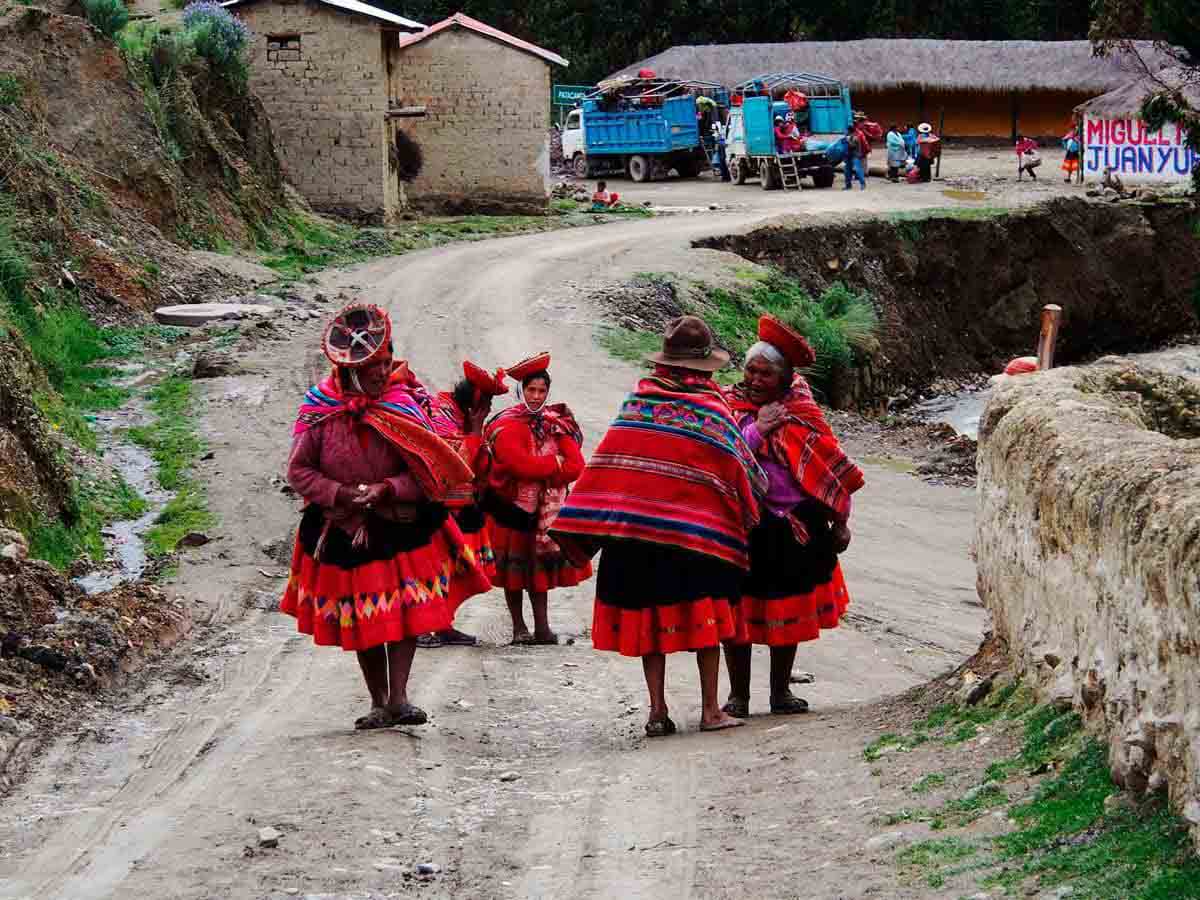
A country is identified by its landscapes, by its music, by its dances, by its color, by its people and without any doubt by its clothes. Clothing is not only part of a generation or a time, it is also part of a part a country or a region. The Peruvian hat is a clear example of this.
Peru is a country with several regions, with innumerable festivities, it is a country in which its people are a tasty mixture of ingredients and races, each city has its own identity but without losing that mixture of colors and flavors. All this is demonstrated not only in their food, but also in the clothing that belongs to each town and its parties. What do people wear in Peru? Let's learn a little more about the Peruvian dress.
What do people wear in Peru?
The costumes of the mountains are characterized by the color of their skirts and ponchos, above all in the departments of Arequipa , Cusco , Cajamarca, Ayacucho, Puno and among other cities of the mountains, although the styles of clothing are different there is something that characterizes them equally, are made of vicuña wool or some of beautiful auquénidos that our mountain range has, to protect themselves from the cold the inhabitants of this area of ​​Peru use the chullo, which is like a wool cap that covers the ears. The scissors dancers adorn their suits with mirrors and embroider their god on the back.
On the coast, their ponchos and skirts are made of cotton, although to dance marinera the cotton was replaced by silk for women. Men's suits usually have a hat made of straw to protect them from the sun.
In the jungle, men and women of some ethnic groups wear a tunic sewn on the sides and adorned with geometric figures and tints of the region, that tunic is called as cushma.
Men's clothing in Peru
Men usually wear pieces of clothing in the form of rhombuses which is the poncho that has bright colors and a lot of warmth. It is a large piece with an opening in the middle to put the head. There are many different types (depends on the region) and they are used depending on their purpose. Although there are men who use it daily, it is usual to use it for special events.
We must also bear in mind that men in Peru wear hats with special bands called "centillo". They are colorful and very festive, although the most popular hat is the chullo. The chullo is an article made by hand, knitted, with earflaps and tassels, it is made of alpaca, llama, vicuña or wool of sheep.
The pants are simple and the sweaters made of alpaca, llama or sheep wool. Jerseys are warm and often have geometric ornaments and patterned animal designs.
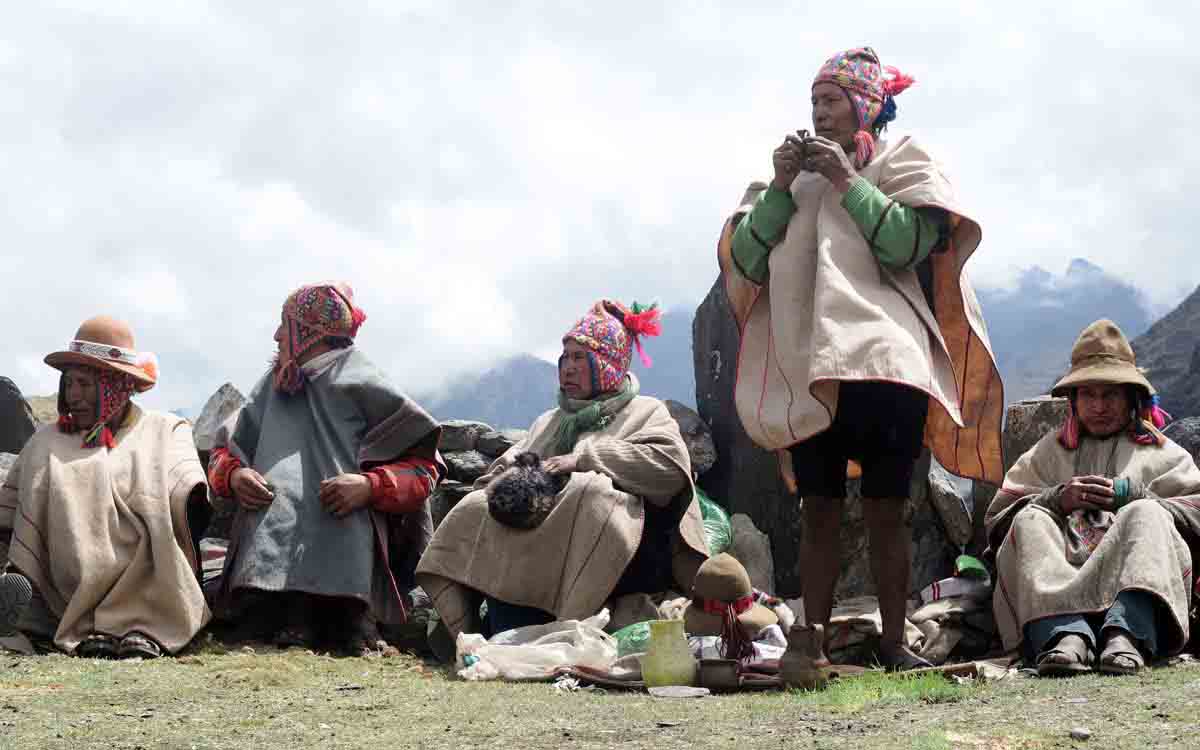
Clothing for women from Peru
The main parts of the typical clothing of the women of this country are: ponchos, dresses, blankets, skirts, tunics and hats. Each costume or piece of clothing differs greatly between one region and another, because in this way they can show the peculiarities of each city or town. For example, people can tell if a woman is from a town or city by looking at her hat or if she comes from a rich or poor family.
Women often wear cloth on the shoulders, which are rectangular pieces of hand-woven cloth. It is a traditional part and this manda is placed on the shoulders and immobilized by passing it across the forehead and knotting it in the front of the chest. Women also used to have handmade pins called "tupu" or tupo "and they used to be decorated with precious stones. Nowadays they often use safety bolts. The cloths on the shoulders worn by women are called: lliclla, k'eperina, awayu and unkuna and are differentiated by the following:
- Lliclla is a very common man's cloth used in the villages.
- K'eperina is a large cloth that is often used to carry babies and goods to transport them from one place to another.
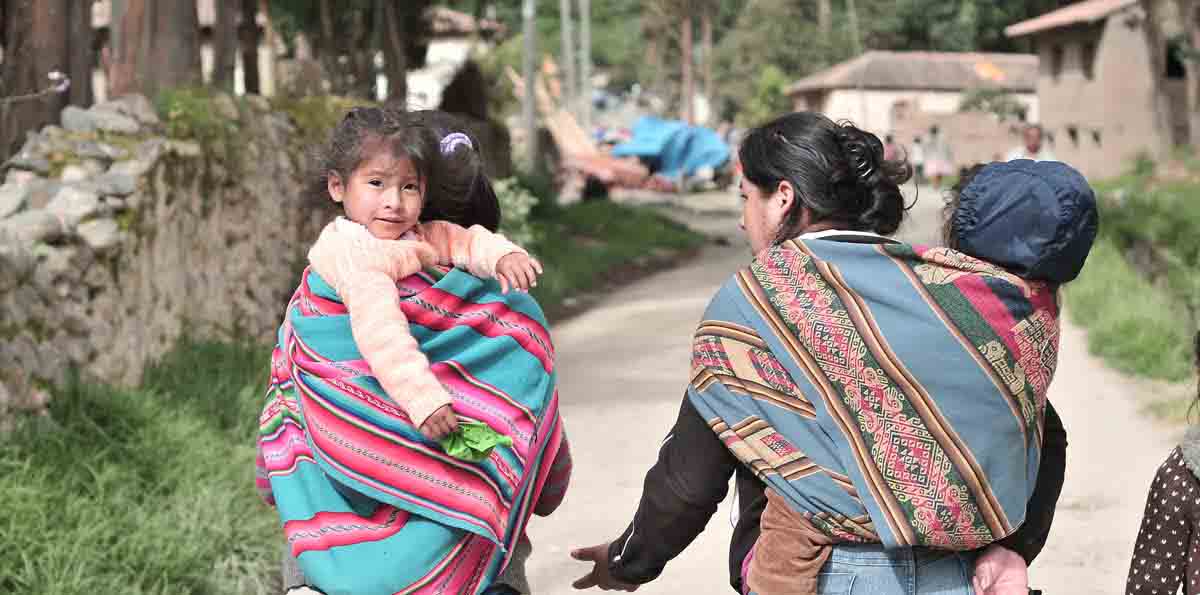
- Awayu is similar to lliclla but is larger and knotted and is also used to carry babies and goods.
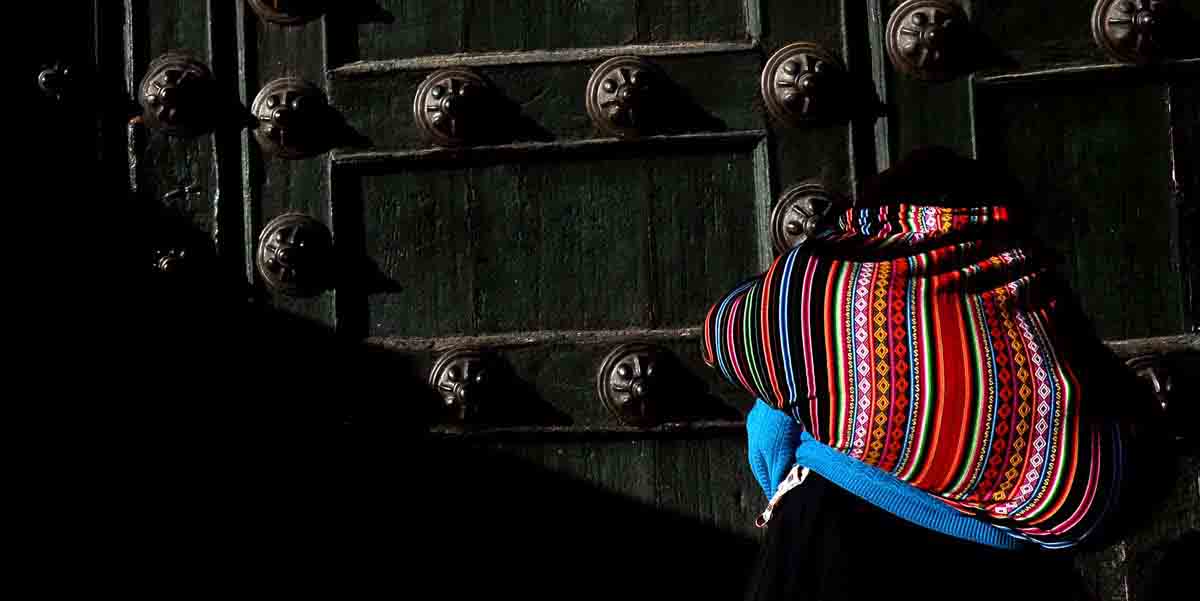
- Unkuna is also a cloth that carries but smaller and is used to carry food.
- Sweaters and jackets are worn under the shoulder cloth. Jerseys are usually synthetic and with a lot of color. The jackets are made of wool fabric and are called "juyuna" and often embellish the woman's body. The skirts of Peruvian women are called "polleras" and are cut into a band of colors called "puyto". They are woven by hand and made of wool cloth. They are usually made in layers and are worn, being made in layers can seem bloated, and of course they are colorful and bright.
- Both men and women wear ajotas (shoes made from recycled truck tires) that are made at home and are very cheap.
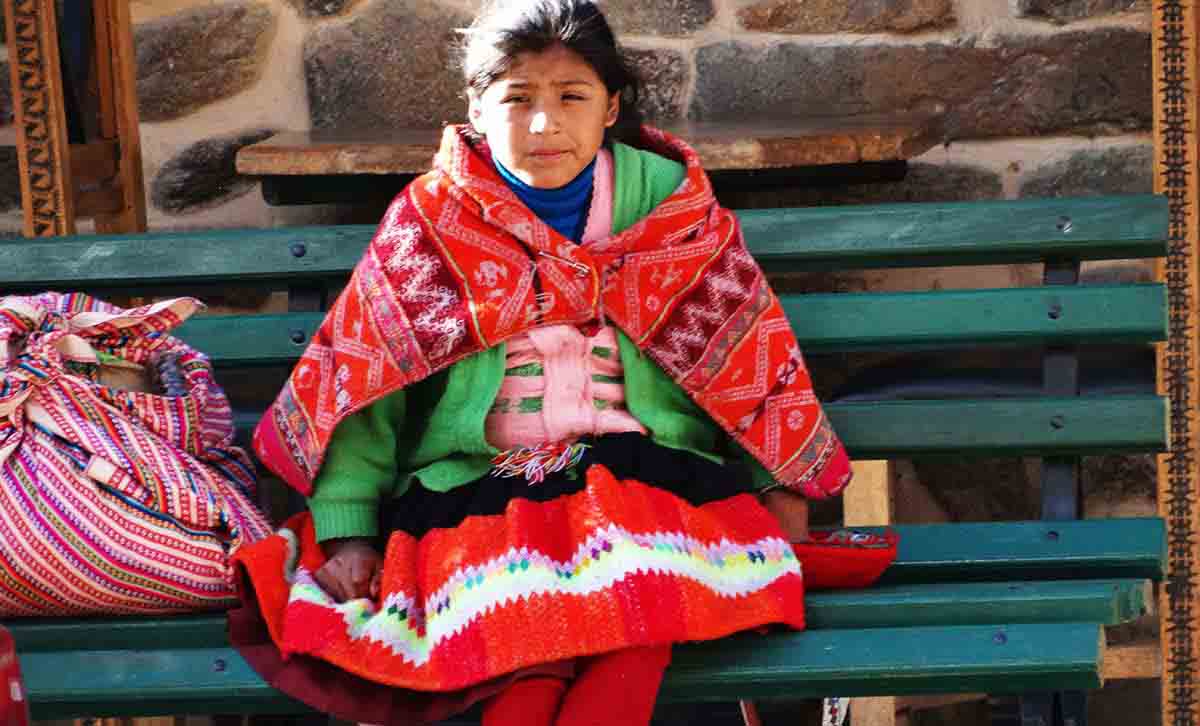
The Peruvians are great craftsmen
vians are excellent artisans, their clothes are homemade even now in our 21st century and can be appreciated as if they were traditional garments used centuries ago. In Peru, people wear ponchos, dresses, blankets, sweaters, layered skirts, tunics, hats, chullos and other native pieces of clothing. The traditional costume of Peru is very colorful and bright, it is beautiful and very original although the clothes are quite thick. Tourists wonder what do people wear in Peru , and then get admire the beauty of handmade clothing and always wear some memorabilia from the Peruvian markets, and that is no wonder!
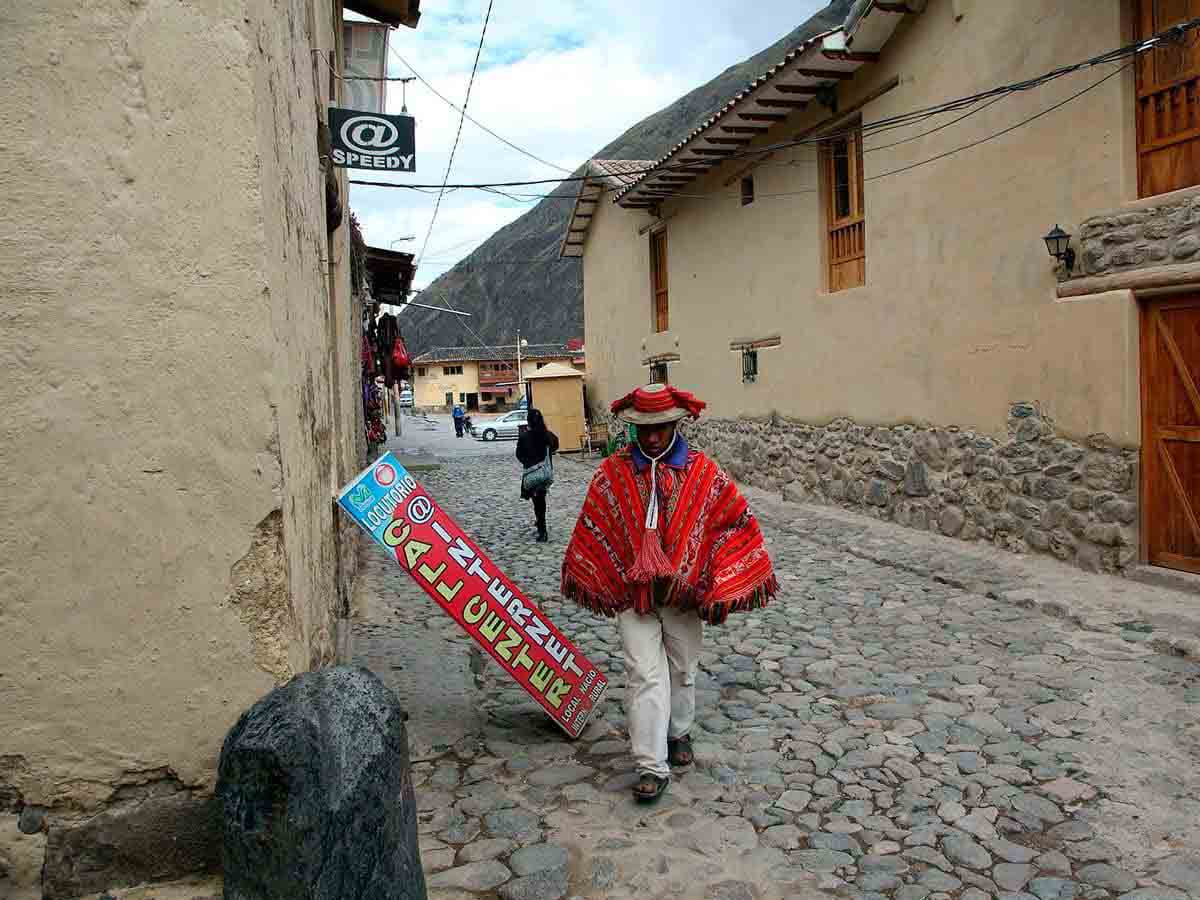
Visit Peru and Discover the clothing of Peruvian People
- Sacred Valley Tour
- Inca Trail Tours
- Choquequirao to Machu Picchu
- Essential Peru
- Inca Trail and Amazon tour
- Machu Picchu and Amazon Rainforest
- Peru Machu Picchu Tour
- Machu Picchu Tours


- Travel Postponement
- Terms and Conditions
- Privacy Policy
Peru Tour Packages
- Machu Picchu
- The Sacred Valley
- Amazon Rainforest
- Galapagos Islands
- Chile Tours
How to Dress Like a Local in Cusco?

How to Dress Like a Local in Cusco

James Bustamante is Native to New York but born to Peruvian parents. He has been traveling throughout Latin America since early 2003 and finally made his home in Peru. James has made his way by eating and traveling through almost every country in Central and South America.
Last Updated on November 27, 2023 by James Bustamante
For some travelers learning how to dress like a local in Cusco is usually taken quite seriously. When in Peru and planning to visit Machu Picchu , everyone should enjoy Peruvian culture.
This includes delicious Peruvian dishes, the local Peruvian culture, and even our traditional clothing.
Some will even try to emulate all local wear when hiking Machu Picchu ; we’ve all seen those pictures of travelers wearing traditional Peruvian clothing.
Peruvian society usually keeps up with the times, however, while strolling down the streets of Cusco one can’t help but notice a blend of the old and the new.
Let’s talk about typical Peruvian garments you can acquire to help give you an authentic taste of the culture and dress like a local in Cusco .
Table of Contents
Traditional Garments in Cusco

Unlike many other countries around the world, traditional clothing continues to be popular in Peru .
This is more apparent in places like Cusco and the surrounding Andean villages and towns.
If you visit the highlands, you are guaranteed to see locals wearing fashionable textiles that serve both as form and as function. Let’s look at a few of them.
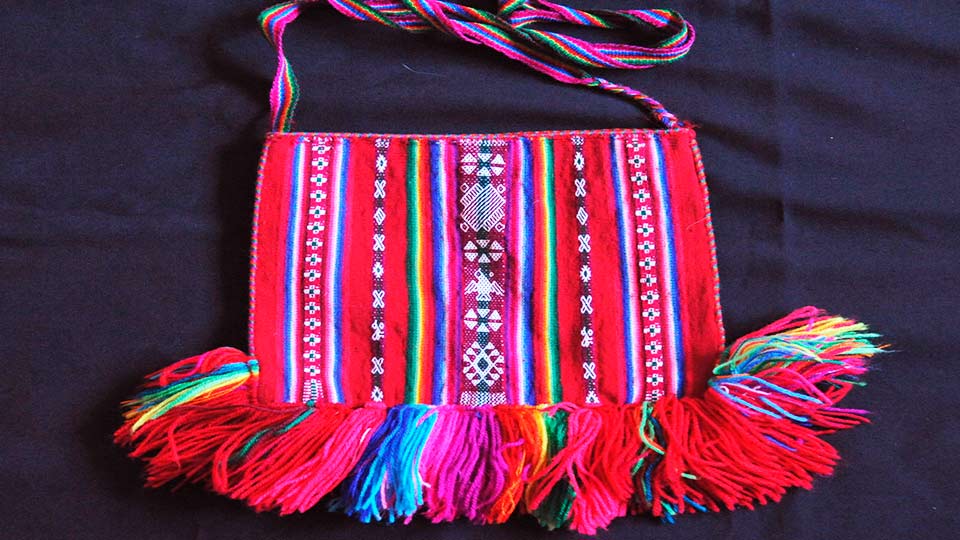
First on our likes on how to dress like a local in Cusco would be the “Chuspa”.
This Andean garment is very similar to a purse or a book bag. Nowadays, the Chuspa is used to carry a variety of everyday items.
A few hundred years ago, however, it was most likely used to carry coca leaves during the times of the Inca Empire.
Travelers Tips : Coca leaves in Peru have been used for hundreds of years to help locals cope with altitude sickness and give a boost of energy. Coca leaves are widely sold in Cusco for this very purpose. Give them a try if you are feeling the effects of the elevation.
The Lliclla

Many women from the highlands will wear a “Lliclla”. This local item is a kind of wide scarf or shawl used to stave the cold mountain temperatures.
The local women will often wear it almost like a cape in order to cover most of your back and shoulder region.
It can be a bit bothersome to people not used to wearing one due to its size, but it looks great and comes in various colors.
These highland garments will usually be very colorful, using pinks, reds, and several other bright colors.
The K’eperina
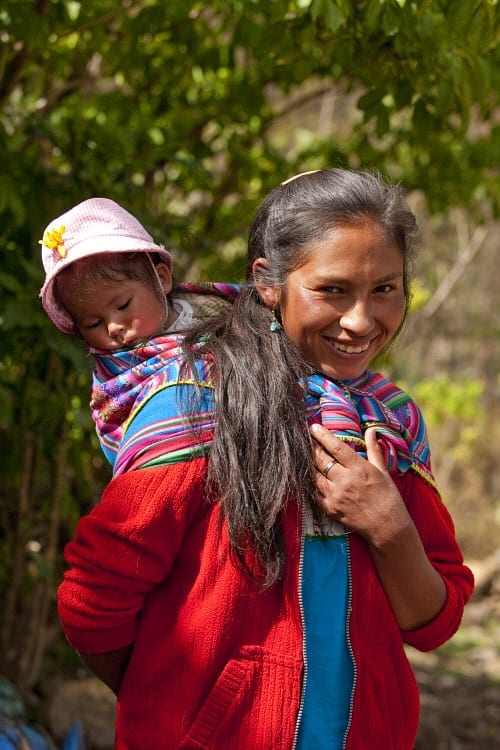
Next on the list of items to dress like a local in Cusco is the “K’eperina”.
This item is a bit like the Lliclla. The main difference is that it is used to carry things on your back like a baby.
Unlike the Lliclla, both men and women wear the K’eperina, as it does serve a useful purpose. Once more, women often wear a more colorful variation.
While spending time in Cusco, you will see plenty of local women carrying their babies in K’eperinas throughout the city.
They make it seem so easy; you’ll walk down the street and suddenly see a woman walking around with a large backpack, and it suddenly turns out to be a 3-year-old.
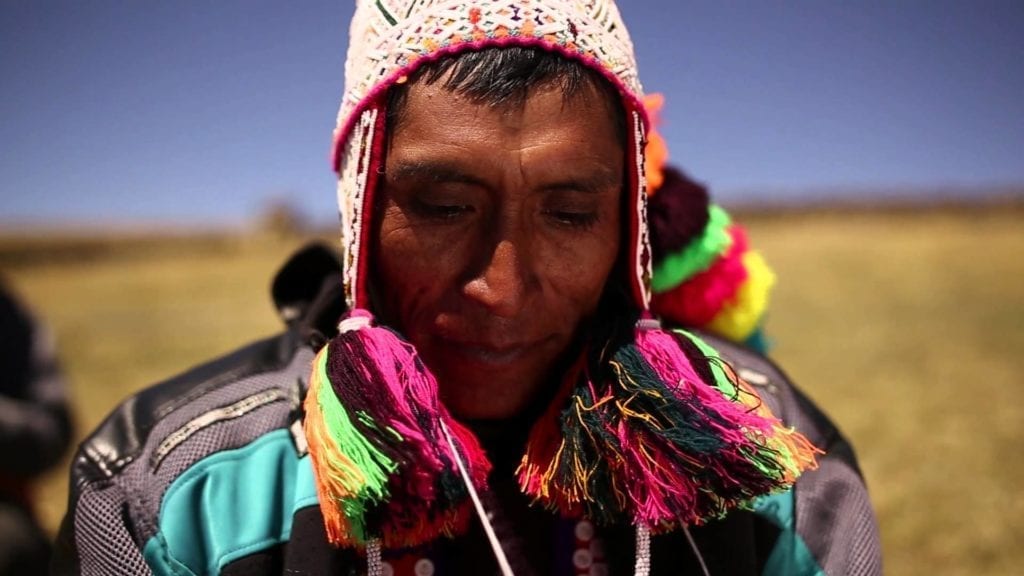
The most well-known item on this list is most likely the “Chullo”.
This Andean item can be described as a sort of knitted hat with broad earflaps. The earflaps are there to make sure to keep all of your warmth in.
Remember that parts of the Andes are very cold; if you add high elevation to the mix, your ears will definitely need some protection.
If you plan on taking one of the multi-day hikes, like the 4-day Inca trail to Machu Picchu or the Salkantay trek, you might want to bring a Chullo along with all we’re saying.
This item dates back to before colonial times. The Chullo was primarily used by highland men as they tended to be out in the cold longer due to farming activities as well as herding.
Nowadays, you can find people wearing them almost anywhere in Peru.
The best quality Chullos, however, are the ones found in Cusco and other parts of the Peruvian highlands.
They are often made of alpaca fur, one of the softest materials on earth.
If you have already picked up your Machu Picchu tickets (or if they are already included in your Peru tour package ) and are about to go up via the shuttle, you might want to stop in the Aguas Calientes town street market to see what kind f Chullos they have. In my personal experience, everything is more expensive in Aguas Calientes, so it might not be the best place to find traditional garments, but they might have a few designs you won’t be able to find in Cusco.
Many travelers want that very “local” photograph where they overlook Machu Picchu while wearing a Chullo.
Well, this market is your last chance of getting one before heading up to Machu Picchu!
Travelers’ Tips: The Alpaca is raised and shared locally. The fur is also processed at the local level.
If you are looking for Chullos, Alpaca sweaters, or scarves, make sure to look at the local shops in Cusco. You will be surprised by the high-quality products you can find just walking around the city.
In Conclusion
This is just a brief list of typical Andean clothing items that form part of Peruvian culture.
If you want to know anything more about Peru, Cusco, and Machu Picchu Travel , check out the rest of our blog posts at Peru Travel Blog, and be sure to follow us on Facebook and Instagram for our special packages.
Remember that it is unnecessary to dress like a local in Cusco, but with all the colorful styles and the utility of certain items, it might be fun to try. Additionally, a wool or Alpaca Chullo will be an item that will keep you warm for years to come, no matter where you travel.
Frequently Asked Questions About Traditional Cusco Garments
<br>can i purchase alpaca products in cusco.
Yes. Alpaca products such as hats, sweaters, jackets, gloves, and many other garments are widely available throughout Cusco.
How much do Alpaca products cost in Cusco?
Pricing for Alapca products can vary greatly depending on where you shop in Cusco. Finding local producers with their own store will net you a better product and save you money vs going to an Alpaca chain store.
Is it okay to wear traditional Andean clothing while in Cusco?
Yes. The locals definitely like travelers sporting their traditional clothing. It also helps the local economy significantly. Most locals will even take pictures with you while you are wearing a Chullo!
Are all Andean garments made of Alpaca?
No. Many are made with Alpaca or baby Alpaca. Some are made of local sheep’s wool, and some are made with Peruvian cotton, which is among the world’s best. There are also garments made with the rare Vicuna, which are extremely expensive. It is said to be the world’s softest wool. If you are lucky enough to find Vicuna products, they will most likely be very expensive but unique since mass production is challenging.
Do locals in Cusco still wear traditional garments?
Yes. Many “Cusquenos” still wear traditional clothing just as their ancestors, The Inca, did long ago.
Does the Cusco city tour include time at the vendor markets?
Yes. We can schedule a visit to the local markets so you can purchase traditional garments. There are some in Cusco and several in the Sacred Valley, Pisac, Ollantaytambo, and many others.

About the Author
Social share.
Travel Packages
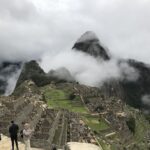
The Inca Journey - Lima to Cusco & Machu Picchu
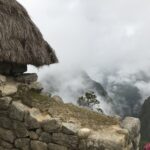
3 Day Machu Picchu Tour Package

10 Day Peru Highland Adventure
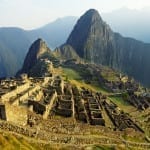
Coastal and Highland Journey
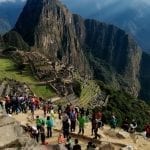
Machu Picchu Express Tour
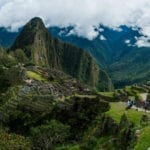
Machu Picchu 5 Day 4 Night Tour Package
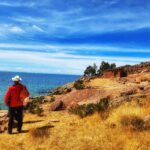
Lima to Amazon and Magical Highlands
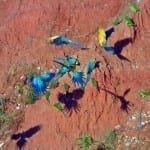
Highland and Amazon Journey
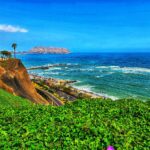
Lima To The Highlands Journey
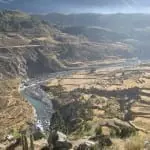
Historical Peru Journey

Discover Peru Tour Package
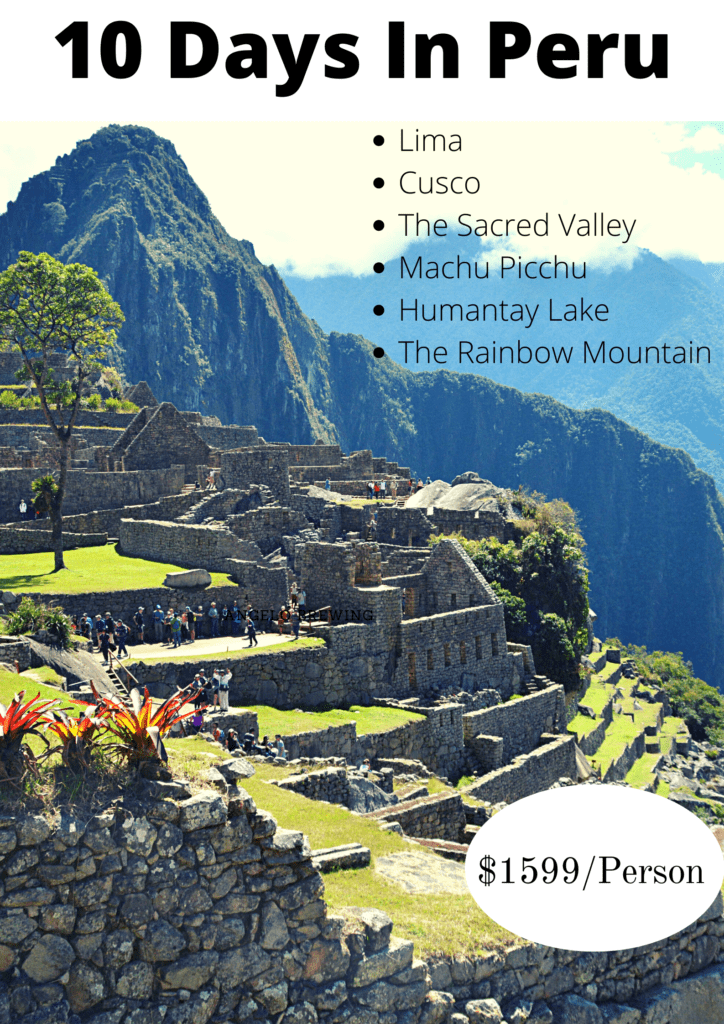
Top Peru Articles
US Number:1-424-781-3536
Email: [email protected], travel guides, peru tours & treks, treks to machu picchu, the classic inca trail, machu picchu guide, machu picchu tours, machu picchu hike, client testimonials.

Tripadvisor
+51 984509207
12 January, 2024
Clothing for Lima: Find the Perfect Attire for Your Visit to Lima

Welcome to the vibrant Lima, where culture, history, and gastronomy intertwine in a fascinating mosaic. Planning a visit to this lively city? Great! But before you pack, let me guide you to find the perfect clothing for Lima that will make you look stylish and feel comfortable during your stay in the Peruvian capital.
INDICE DEL ARTICULO
Packing Tips: Essential Clothing for Your Trip to Lima
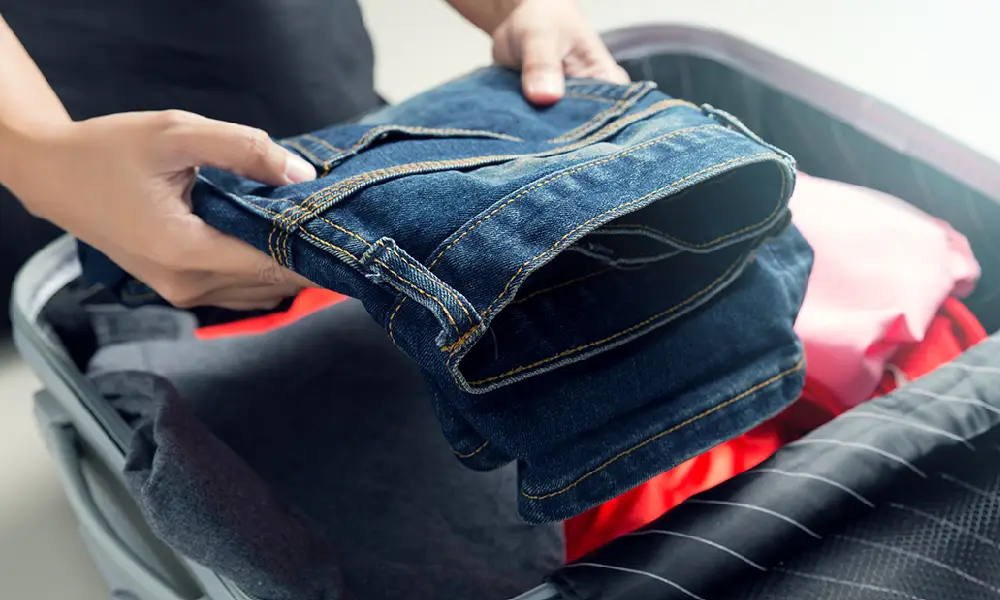
If you’re excited about your upcoming trip to Lima and wondering what garments are essential, you’re in the right place. Smart packing is key to fully enjoy your experience in the Peruvian capital, and here we provide valuable tips on the essential clothing you should bring.
What should you consider when packing for Lima?
- Light Layers: Lima enjoys a mild climate, but temperatures can vary throughout the day. Opt for lightweight garments and layer up to adapt to different conditions. A light jacket or sweater comes in handy for cooler evenings.
- Cool and Comfortable Clothing: The city can be warm during the day, so make sure to pack cool and comfortable clothing. T-shirts, short-sleeved blouses, and lightweight pants are ideal for exploring the city without feeling overwhelmed by the heat.
- Appropriate Footwear: Lima is a city that invites walking, so a pair of comfortable shoes is essential. Choose breathable and sturdy footwear to navigate the cobbled streets and discover the charms of the city.
- Sun Protection: The Lima sun can be strong, so don’t forget to pack sunscreen and a hat for protection. These accessories will not only keep you safe but are also key elements for fully enjoying your Peru travel .
What should NOT be missing in your suitcase for Lima?
- Swimsuit: While Lima is not known for its beaches, some hotels have pools, and the proximity to the Pacific Ocean makes bringing a swimsuit a good idea to seize any refreshing opportunity.
- Elegant Attire: Although the atmosphere in Lima is casual, you may want to bring something more elegant to enjoy the thriving gastronomic and nightlife scenes. A semi-formal outfit will be perfect for evening outings.
- Light Accessories: Don’t forget to add some light accessories, such as a scarf or subtle jewelry, to add a personal touch to your outfits without overloading your luggage.
Conquer the Climate: Light and Fresh Clothing for Lima
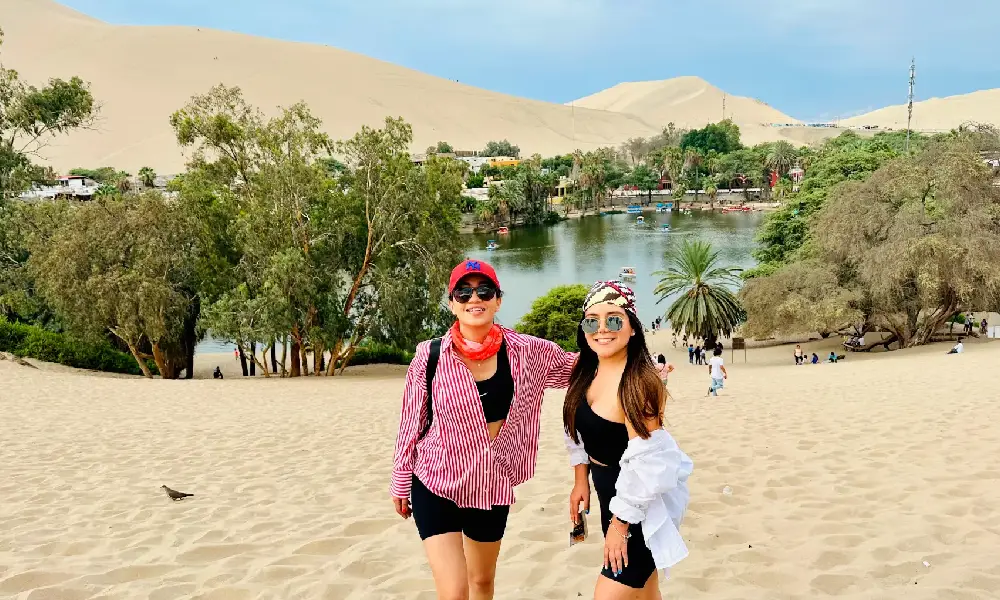
If you’re planning a visit to Lima, the Peruvian capital, and wondering what type of clothing to bring, you’re in the right place. The Lima climate is known to be mild and pleasant for most of the year, but like any destination, dressing appropriately is crucial to fully enjoy your experience.
What is the climate like in Lima?
Lima enjoys a subtropical desert climate, characterized by mild temperatures and moderate humidity. The city is in a unique location, close to the Pacific Ocean, contributing to maintaining pleasant temperatures throughout the year. The average temperature ranges from 15°C to 25°C, making it a comfortable city to visit in any season.
What clothing to bring?
To conquer the Lima climate, opt for light and fresh clothing. During the day, comfortable t-shirts, short-sleeved blouses, and shorts will be your best choice. Don’t forget to bring a hat and sunscreen, as the Lima sun can be strong.
In the evenings, temperatures may slightly drop, so it’s advisable to have a light jacket or sweater on hand. Additionally, having a pair of comfortable shoes is essential, as Lima is a city that invites exploration on foot.
What NOT to bring?
Avoid overly warm clothing, as you’ll rarely need heavy layers in Lima. Rain is scarce, so a raincoat or umbrella is not essential. Also, it’s recommended to leave bulky or heavy fabrics at home, as Lima’s climate usually doesn’t require excessive layering.
Moreover, it’s preferable not to bring uncomfortable or heavy footwear, as walking is an excellent way to discover the charms of the city. Opt for lightweight and breathable shoes to ensure comfort during your explorations.
Explore Trends: Latest Fashion in Clothing for Lima
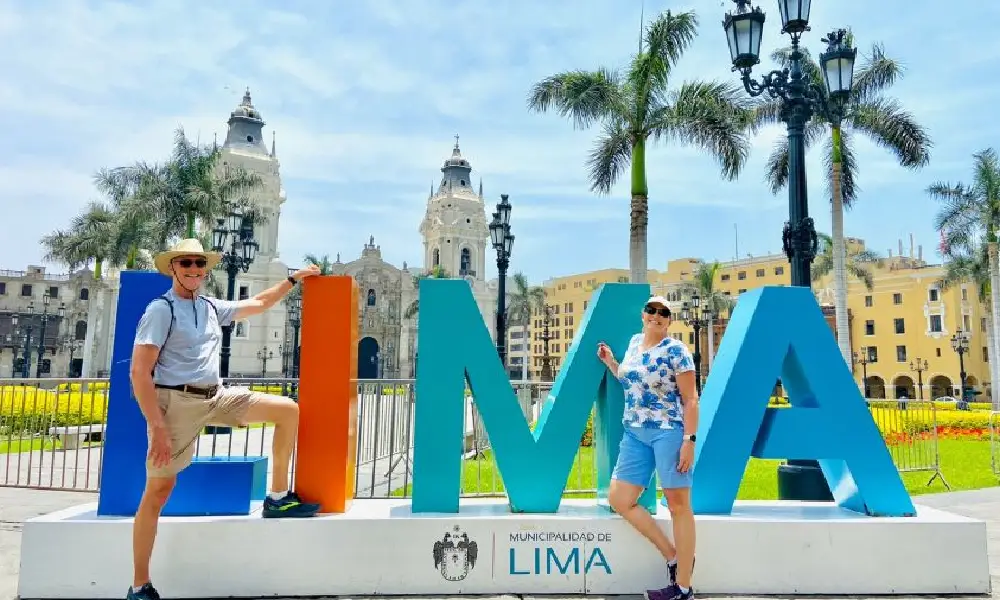
If you’re planning your visit to Lima and want to stay at the forefront of local fashion, you’ve come to the right place. Lima is not only known for its rich history and stunning landscapes but also for being a hub of unique and exciting fashion trends.
What are the fashion trends in Lima?
Lima’s fashion is a fusion of tradition and modernity. To stay updated with the latest trends, consider the following:
- Vibrant Colors: Lima is a city full of energy, and this is reflected in fashion. Bright and bold colors are in vogue, from tropical hues to colors inspired by the rich Peruvian culture.
- Native Prints: Local designers often incorporate motifs inspired by Peruvian craftsmanship into their creations. Look for garments with native prints, such as iconic geometric and floral patterns.
- Artisanal Fabrics: Peruvian craftsmanship is famous worldwide, and fashion is no exception. Garments made with traditional fabrics like alpaca and pima cotton are popular, representing quality and cultural heritage.
- Sustainable Fashion: Lima is increasingly embracing sustainable fashion. Look for local brands committed to eco-friendly practices and recycled fabrics, reflecting the city’s environmental awareness.
Where to find these trends? To immerse yourself in Lima’s fashion trends, head to fashion districts like Miraflores and Barranco. These areas host exclusive boutiques and local designer stores where you can discover unique pieces that capture the spirit of the city.
Smart Shopping: Clothing Stores Guide in Lima

If you’re planning a visit to the Peruvian capital and wondering where to find the best fashion, you’ve come to the right place. Here, we’ll provide you with details to make your search for clothing in Lima a success.
Miraflores: Elegance and Style
In the district of Miraflores, elegance and style converge to offer you a unique shopping experience. Along Larco Avenue, you’ll find renowned boutiques and stores of recognized brands. From local fashion to international options, each store in this area offers a carefully curated selection of garments to satisfy even the most discerning tastes. Explore the streets with confidence, knowing that you are immersed in the modern and cosmopolitan essence of Lima.
Gamarra: The Textile Heart of Lima
If you’re looking to immerse yourself in the authentic textile scene of Lima, Gamarra is where the magic happens. This district is known as the textile heart of the city, hosting an astonishing variety of stores ranging from emerging designers to establishments offering affordable options for every budget. Explore its bustling streets and discover the diversity of styles that make Gamarra a must-visit for those seeking an authentic shopping experience.
Barranco: Art and Fashion Unite
Barranco, known for its artistic scene, invites you to merge art and fashion in a single stroll. Explore the cobbled streets of this picturesque district and discover independent boutiques showcasing unique pieces created by talented local designers. Bohemian and avant-garde fashion blends with Barranco’s bohemian atmosphere, offering you a shopping experience that goes beyond the conventional.
Jockey Plaza – A Comprehensive Shopping Center
If you’re looking for an all-in-one shopping experience, you can’t overlook Jockey Plaza. This impressive shopping center in Lima brings together an unparalleled variety of fashion stores, from well-known international brands to exclusive local boutiques. With a wide range of clothing for all tastes and ages, Jockey Plaza stands out as a complete destination to meet your fashion needs.
Clothing for Lima in All Seasons
If you’re planning your visit to Lima, it’s crucial to carefully select your wardrobe to adapt to the climatic variations of each season.
In Lima, humidity is a significant feature, so choose lightweight and breathable fabrics to stay cool and comfortable in all seasons.
Spring (September – November)
During spring, Lima experiences pleasant temperatures ranging from 18°C to 25°C. Opt for short-sleeved shirts, shorts, or comfortable skirts. Include a light jacket for cool evenings and a pair of comfortable sneakers to explore the city on foot.
Summer (December – March)
Lima’s summer is radiant and hot, with temperatures reaching up to 30°C. Make sure to wear cool clothes like light dresses, short-sleeved shirts, shorts, and sandals. Don’t forget a hat and sunscreen to protect yourself from the sun.
Fall (April – June)
During fall, temperatures drop slightly. Add light sweaters, comfortable jackets, and jeans to your suitcase. It’s also good to have a pair of closed shoes for occasions when the autumn breeze is cooler. Temperatures usually range between 15°C and 22°C.
Winter (July – August)
Although winter in Lima is mild, it’s best to be prepared. Include in your luggage a warm jacket, sweaters, long pants, and maybe a pair of comfortable boots. Temperatures can drop to around 12°C. A compact umbrella might be useful due to light rains.
Discover Local Style: Traditional Clothing in Lima

Welcome to Lima, where fashion and history intertwine to offer you a unique experience! If you’re eager to immerse yourself in local authenticity and get to know the essence of Lima through its traditional attire, you’re in the right place.
Peru travel packages can enhance your experience by providing curated tours that showcase the cultural richness of Lima.
The Colorful “Pollera” Limeña: Exploring Elegance in Vivid Colors
At the heart of traditional Lima clothing is the emblematic “pollera.” This pleated and colorful skirt is more than a piece of clothing; it’s a vibrant reflection of the rich Peruvian culture. Crafted with high-quality fabrics, each fold tells a story and conveys a sense of identity and belonging rooted in Lima tradition.
The Elegant Touch of the Shawl: Craftsmanship in Every Thread
Accompanying the “pollera,” the Lima shawl adds a touch of elegance. These shawls, handwoven with intricate patterns, are authentic works of art passed down from generation to generation. Discovering the history behind each thread is delving into Lima’s textile legacy, where craftsmanship merges with cultural expression.
Hand-Embroidered Shirts: Textile Art in Every Stitch
Traditional Lima shirts are living testimonies to artisanal skill. Hand-embroidered with motifs capturing the richness of local flora and fauna, these garments are much more than simple clothes; they are authentic expressions of the nature surrounding the city. Every stitch tells a story intertwined with the Lima environment.
Straw Hats: Protection with Style and Tradition
To complete the ensemble, straw hats are essential. Beyond providing protection against the sun, these accessories stand out for their unique designs reflecting Lima’s cultural diversity. Each hat is a piece of craftsmanship highlighting the creativity and ingenuity of local artisans.
CONTACT US: We are a Travel Agency specialized in tourist packages , if you need any information, do not hesitate to write to us. We offer tours in Peru and Bolivia.
Read more Blogs ->
PERÚ TRAVEL PACKAGES

exploring the treasures of the andes, coast and jungle of peru
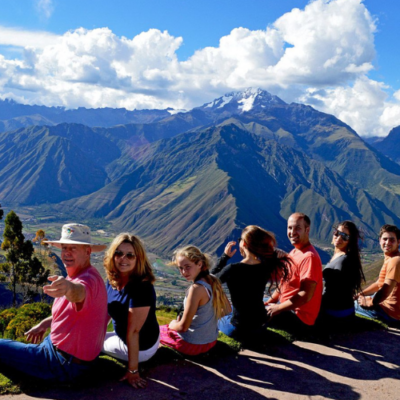
expedition through peruvian wonders

discovering the enigmatic south peruvian
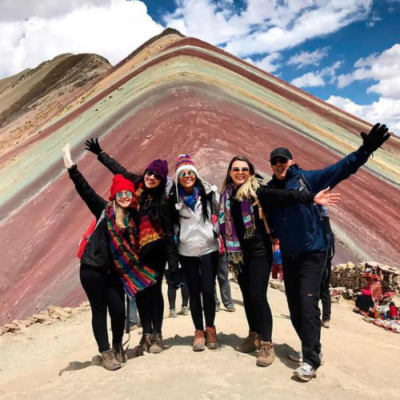
grand peruvian expedition for hidden treasures

know the route of the andean civilization
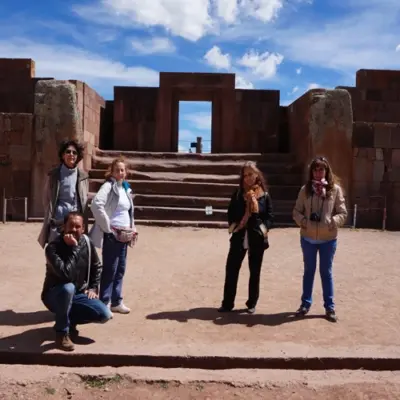
exploring the cultural and natural diversity of peru
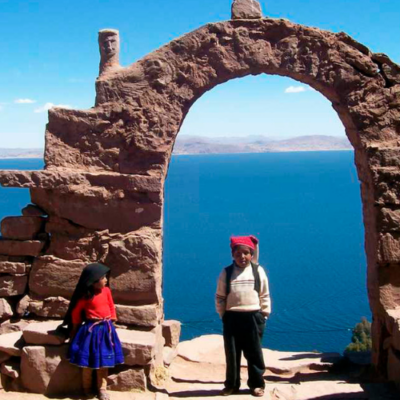
knowing culture and enjoying peruvian gastronomy

peruvian radiance sun, sand, and ancient wonders
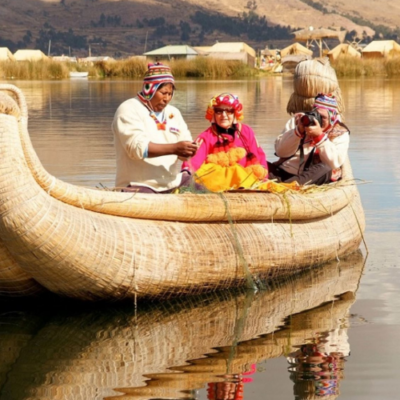
discovering peruvian wonders machupicchu, puno and lima

peruvian wonders lima, cusco and machu picchu
Copyright© 2023 Leading Peru Travel
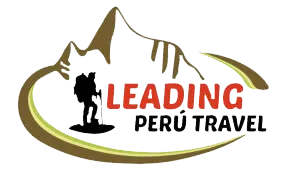
- +51 984 004 472
- Machu Picchu, Cusco, Perú
- Mon-Sat: 10 AM – 5 PM
Traditional Peruvian Clothing
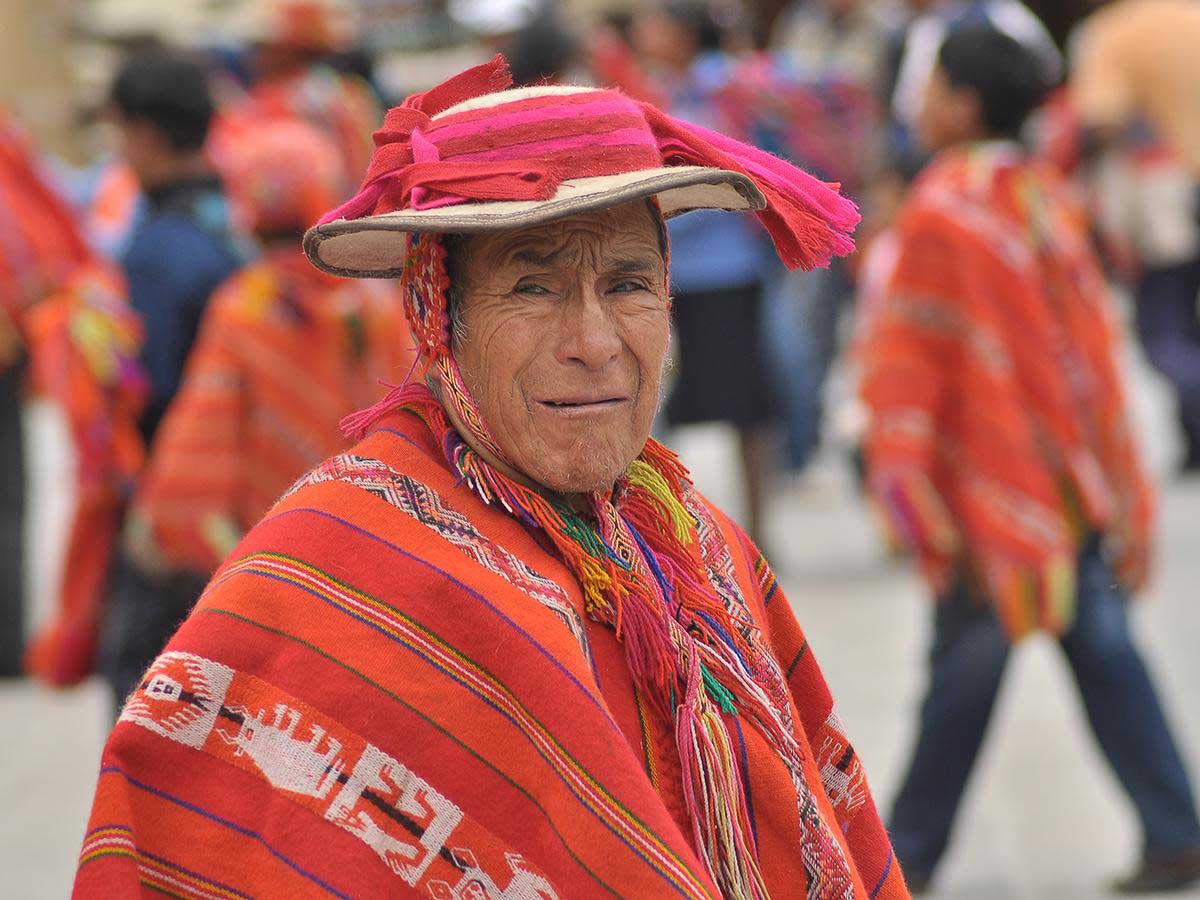
Inca Clothing
Inca clothing was differentiated, between social classes. It was a symbol of wealth and status. The royal class and noble would wear the finest woolen and brightly colored clothes with dye made from plants. Commonness’s clothes were simple. The male wore a band of cloth around their waist and his and the women wore long cotton dresses. Grave finds and paints especially on pottery vessels provide enormous information on Inca costumes.
General Trends
The Incas naturally wore different clothing depending on the altitude they lived. In the earlier periods, pre-Inca people from the coastal regions used cotton and in the Andean regions, the different ethnic groups used wool. But at a very early time, the trade made both materials available everywhere. By the time Incas settled in the Andes both cotton and wool were available to them. Clothing was of woven or knitted textiles and these were always worn whole, never cut or tailored; they were held together by large metal pins. Clothes varied based on their position in the social structure. The men wore simple tunics reaching just above the waistband. On their feet, they would wear grass shoes, woolen shoes, or leather sandals. The women dressed in ankle-length skirts and usually with a braided waistband. They wore a cap on their head and their hair they pinned a folded piece of cloth.
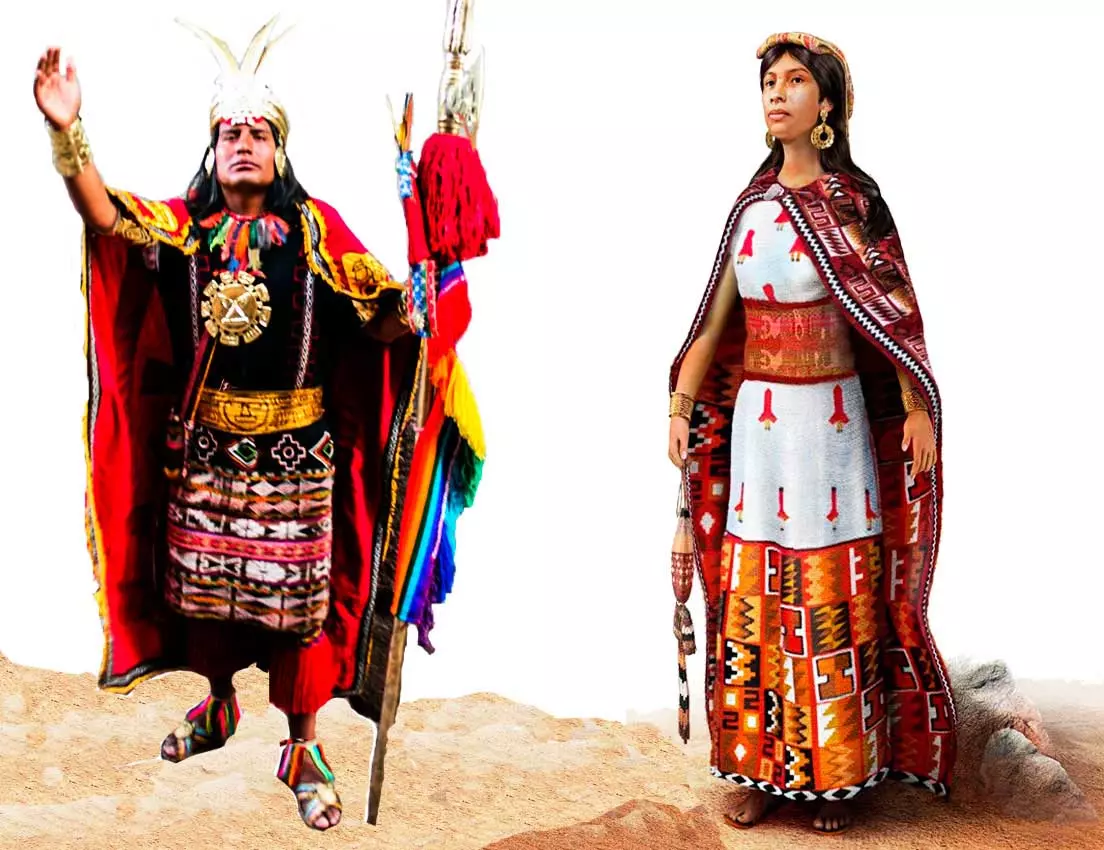
Inca Emperor
The Inca emperor or Sapa Inca wore stylishly and adorned clothing. the "Acllas" or the chosen women were in charge of making the ruler’s clothes. Only the Inca could wear a headdress with his special fringe of gold and feathers and were of different kinds. Round his head was wreathed a turban of many colored folds, called the "llautu", with a tasseled fringe of a scarlet color, while two feathers were placed upright in it, distinguishing of royalty. His coat was covered with jewels and pieces of turquoise. The Sapa Inca wore gold and jewelry on different parts of his body. He wore heavy gold shoulder pads and heavy gold bracelets and earrings. His shoes were made of leather and fur. He wore a royal shield and a royal badge. The shield on his chest was engraved with a picture of the sun god and the badge was made of hummingbird feathers, framed with gold.
Inca Nobility
The nobility was made up of relatives, by blood or marriage of the Sapa Inca and his wives and sons. The Nobles wore rich and colorful clothing but not as much as the emperor. Their dress was of the finest wool, dyed, and ornamented with gold and other precious stones. Nobles also wore the llautu, with a tasseled fringe. They could also wear feathers of the Corequenque or mountain caracara bird and sometimes clothing made of its feathers. Those birds were reserved for the exclusive purpose of supplying the royal headgear.
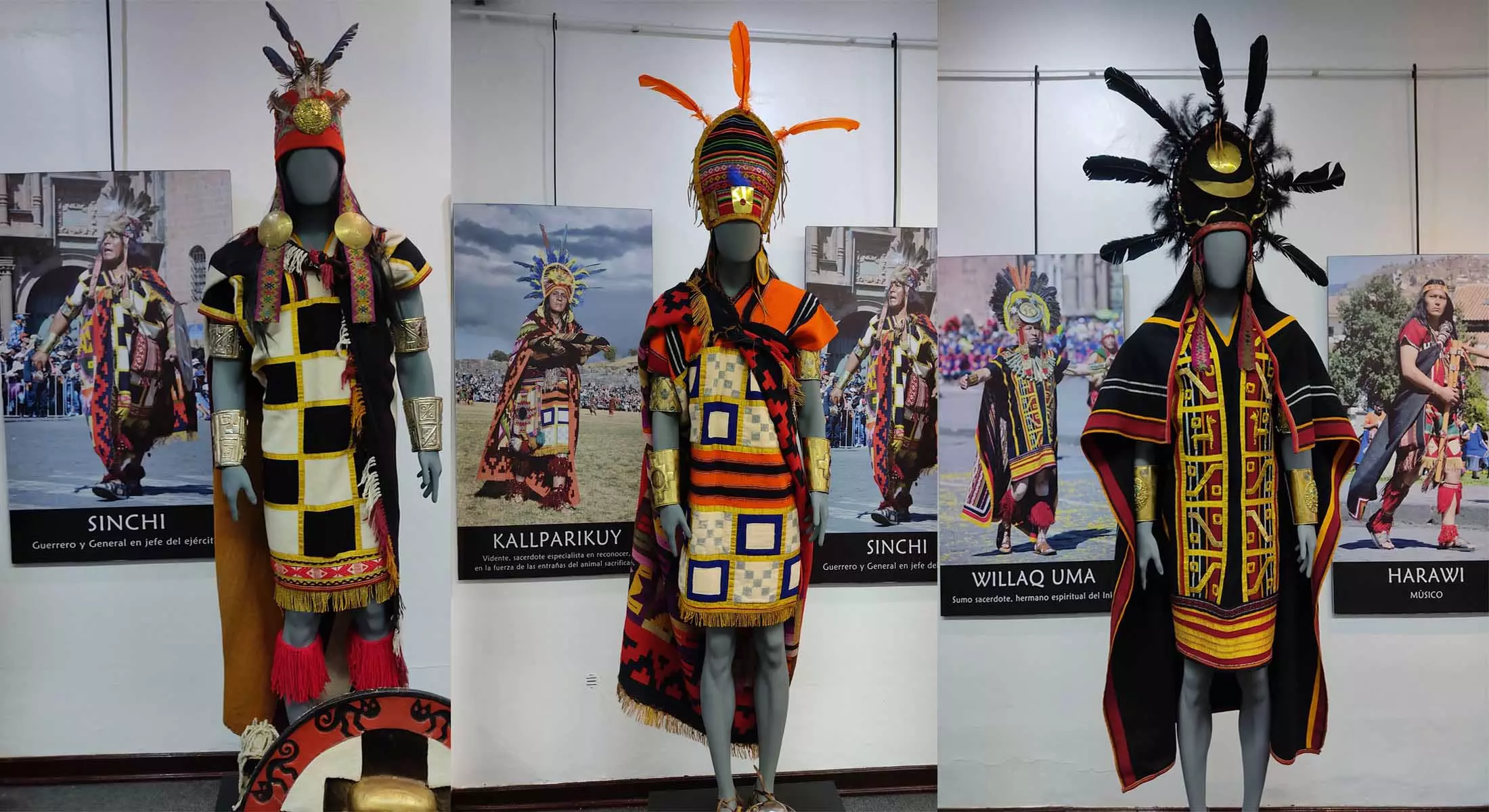
The common male attire consisted of a simple tunic (unqo) which was made from a single sheet doubled and sewn together at the sides with openings left for the arms and neck. In colder weather a poncho was worn over the shoulders with two corners tied in front; sometimes this passed under one arm to leave the latter free for activity.
Loincloth, tunic, and poncho were all of the cloth woven with colored ornamentation, the latter of course varying in quality according to the man's social position. Inca sandals were of untanned
llama hide, but sandals of other materials such as braided fiber are known archaeologically from some regions. Every man used a small bag in which he carry his possessions and coca leaves.
Women wore a tunic, reaching to the ankles and tied at the waist by a long, wide woven sash. At the top, it reached to the neck, the upper edges fastened together over the shoulders by long pins and passing under the arms at the sides. On top of the tunic, they wore a mantle over the shoulders and fasten at the front with a large square metal pin known as tupo made of gold or silver. They wore a large piece of folded cloth on the head or headbands but they did not cut their hair but parted it in the middle and wore it hanging down the back; it was cut, however, as a sign of mourning. Their footwear were sandals made of leather, wool, or fiber plants.
Body Adornment
Inca rulers, priests, and warriors used to paint their faces, arms, and legs to indicate their status. The Inca emperor wore woven hats trimmed with gold and wool tassels or topped with plumes, or showy feathers. Men wore feather decorations like headbands made into crowns of feathers, collars around the neck, and chest coverings. In addition, wealthy Inca men wore large gold and silver pendants hung on their chests, disks attached to their hair and shoes, and bands around their arms and wrists. Inca women simply wore a metal fastening for their cloak called a tupu.
Each country develops a unique culture and tradition for music, dance, and activities such as farming, fishing, etc, and without a doubt is ALSO characterized by unique clothing. Traditional Peruvian clothing is not a fashion thing, it is part of our culture. A clear example of traditional Peruvian clothing is the classic Peruvian hat called chullo or the poncho , an outer garment worn to keep the body warm, which has become representative symbol of our country and customs.
The tipical closthing of Peru for the women are the following:
- Ojotas
The cultural clothing of Peru for men are the follwing:
Traditional Peruvian Clothing for women
In the Peruvian Andes, each village has a unique style of clothing that identifies their region. Andean women wear different types of garments such as blankets, tunics, colored hats, capes, shawls, embroidered skirts, and leather sandals. The garments are usually very colorful, bright, and with very original patterns.
LLiclla is a Quechua word for a type of cape worn by Andean women. It is a woven cloth that covers the back and shoulders and it is fastened at the front using a pin called tupu. It covers the back and shoulders of the women. Llicllas or mantas can also be used for carrying children on the woman's back. Both women and men use these in the same way for carrying a heavy staff.
Chumpi is a garment used to fasten clothing around the waist. This word comes from the Quechua language meaning belt. Women wear chumps to fasten their skirts or to secure swaddled babies and men to fasten their trousers or as a means of supporting themselves with heavy loads.
The chal is a traditional Peruvian garment for women in the Andean region. It is a wool jacket, decorated with colorful buttons and worn under the lliclla.
Montera is a typical Peruvian Andean somewhat hard cloth hat, lined with fabric. It can be round or rectangular. It is easily identified the village or the region where the person comes from by looking at the colors or designed of the hat. These hats are combined with a woven strap called Sanq’apa that is usually adorned with white beads. The strap holds the hat under the chin and keeps it steady.
Polleras are andean typical skirts worn by country women. They are traditionally made of sheep or alpaca wool and are of thick, wide, loose and gathered fabric. The skirts are usually adorned with a colorful band called Puyto. As with other Andean clothing, they often indicate a woman’s origing as well as her social status.
Usuta or Ushuta is the most common footwear worn in the Andean region since pre-inca times. The ushutas has a leather sole or vegetable fiber whith three straps attached to the sole, two for the heel and one that passes between the big toe and index toe or were entirely wool-knitted like a mocassin.
Traditional Peruvian Closthing fo Men
Andean men’s clothing has undergone cultural changes than women’s clothing. But older men are still faithful to their traditions and culture, for which they are often seen wearing ponchos, chullos, and knitted pants among other traditional Peruvian clothing. And young men only wear traditional during local festivals.
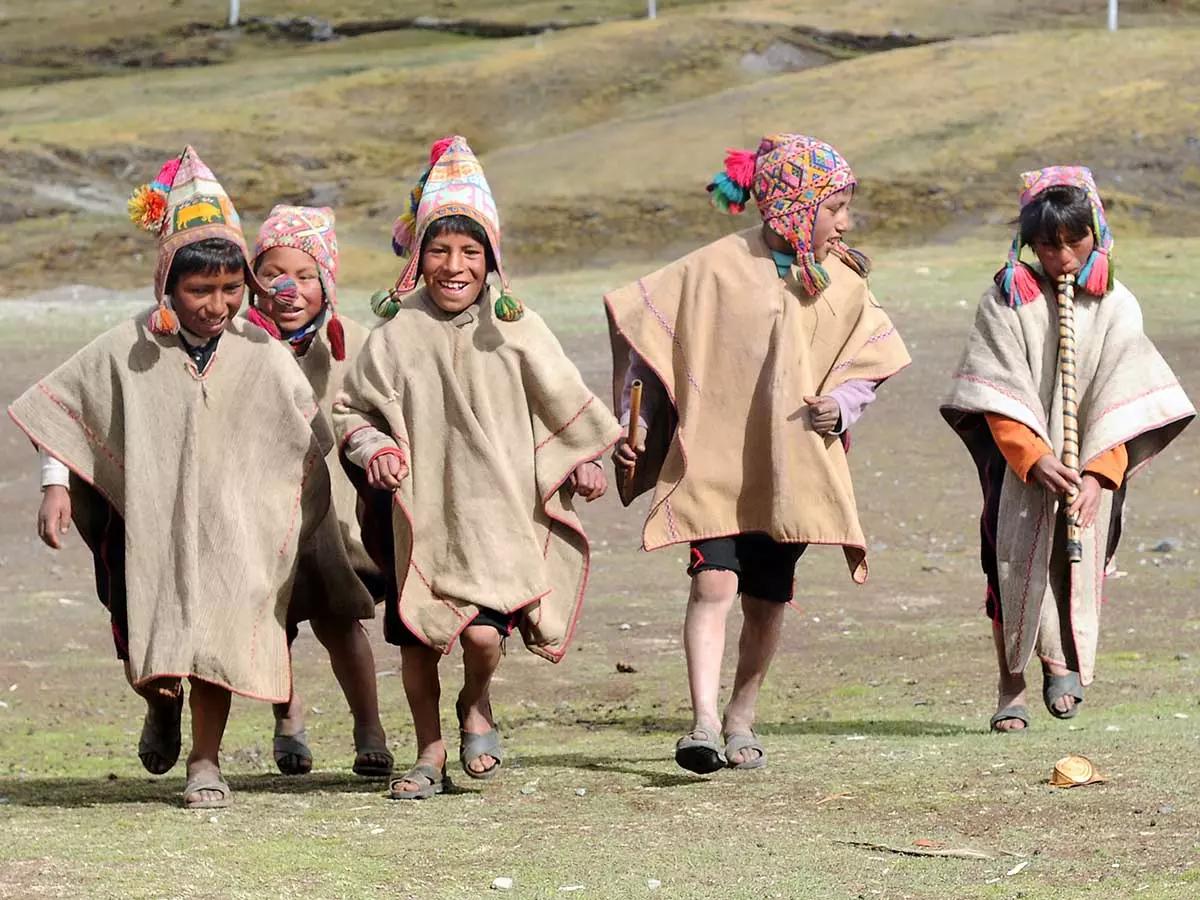
If you are planning a trip to Peru, you will most likely see most of the locals wearing a Poncho. It is a folded piece of fabric (or two pieces of fabric joined together) designed to be worn over the head or wrapped around the body. It’s one of the oldest forms of alpaca clothing that exists. The designs, colors, and patterns vary from village to village so they are instantly recognizable to the others in the region.
The chullo is the iconic Andean hat with earflaps to keep warm in the cold. It is made by hand from wool of sheep, Llama, Alpaca. The thickly -knit hat insulates from the harsh weather. They fulfill a purpose, which is to identify the characters of the andean population. Depending on the place where they are made, colours, figures, motives and shapes are in harmony with the traditions and local uses.
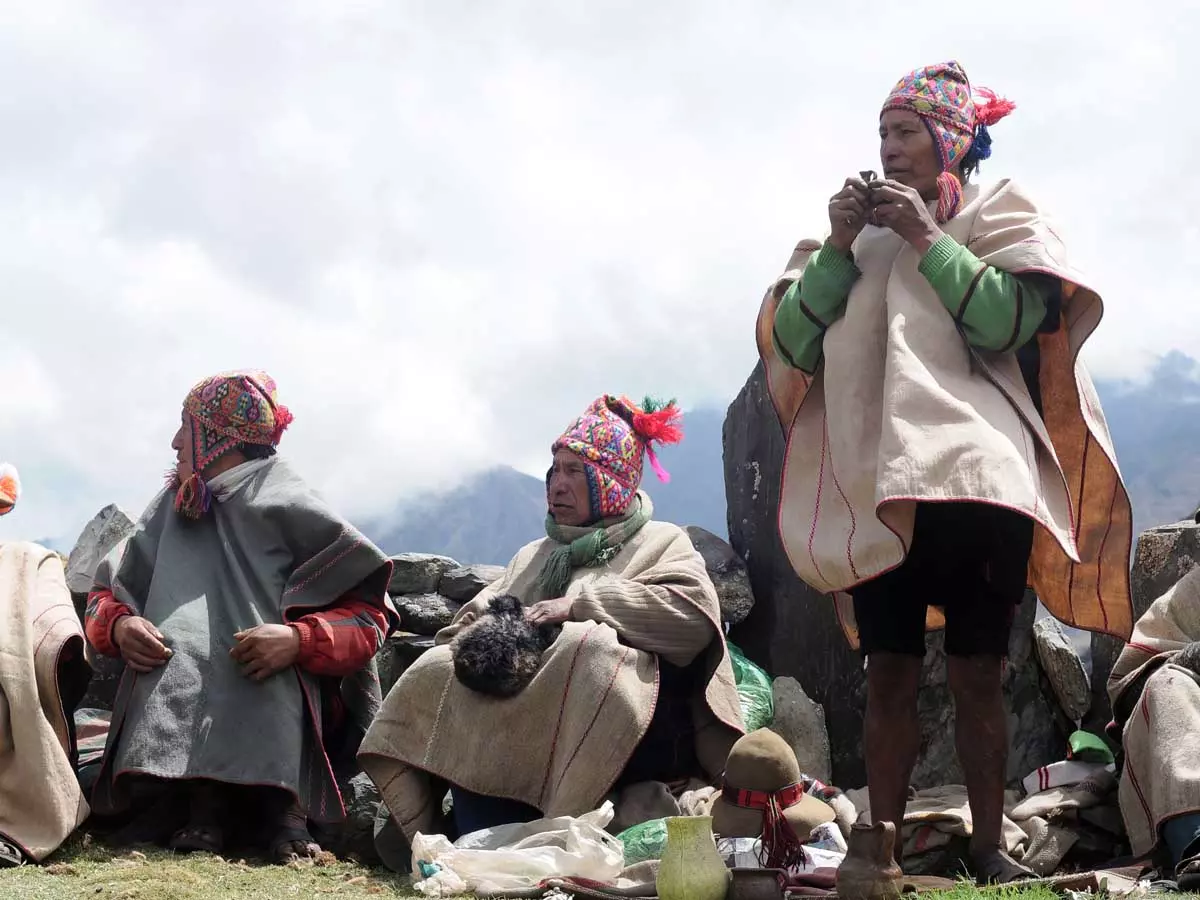
The Most Traditional Destinations to See the Peruvian Clothing
Many are the routes that take you to see the Peruvian clothing, but none is like the Inca Trail Tours , the most famous pedestrian path in the Americas. After flying from the capital of Peru , Lima, you will arrive in Cusco to walk for four days along a path through forests and dense fog, millenary stone steps and discovering the ruins of ancient fortifications and Inca cities, and all the time enjoying majestic views. Also, you can do the hike to Ollantaytambo, Rainbow Mountain , Ausangate or Lares Trek , in these destinations, you will appreciate the three typies of the traditiona Andean clothing based on sheep, llama and alpaca wool.
Machu Picchu tours from Lima is the best option trip for you, in these travels will permit to have enough time to explore the cities to discover the Peru clothes .
- 4 Day Inca Trail - Cusco
- Salkantay Trek - Cusco
- Machu Picchu - Cusco
- Inca Quarry Trail - Cusco
- 2 Day Inca Trail - Cusco
- Tambopata - Madre de Dios
- Titicaca Lake - Puno
- Cordillera Blanca - Huaraz
- Colca Canyon - Arequipa
- Manu Explore - Cusco
- Kuelap Hike - Amazonas
- Amazon Rainforest - Iquitos
The Best Adventure Holidays in Peru
Once the pandemic is over, we recommend visiting Peru, as it offers the best Adventure Tours for your holidays.
- Inti Raymi Peru
- Inca Trail and Amazon Rainforest (11 Days/10 Nights)
- Amazon to Salkantay Trek (11 Days/ 10 Nights)
- Inca Trail Expedition (11 Days/10 Nights)
- Inca Path Peru (9 Days/ 8 Nights)
- Machu Picchu and Amazon Tours (11 Days/10 Nights)
- Chachapoyas Tour (10 Days/ 9 Nights)
- 2 Day Inca Trail with Camping
- Short Inca Trail
- 2 Day Machu Picchu Tour from Lima
- 3 Day Inca Trail
- 3 Day Rainbow Mountain to Inca Trail
- 3 Day Sacred Valley to Inca Trail
The property, complete with a 30-seat screening room, a 100-seat amphitheater and a swimming pond with sandy beach and outdoor shower, was asking about $40 million. Lorem ipsum dolor sit amet, consectetur adipis Vi ales elit vitae lo bortis faucibus. Lorem ipsum dolor sit amet, conse dolor sit amet, consectetu ctetur adipis Viales. Lorem ipsum dolor sit amet, cons sit amet, consectetur adi ectetur adipis Vi.

It is a long established fact that a reader will be distracted by the readable content of a page when looking at its layout. The point of using Lorem Ipsum is that it has a more-or-less normal distribution of letters, as opposed to using 'Content here, content here', making it look like readable English. Many desktop publishing packages and web page editors now use Lorem Ipsum as their default model text, and a search for 'lorem ipsum' will uncover many web sites still in their infancy.
“To take a trivial example, which ever undertakes laborious physical work exercise, except obtain some advantage blinded”

as opposed to using 'Content here, content here', making it look like readable English. Many desktop publishing packages and web page editors now use Lorem Ipsum as their default model text, and a search for 'lorem ipsum' will uncover many web sites still in their infancy.
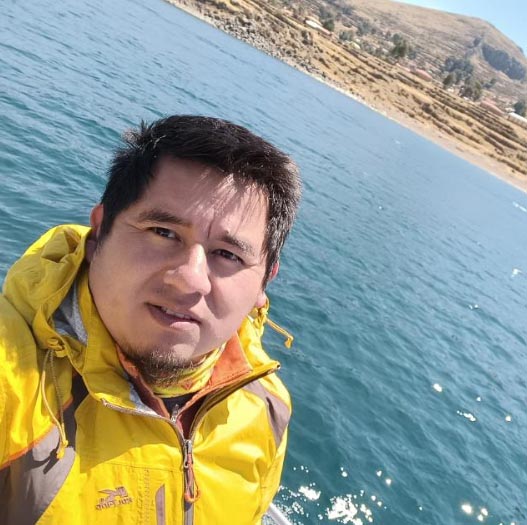
Edwin Caviedes Profesional guide
Lorem ipsum dolor sit amet, consectetur adipiscing elit. Vivamus sceler neque in euismod. Nam vitae urnasodales neque in faucibus.
Previous Post
The bedding was hardly able

Relson Dulux
Hello, We’re content writer who is fascinated by content fashion, celebrity and lifestyle. We helps clients bring the right content to the right people.
All Categories
- Manage Listings
- Address and Map
- Reservation Requests
- Your Reservation
- Search Results
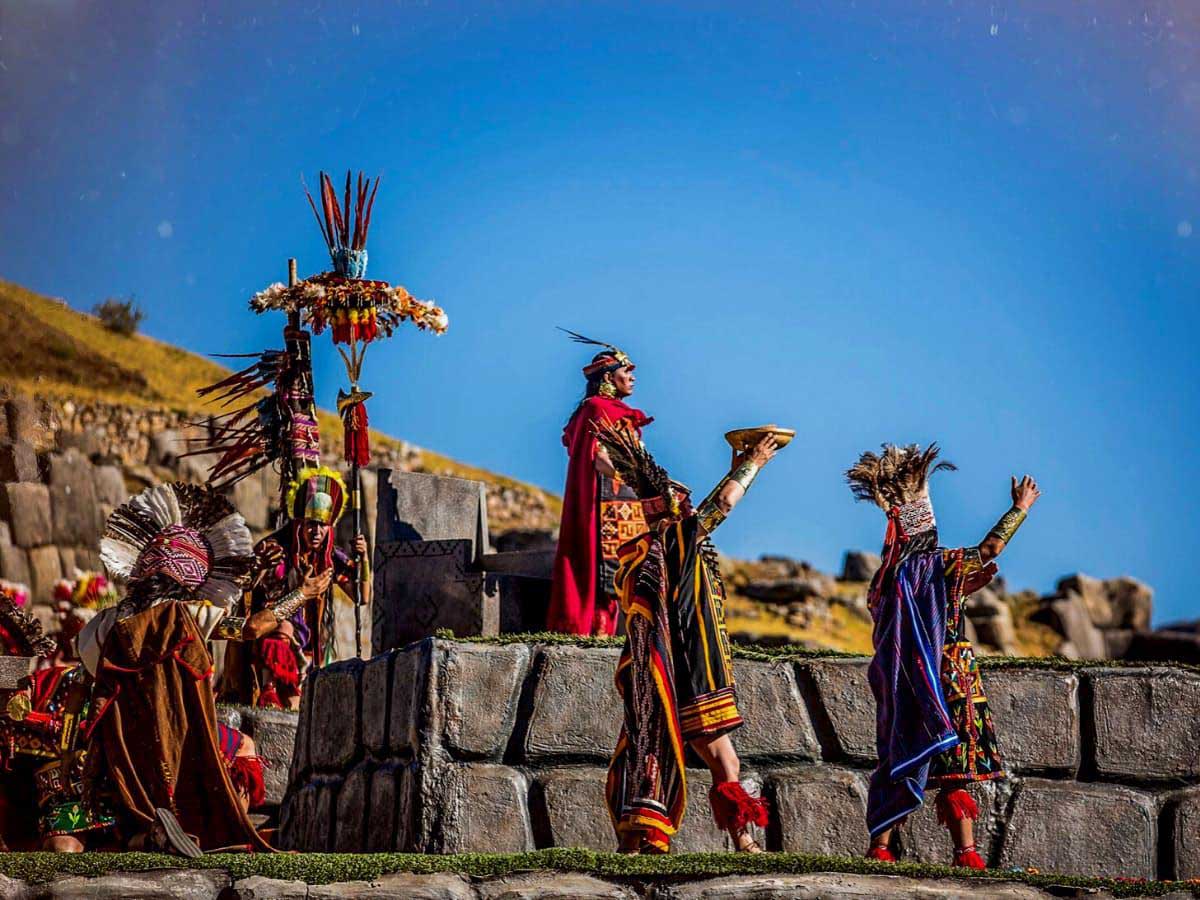
Condor Bird in Peru: The largest bird in the world
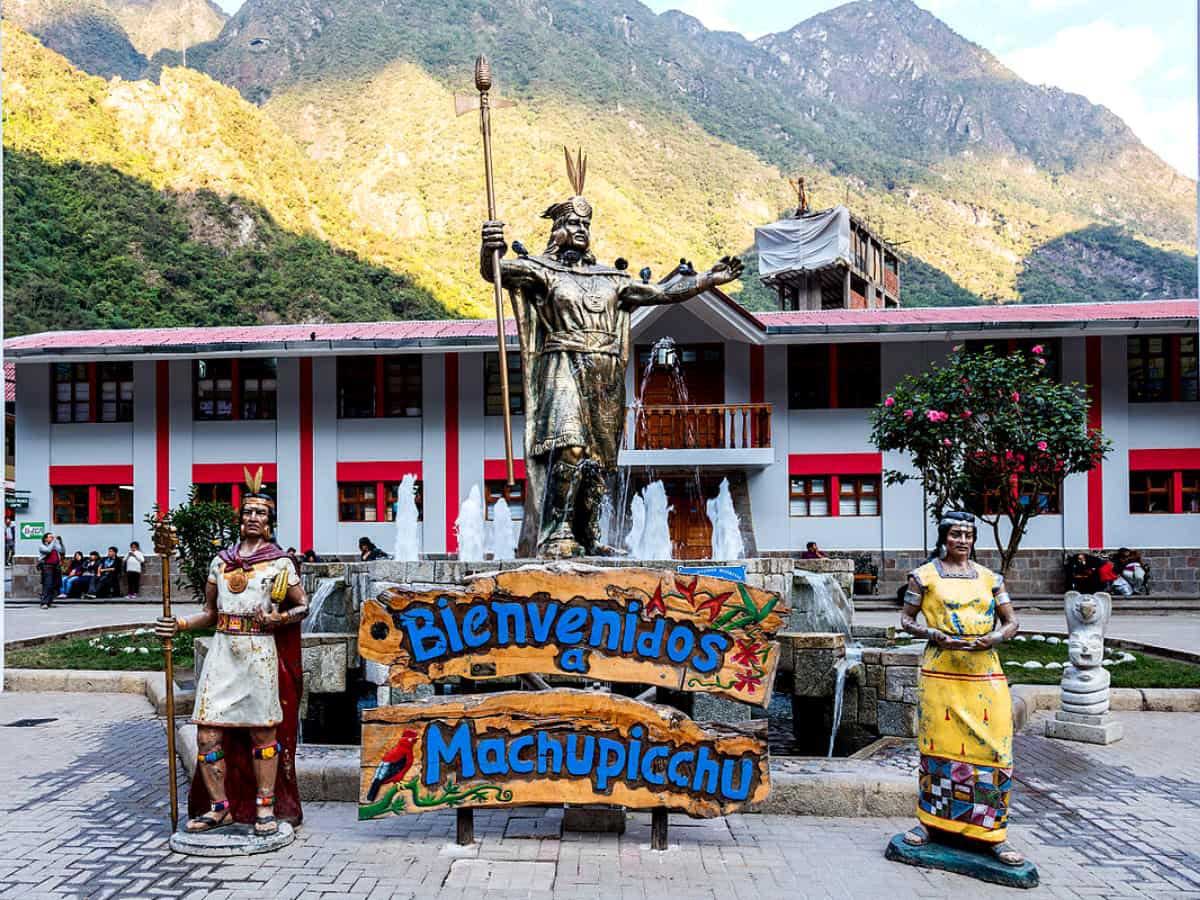
Aguas Calientes: Everything you need to know before to visiting Machu Picchu village
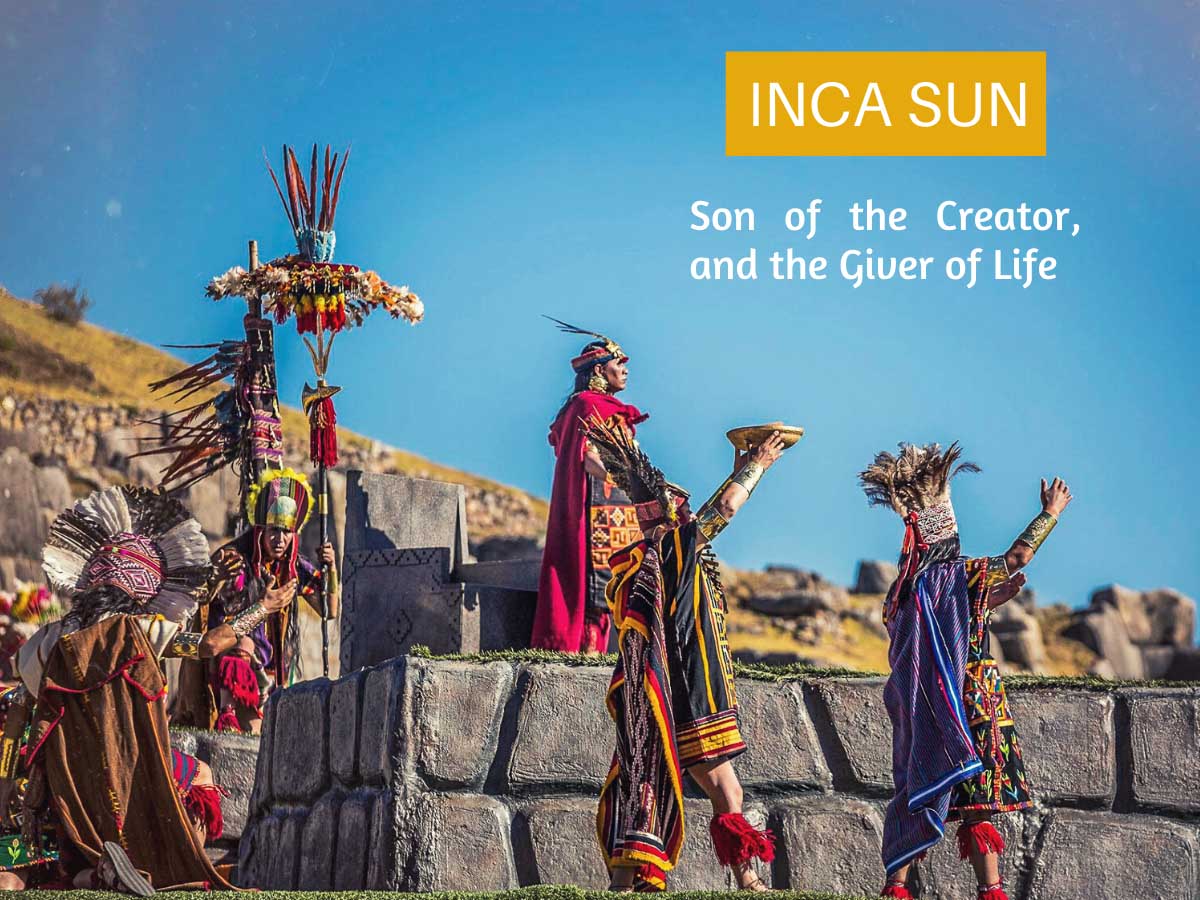
Inca Sun God
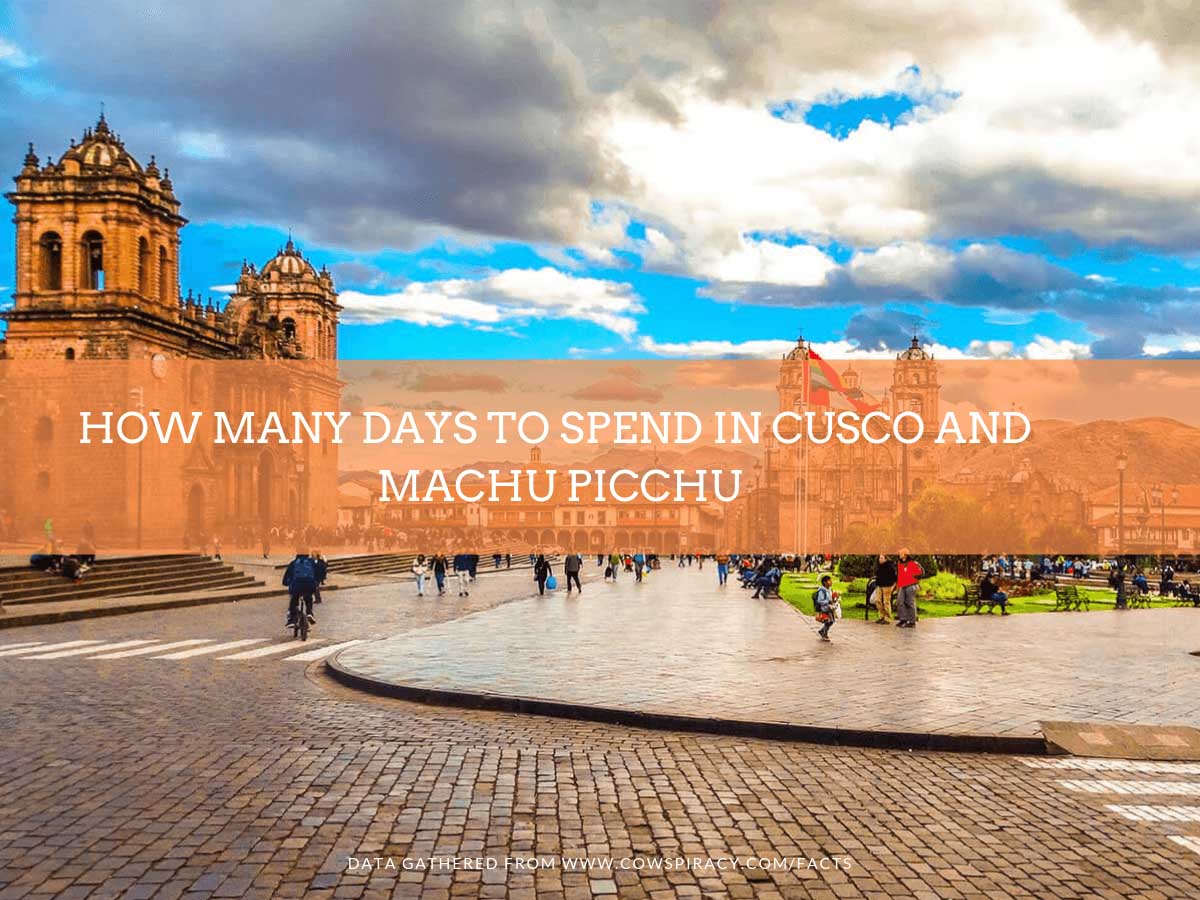
How Many Days to Spend in Cusco and Machu Picchu
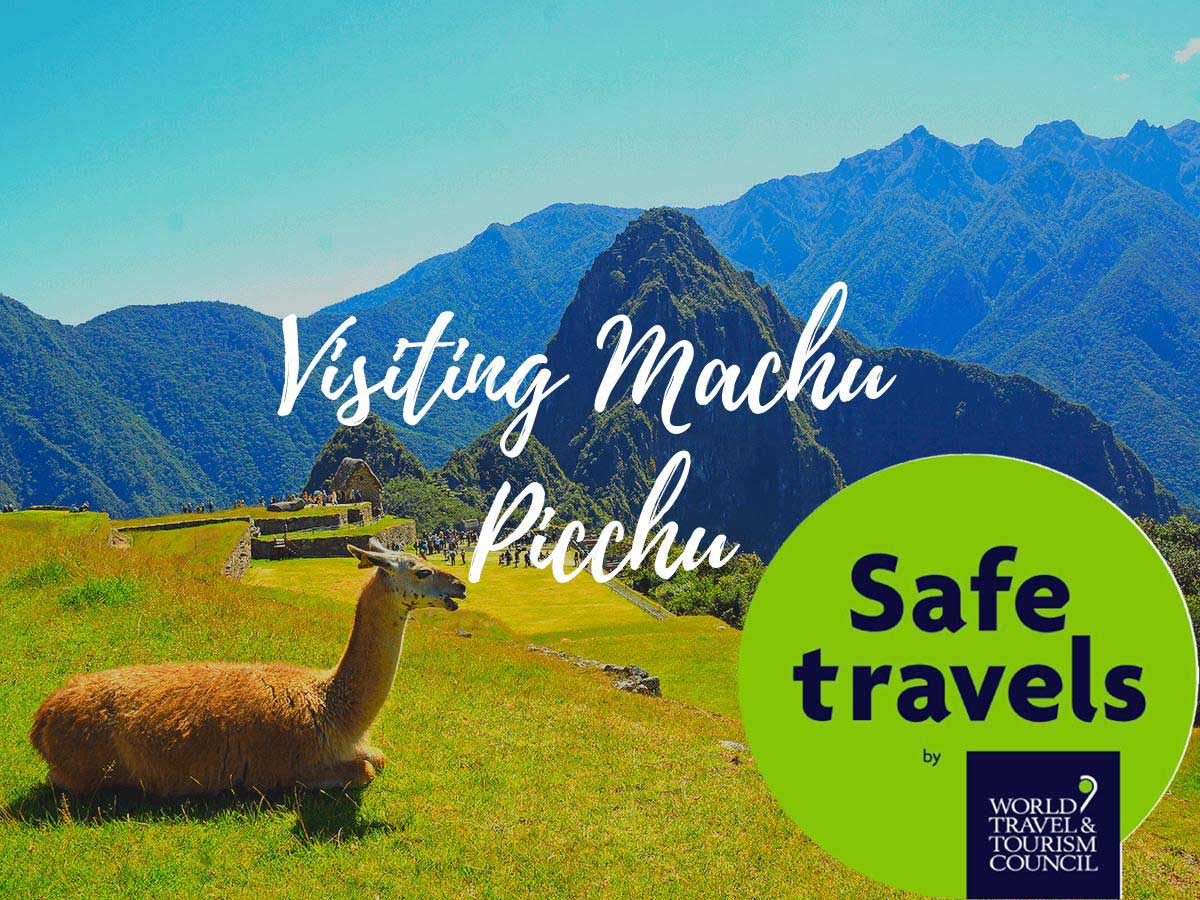
Machu Picchu to Close: Ultimate Upgrade 2024
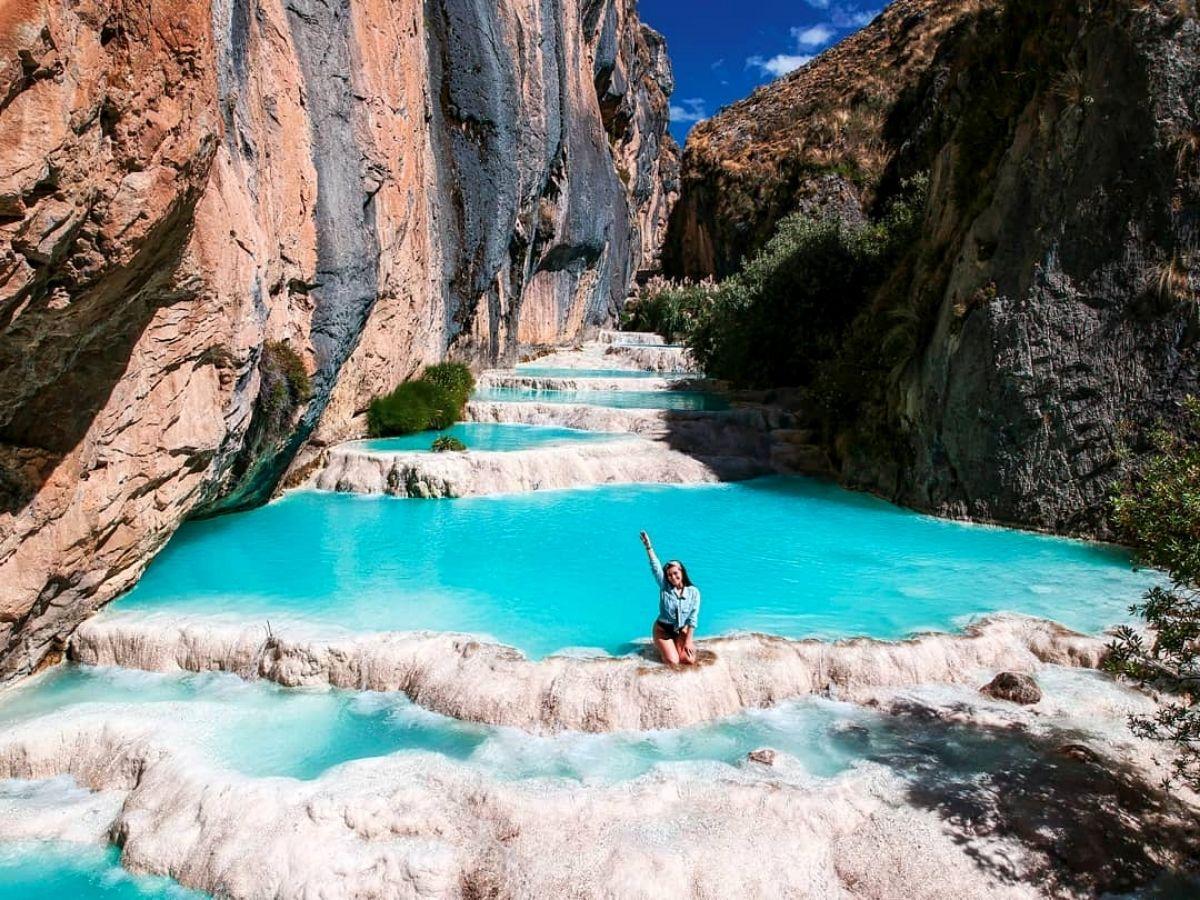
Millpu: Get to know these beautiful natural pools
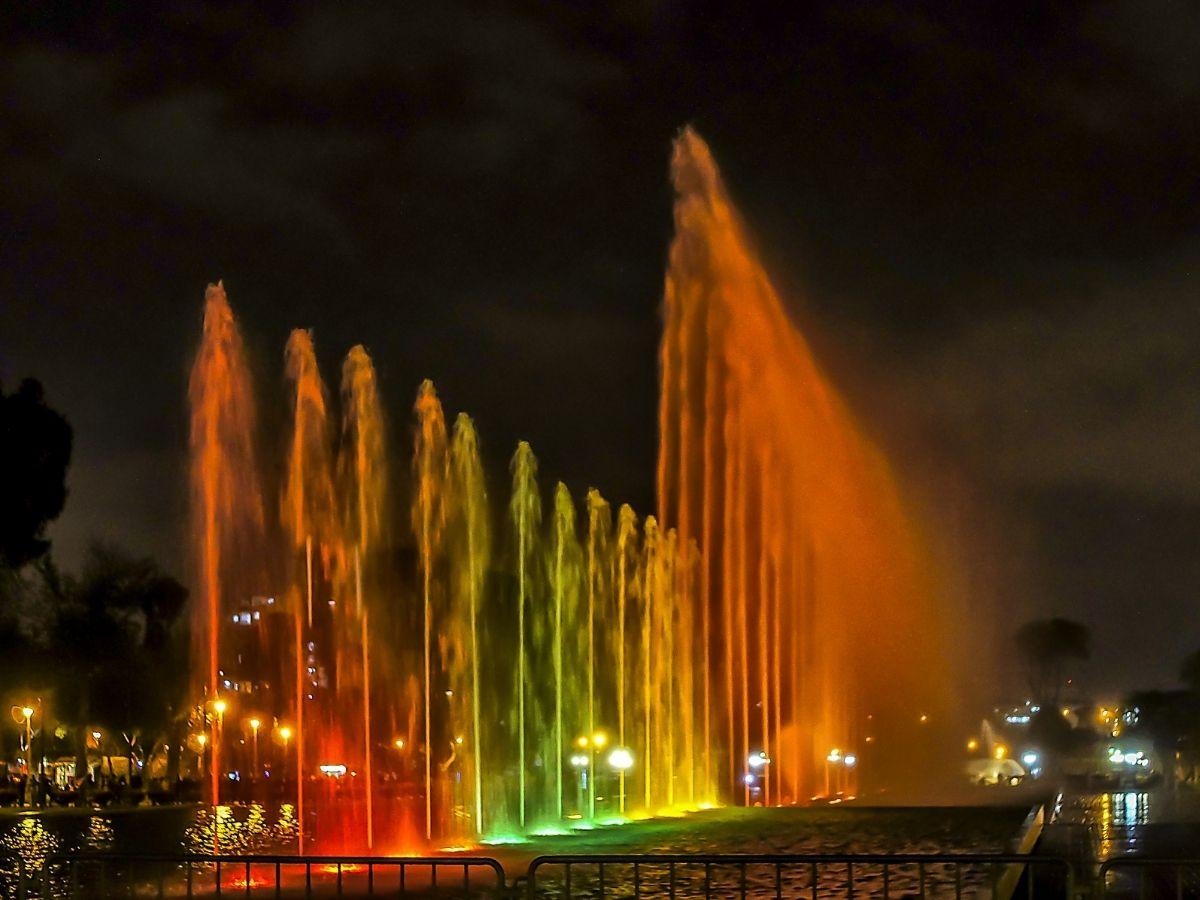
Magic Water Circuit of the Reserve Park
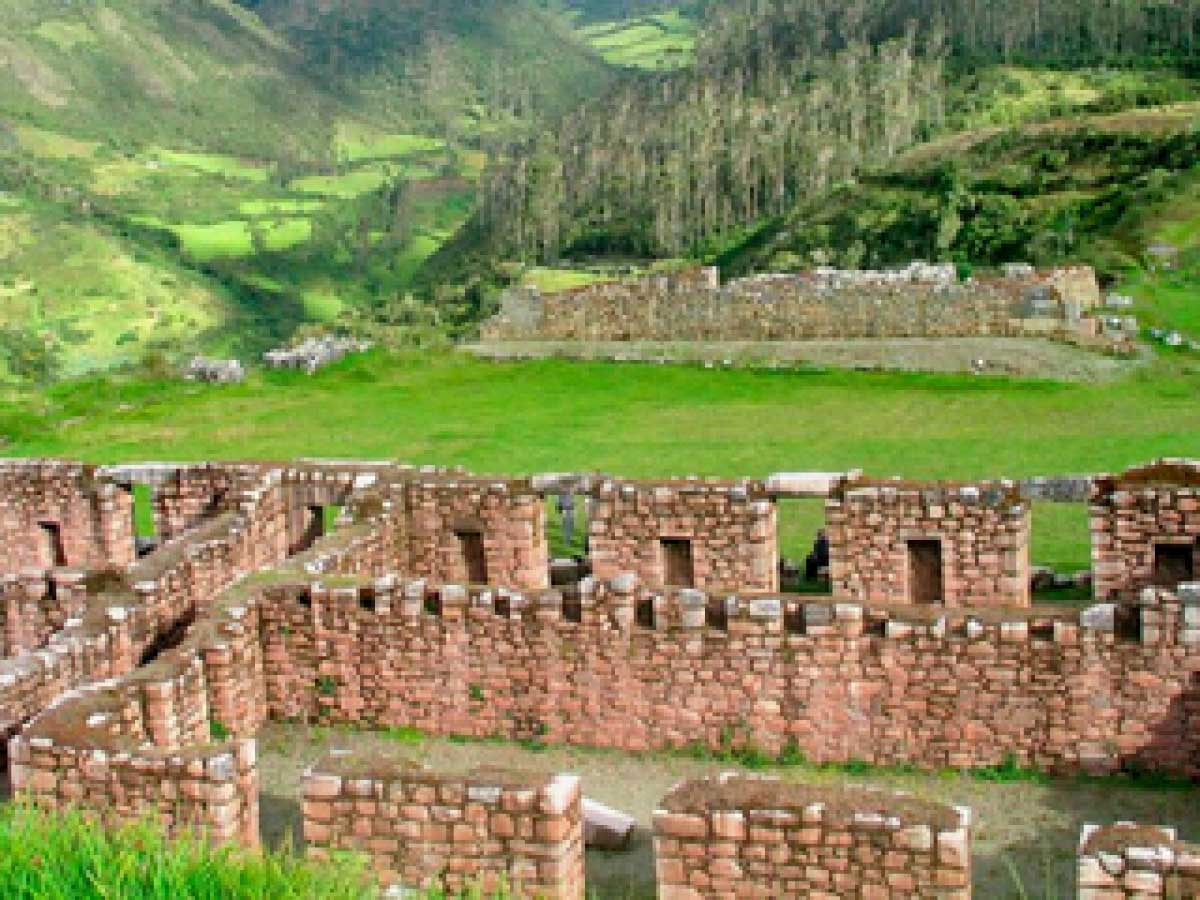
Vilcabamba: know the lost city of the Incas in Cusco
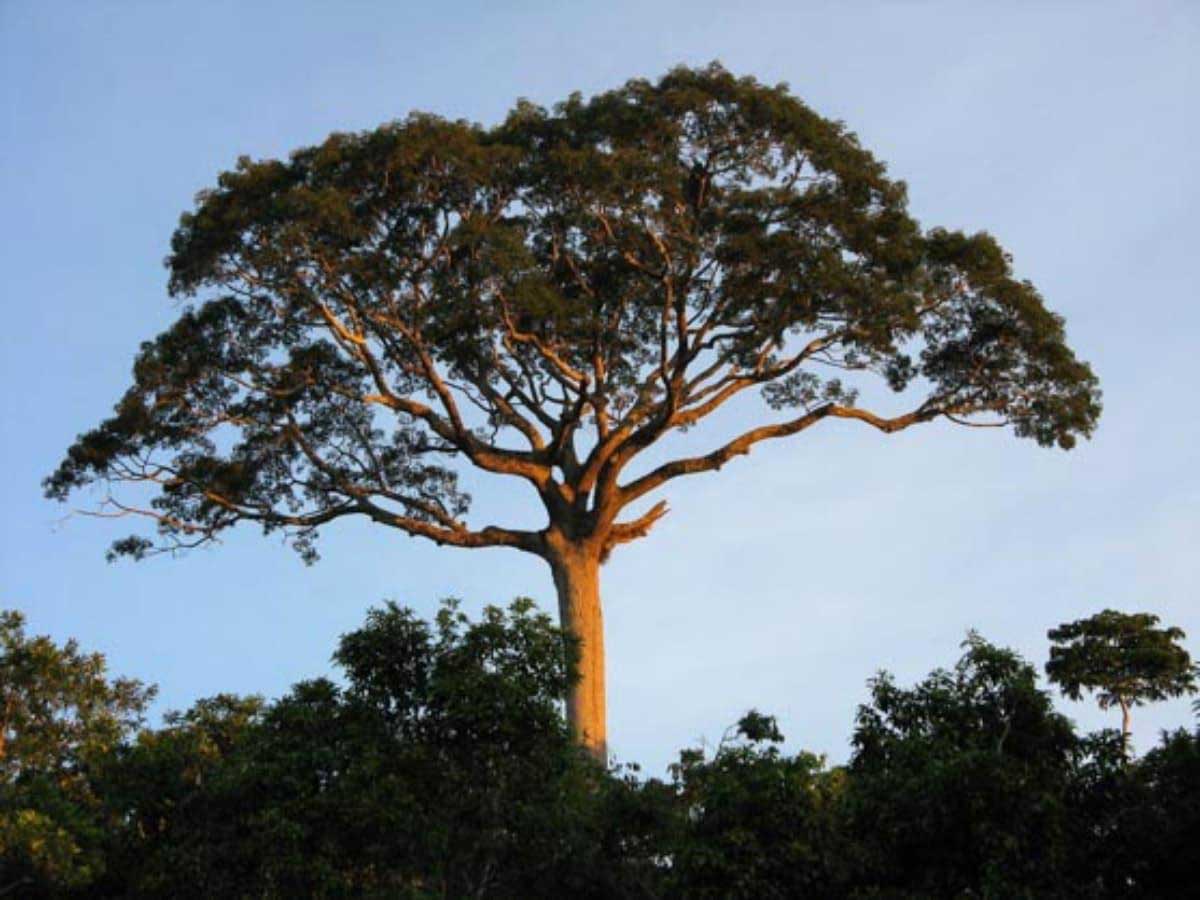
Native Trees of Peru
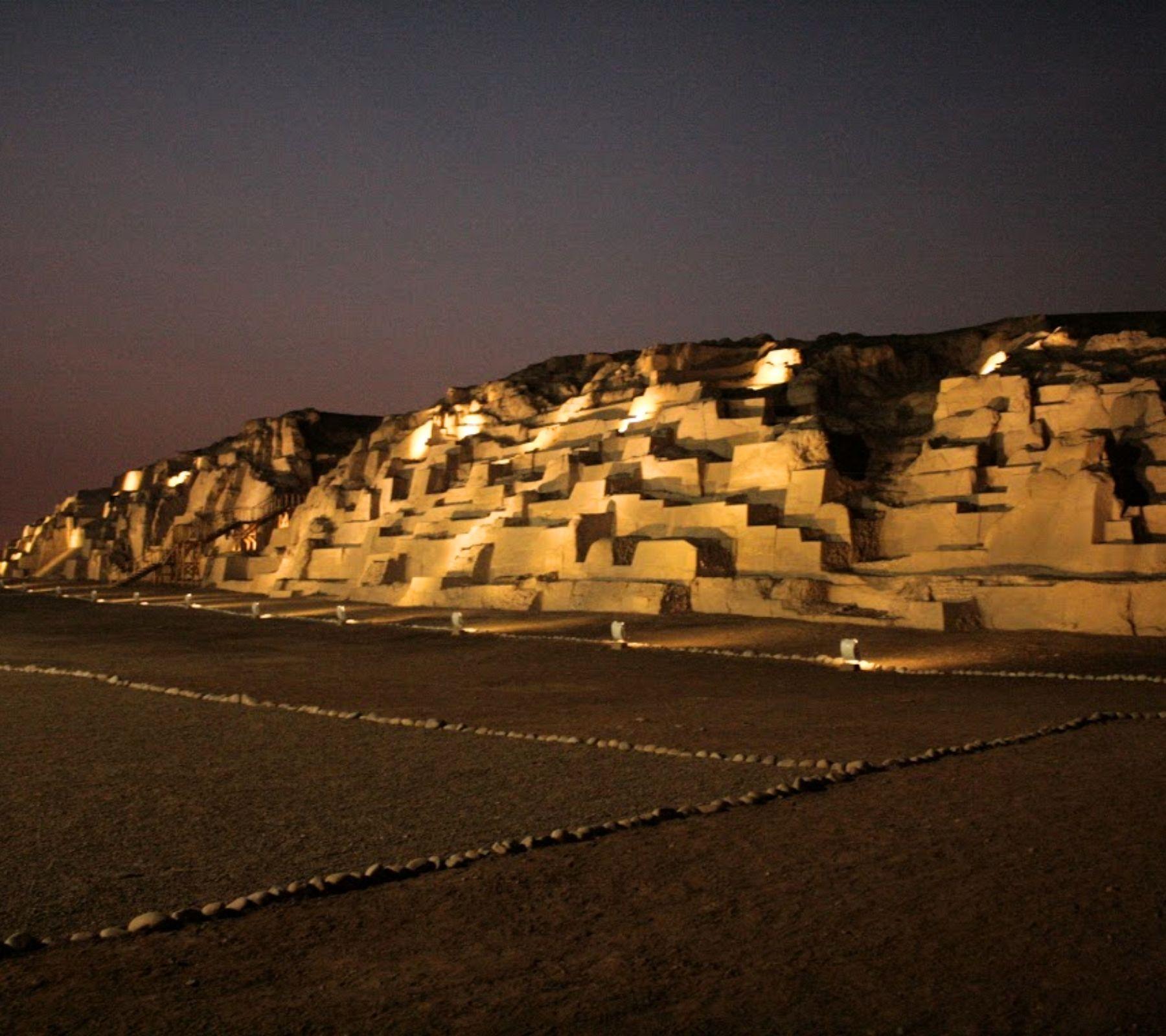
Mateo Salado Archaeological Complex
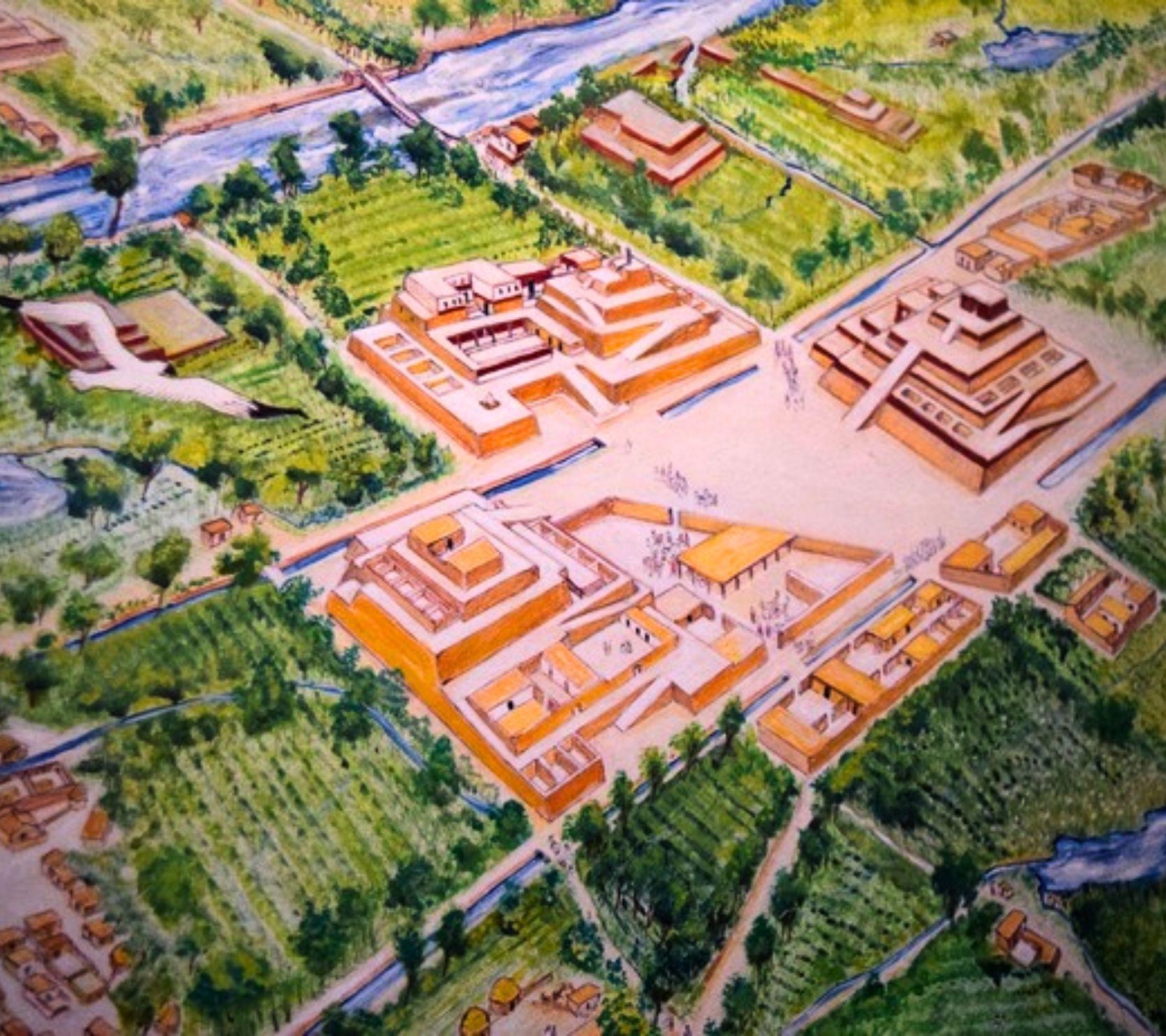
The Rimac valley: the name, origin and route
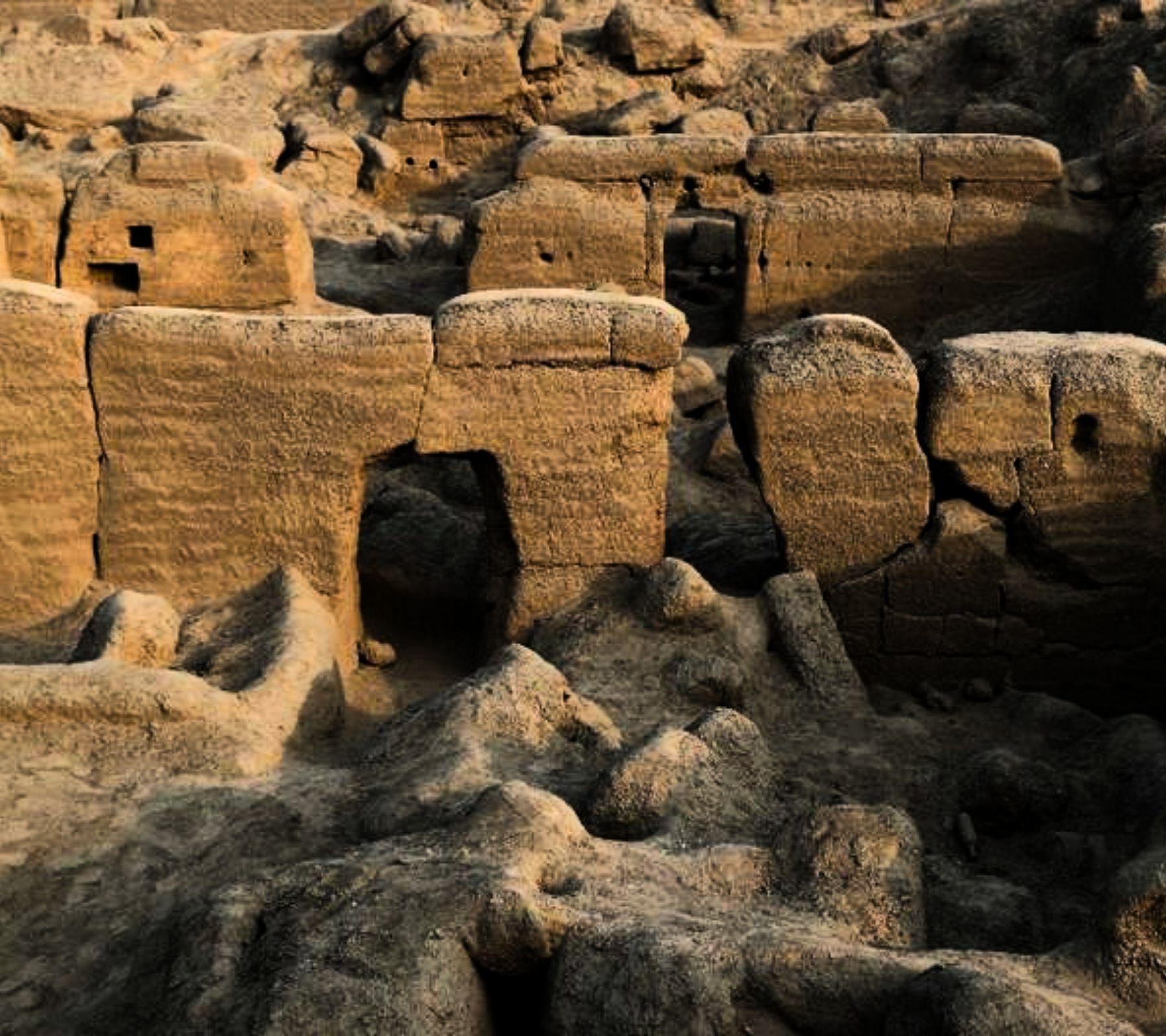
Tourism in Cajamarquilla Archaeological Site
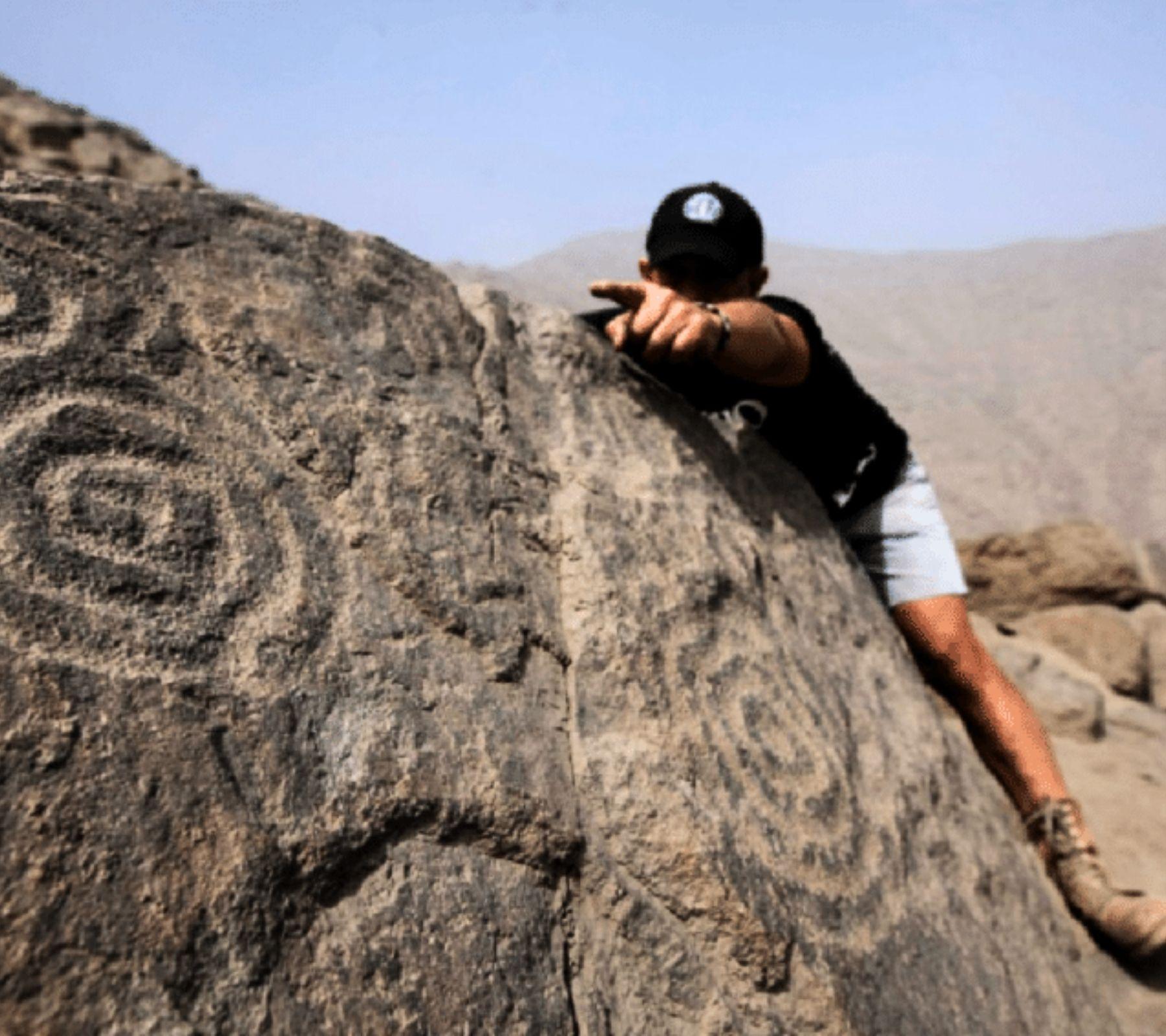
Monuments of the Chillon Valley: Cerro Culebra
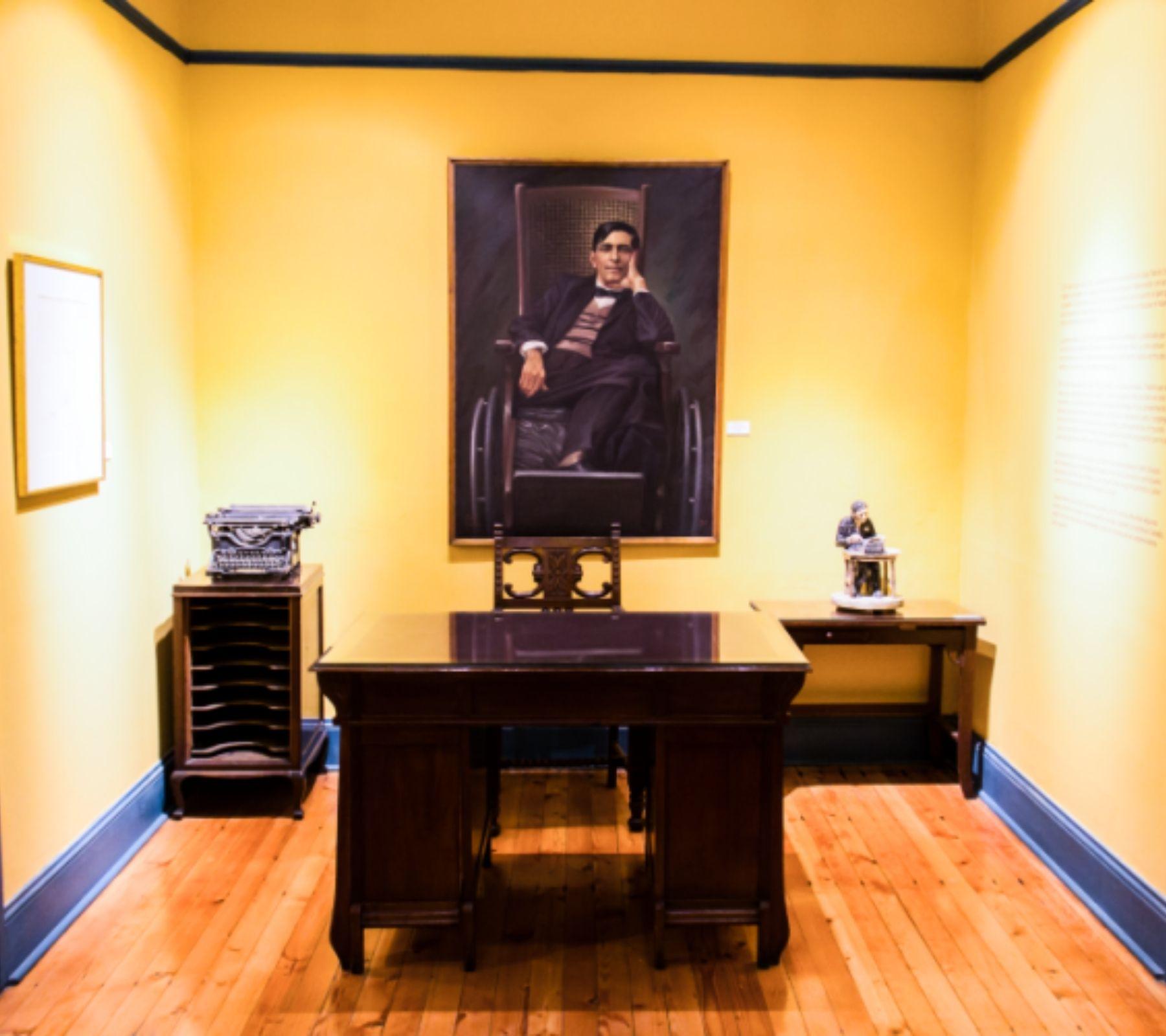
Jose Carlos Mariategui Museum
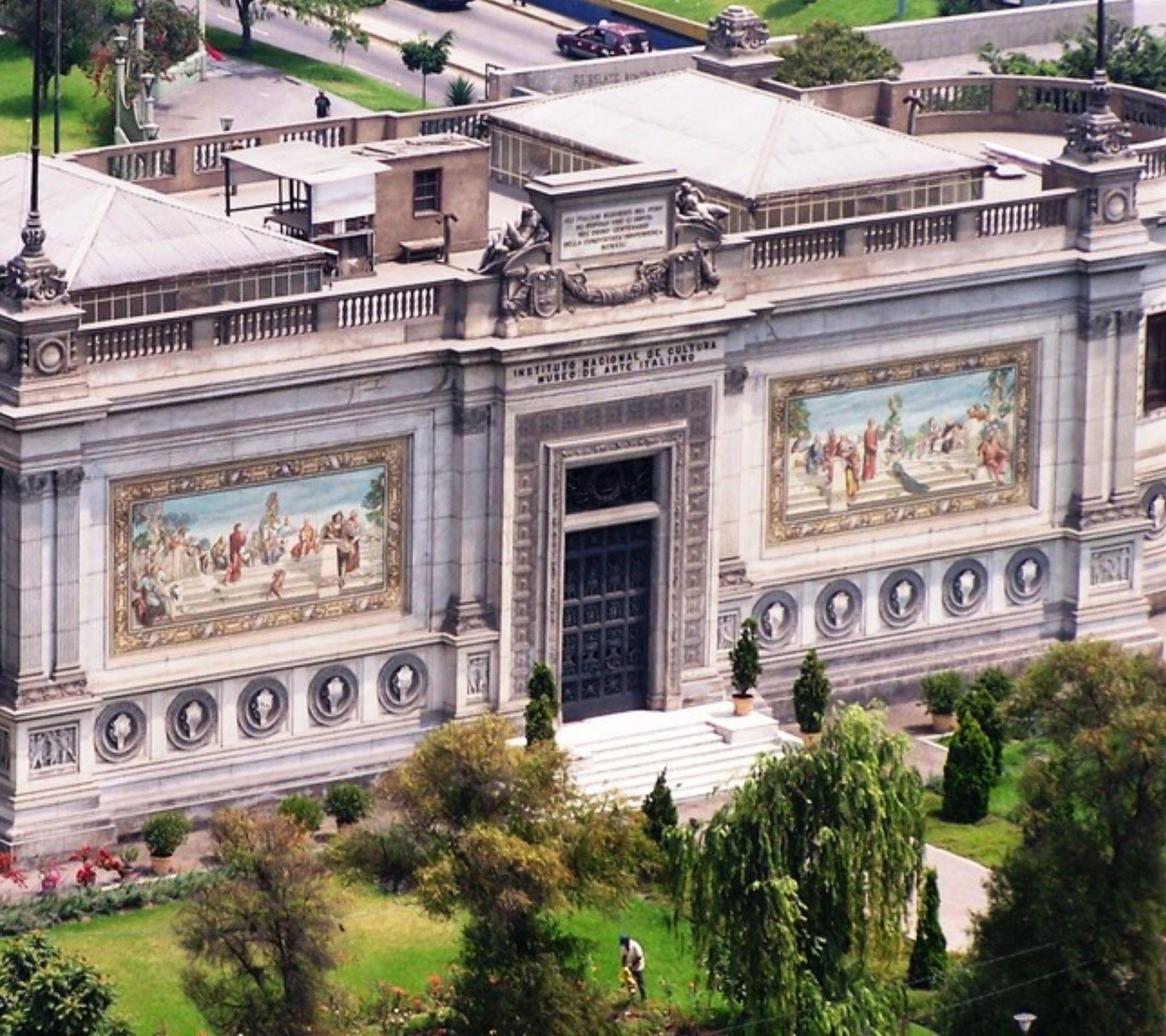
Museum of Italian Art
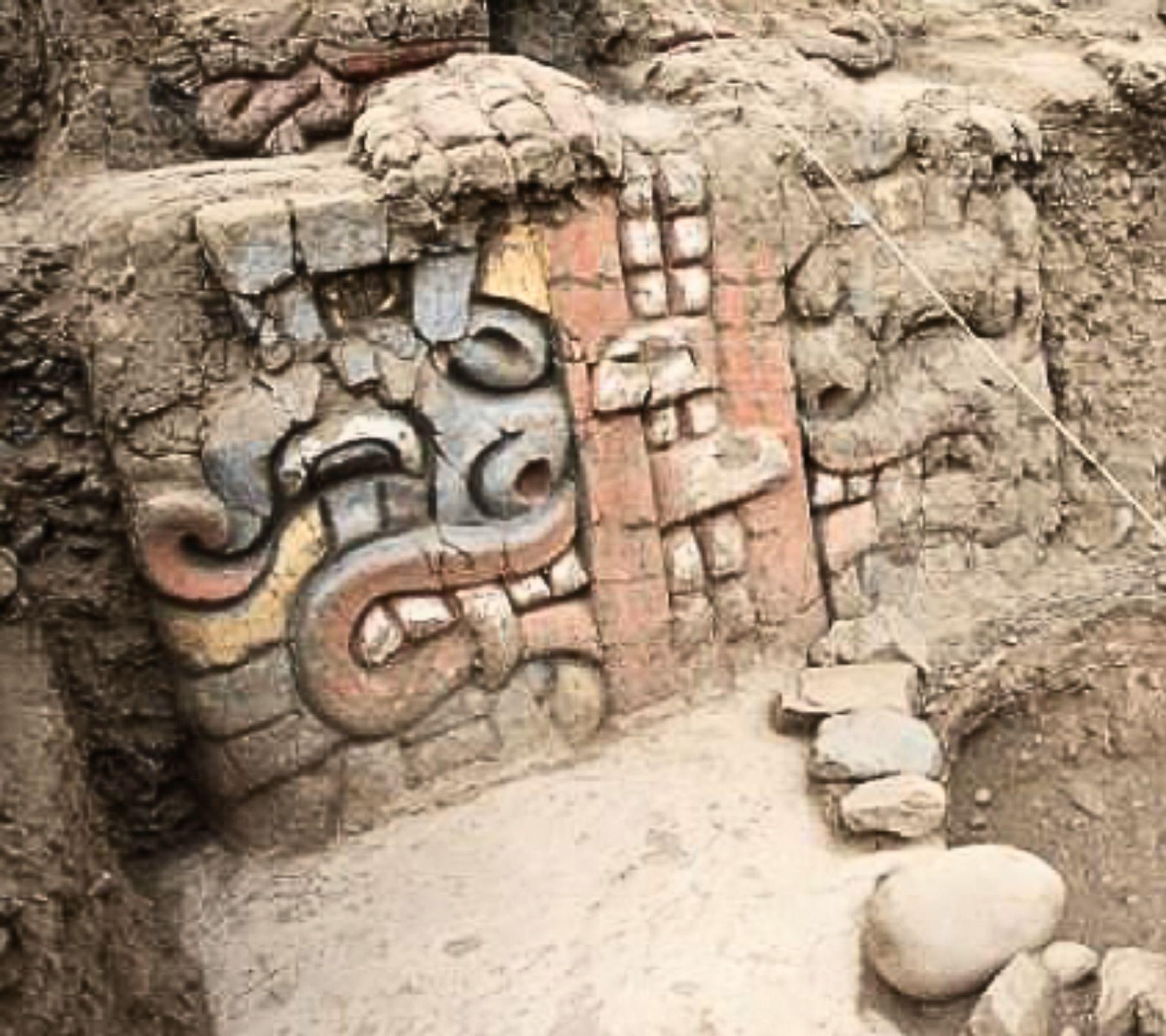
Tourism in Huaca Garagay
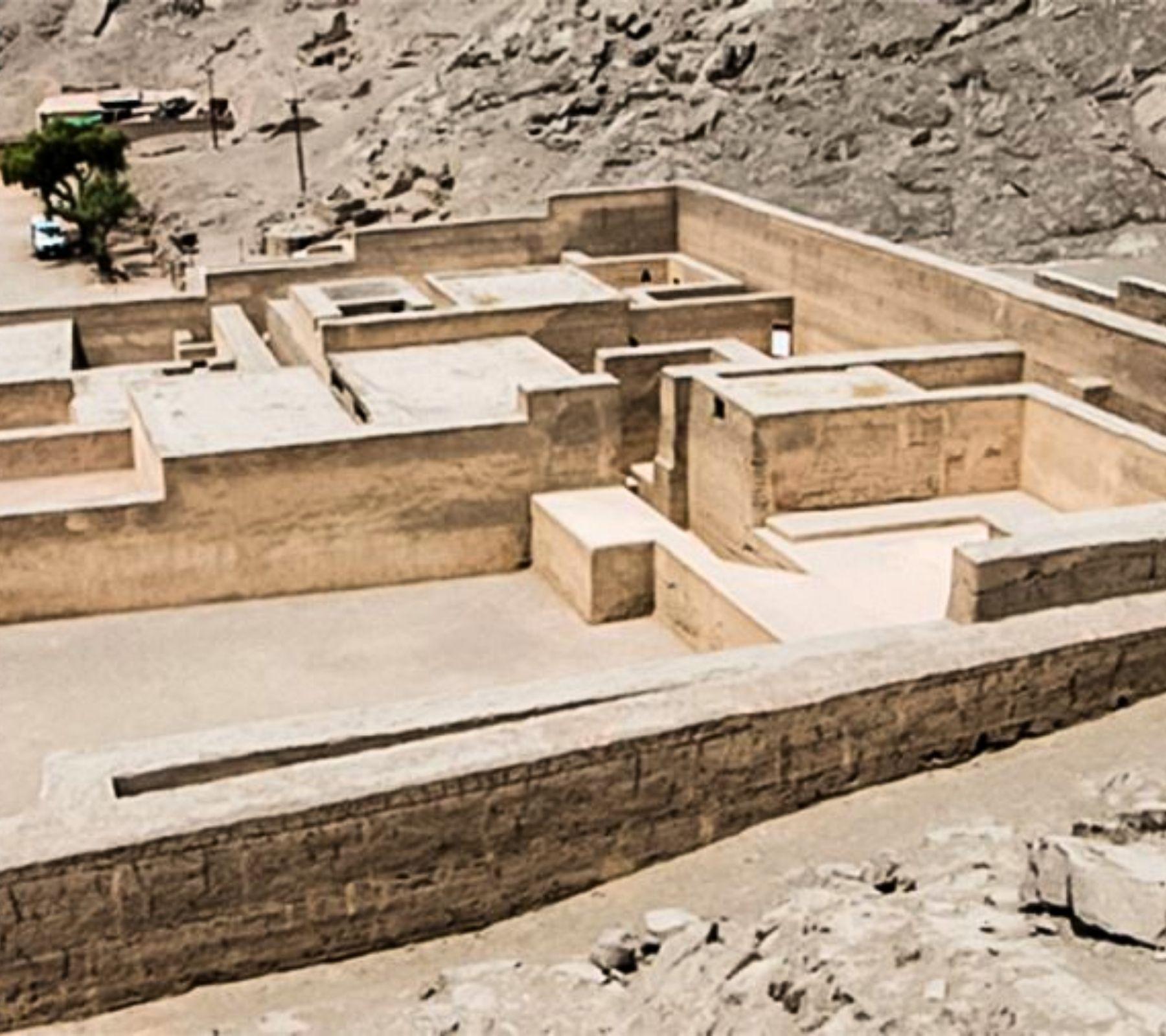
Arturo Jiménez Borja Site Museum - Puruchuco
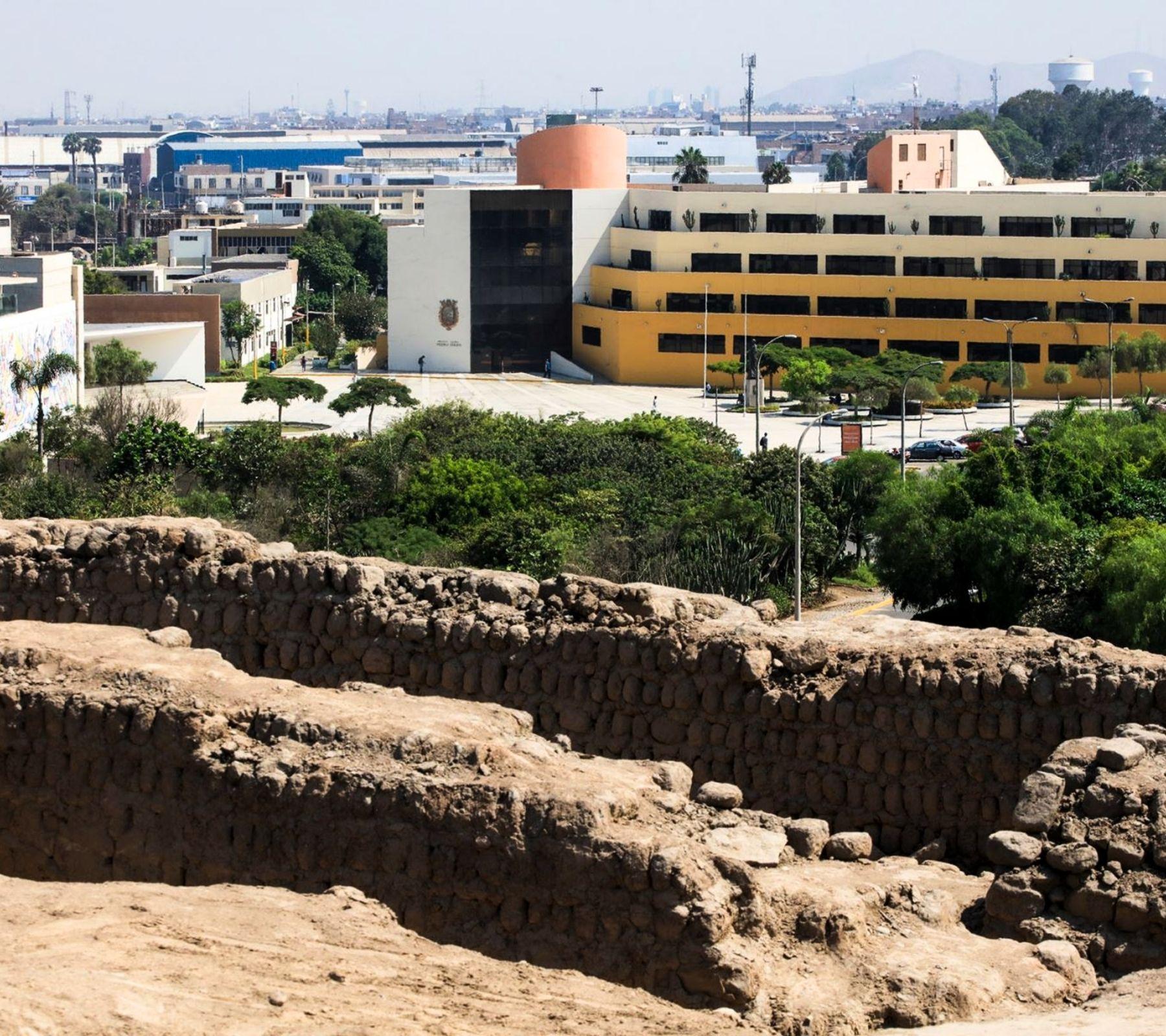
Huaca San Marcos
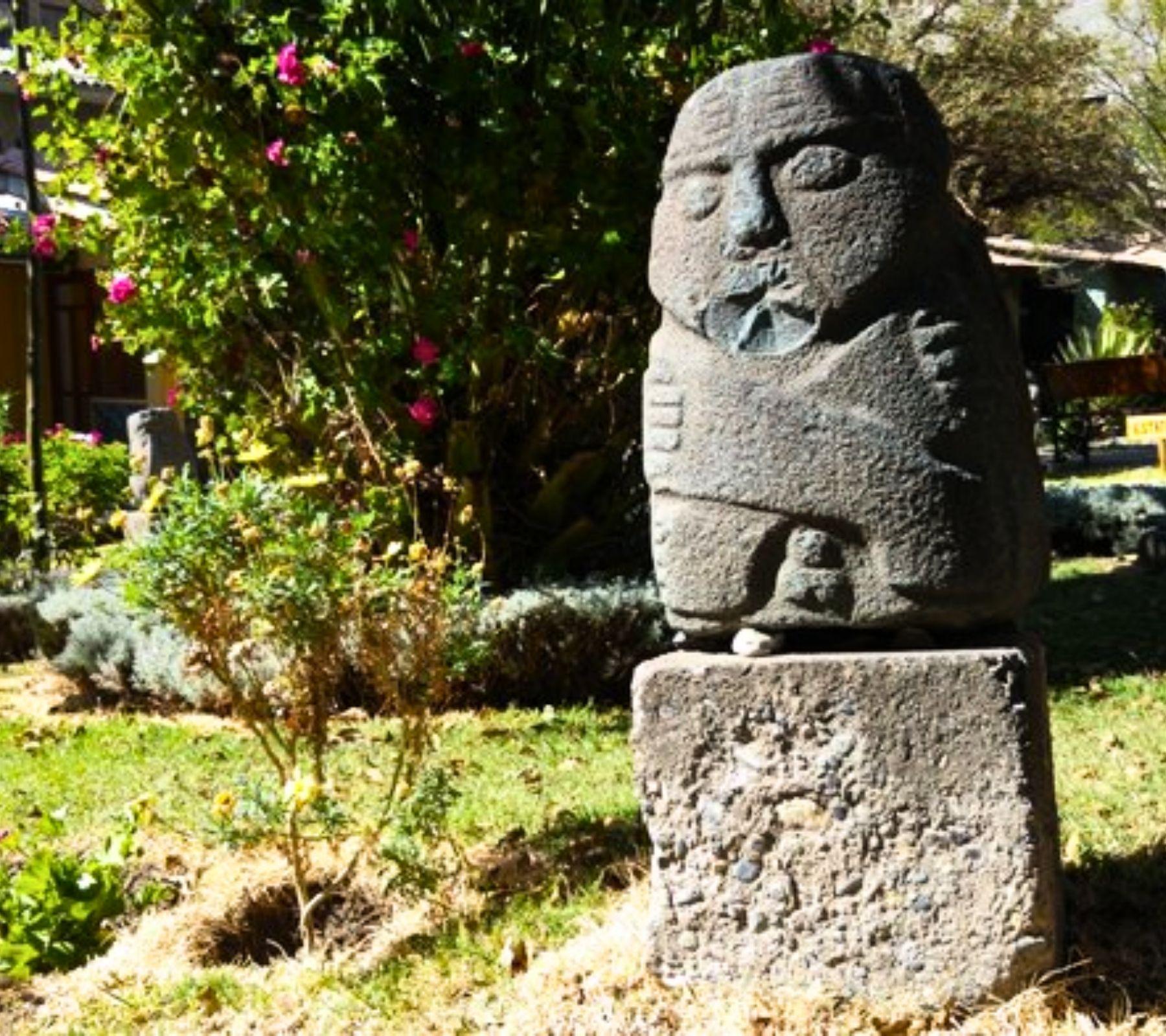
Archaeological Museum of Ancash "Augusto Soriano Infante"
Top destinations, explore top destinations.
Tierras Vivas Travel offers the best all-inclusive Inca Trail to Machu Picchu tours in Peru.
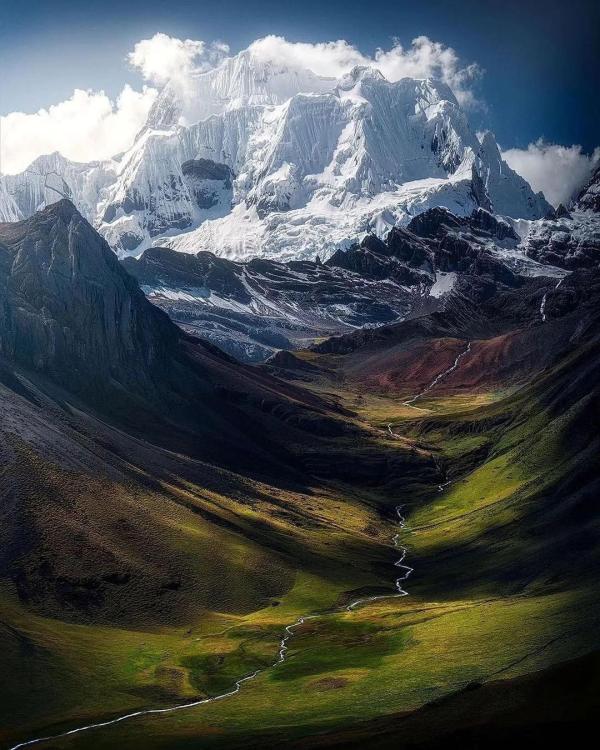
Trekking & Hiking
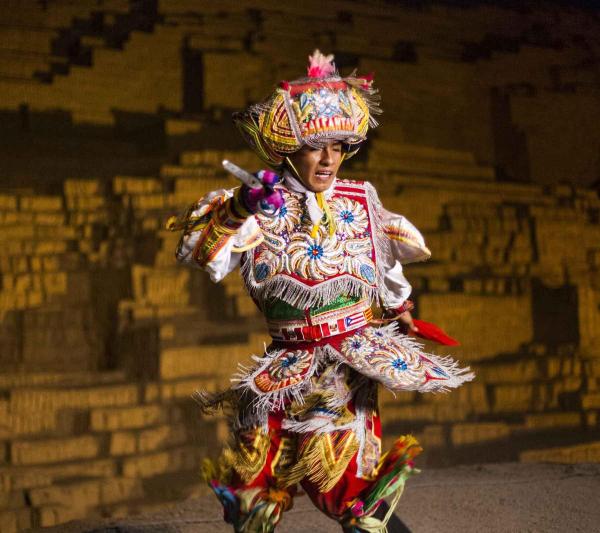
Culture / History
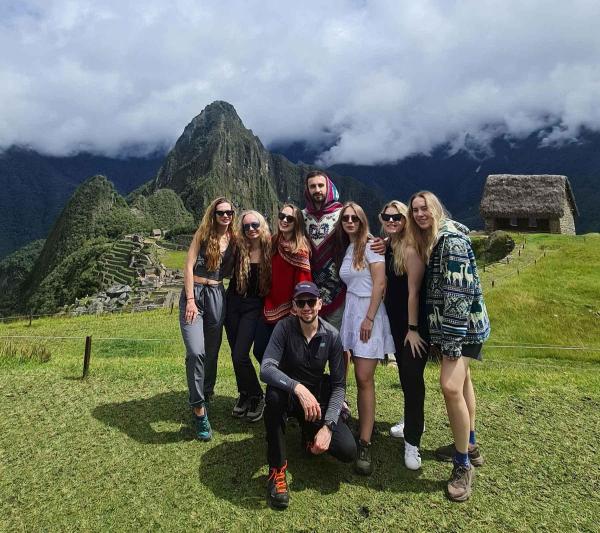
Adventure Holidays
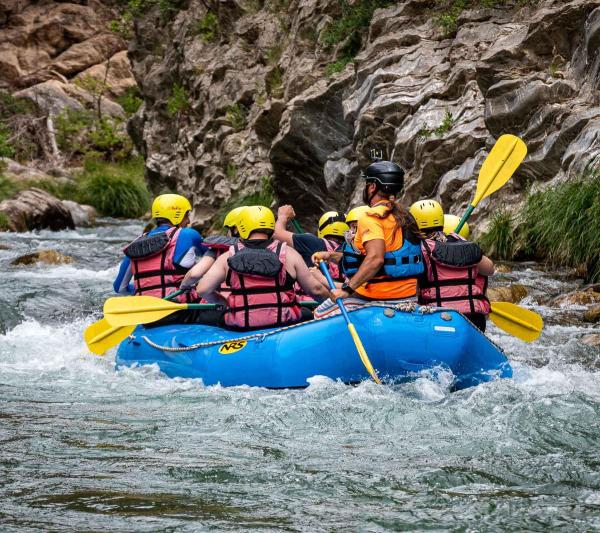
Mixed-Adventure Tours
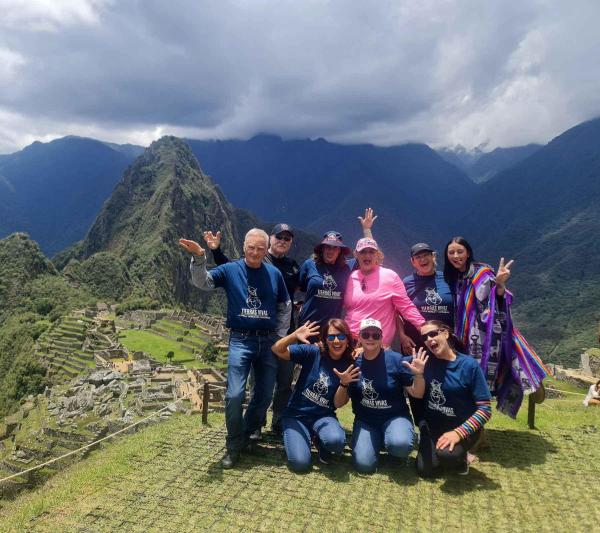
Family Travel
Don't have an account? Register
Already have an account? Login

IMAGES
COMMENTS
If there is one article of clothing made for travel in Peru it's the wool sweater. Sweaters can make a great travel outfit staple. They're comfortable, stylish, and warm. It doesn't matter the season either as most of Peru is temperate and remains cool year-round. This means comfortable day time temperatures during the day and chilly ...
What to Wear in Peru: Spring. Weather. Trujillo has the best weather from January to April, with March being on average the warmest month. Average highs in February and March hover around 79°F / 26°C and lows around 61°F / 16°C. November, December, and January are not too far from these temperatures.
Clothing Tips for Men. For versatile and stylish casual wear, try the Madda Fella range of shirts, shorts and polos. For great versatile travel jackets with multiple pockets including RFID security options, we love the SCOTTeVEST range. Pack for the Weather. On the coast in winter (June, July, August and September) it can be cool. At the same ...
Peru is world famous for hiking. No matter the length of the hike, a few packing tips are key. Bring clothes you can layer, as the temperature can vary drastically from day to night. Comfortable athletic gear and pants that can zip into shorts are a popular option. Having the right hiking boots is also key.
What to Pack to Peru. Q: I need a travel backpack and a trekking day backpack, what size would be appropriate for me? (110lbs, 5'0) A comfortable backpack for your height would be a 40L bag. While you can probably carry a larger bag of up to 65L, the bag will be larger than you! For a day pack, try not to go over 25L.
This is why I recommend having a wardrobe that basically covers every type of weather. That way you aren't wondering what to bring to Peru when you're in the middle of a rainstorm! What is the best month to travel to Peru? Winter in Peru is usually the best time to go. Because Peru is in the Southern Hemisphere, Peru in June, Peru in July ...
2 Pants. Your Machu Picchu packing list should include a pair of trekking Pants and one pair of leggings or fitness/yoga pants. Take a pair of travel pants for the trek and leggings or yoga pants for the final day when you want something clean. Choose trekking pants or pants you would wear to work out.
Ultimate Peru Packing List: Tried & Tested! April 20, 2023. By: Steph Parker. 30. Apr. Oh Peru, the land of magic, mysticism, mountains and Machu Picchu! And that's not forgetting Peru as the land of the Amazon jungle, the Pacific coast, the Arequipa Desert, Lake Titicaca, the Inca heartland, some amazing colonial cities and a ton of epic ...
When I traversed this beautiful region of Peru back in 2021, I discovered that the right wardrobe choices enhanced not only the journey's comfort, but also its deeper connection to nature. Whether mingling in the bustling markets of Cusco or wandering the serene trails of the Sacred Valley, I am excited to share all my discoveries and ...
A whole slew accessories inspired by sunshine and easy living ideals - feather armlets, flower crowns, dreamcatchers, and hamsa necklaces - lent the finishing touches to my wardrobe for Peru. Three things that made Peru stand out were the panoramas, the people we met along the way, and the journey.
Due to Peru's diverse landscape, with a desert in the west and rainforest and mountain ranges in the east, what is needed for your wardrobe will depend on where you plan to go. Lightweight clothes that dry quickly are usually best, but make sure to pack some warm and waterproof pieces too, as the weather can change rapidly.
2 tank tops. 3 t-shirts. 1 wrinkle-free dress. 1 pair of shorts. 2 jeans (a skinny and boyfriend) Enough underwear and bras. One pair of pj pants and two pj tops. Hiking & Outdoor Clothing. If you're going to do any hiking, you'll want to be prepared for the terrain.
Use code LINDSEYPULS for 10% off your order. I also brought along a flannel shirt as an extra layer that I really ended up loving! I did also pack one "nice" travel shirt for dinner and to wear under my layers. 6.) Hiking Pants. Having good hiking pants is just as important as having a good jacket!
Travel Pillow - A neck pillow may also be useful for journeys in Peru. These are all pretty comfortable if you look for one with good reviews! Eye Mask - This may help you sleep on board as it blocks out light. Pure silk is the softest, most comfortable option & this one comes in around 30 colours.
1 pair of shoes/trainers/sneakers for day-to-day use. 1 pair of flip-flops/sandals. 1 lightweight waterproof jacket (or poncho) 1 warm jacket or lightweight fleece for cold weather. 1 pair of trousers/pants/jeans for day-to-day use. (1 pair of convertible trousers/pants that turn into shorts; not essential, but handy and good for trekking) 1 ...
Keep in mind any differences in voltage (you will find 220V in Peru) and, if needed, also take a converter. #26 Headlamp. One of the items that we highly recommend you take to Peru is a headtorch. As long as you stay in hotels, you should have light most of the time. But if you go hiking or travel to the Amazon, you will need to bring your own.
A Lliclla is usually a textile that covers the back and shoulders of the women of Peru. These are usually secured in the front with a pin or Tupu or simply by wearing it tied. This Peruvian traditional piece of clothing is also used to carry children on the woman's back. Both men and women often use it to carry cargo.
In Peru, people wear ponchos, dresses, blankets, sweaters, layered skirts, tunics, hats, chullos and other native pieces of clothing. The traditional costume of Peru is very colorful and bright, it is beautiful and very original although the clothes are quite thick. Tourists wonder what do people wear in Peru, and then get admire the beauty of ...
Pack two short-sleeved T-shirts, two long-sleeved T-shirts and an undershirt. Pack a fleece travel vest with zippered pockets for keeping warm and storing your money and passport on your person at ...
The K'eperina. The K'eperina. Next on the list of items to dress like a local in Cusco is the "K'eperina". This item is a bit like the Lliclla. The main difference is that it is used to carry things on your back like a baby. Unlike the Lliclla, both men and women wear the K'eperina, as it does serve a useful purpose.
Cool and Comfortable Clothing: The city can be warm during the day, so make sure to pack cool and comfortable clothing. T-shirts, short-sleeved blouses, and lightweight pants are ideal for exploring the city without feeling overwhelmed by the heat. Appropriate Footwear: Lima is a city that invites walking, so a pair of comfortable shoes is ...
A clear example of traditional Peruvian clothing is the classic Peruvian hat called chullo or the poncho, an outer garment worn to keep the body warm, which has become representative symbol of our country and customs. The tipical closthing of Peru for the women are the following: Lliclla. Chumpi. Jobona.
A 15-piece travel capsule wardrobe is the perfect foundation, and will work for most trips. If you travel frequently, or will be gone for a long period of time, add in a few extra pieces to give yourself even more versatility. The 5-4-3-2-1 Packing Method. Which 15 pieces of clothing go in a travel capsule wardrobe?